It’s been just over a year since the first Suunto Ambit came out (which for clarity I’ll use the term Ambit1 during this review), and during that time Suunto has made impressive progress on the original unit through a series of pre-announced and predictable (and even on time!) firmware updates. Today, Suunto has officially announced their latest addition to the lineup, the Ambit2 and Ambit2 S. With the new Ambit, Suunto is squarely taking aim at not only the ultra-running and hiking market that the Ambit1 targeted, but now – the triathlete. It introduces both indoor and openwater swimming functionality, as well as multisport mode. With a slew of other features, make no mistake that this is aimed directly at the Garmin FR910XT.
But, how well does it work? And can it knock the FR910XT off the top spot? Well, I’ve spent a lot of miles with the watch recently, and am here to give you all the details: Good, bad, and ugly.
Because I want to be transparent about my reviews – Suunto sent me two final retail units to try out (Ambit2 and Ambit2 S). Once I’m complete here, I’ll send this back to Finland and then go out and buy my own (to be able to support y’all in the comments section down the road). Simple as that. Sorta like hiking in wilderness trails – leave only footprints. If you find my review useful, you can use any of the Amazon or Clever Training links from this page to help support future reviews.
Lastly, at the end of the day keep in mind I’m just like any other regular triathlete out there. I write these reviews because I’m inherently a curious person with a technology background (my day job), and thus I try and be as complete as I can. But, if I’ve missed something or if you spot something that doesn’t quite jive – just let me know and I’ll be happy to get it all sorted out. Also, because the technology world constantly changes, I try and go back and update these reviews as new features and functionality are added – or if bugs are fixed.
So – with that intro, let’s get into things.
Unboxing:
Because I’m covering two slightly different variations of the Ambit in this post, I’ll be doing two unboxing’s below, somewhat in concert.
Here are the two models. The Ambit2 is on the left, and the 2S is on the right. Apparently there was a mix-up and they sent me the original Ambit1 box for the Ambit2 S. Nonetheless, here they are:
On the back however, you’ll see in the SKU that it does list the 2S on the right side for the lime one. Perhaps they were trying to recycle old boxes. Shrug.
Taking a detour for just the full Ambit2 model, here’s its inner box removed from the outer shell:
Inside, you’ll find the watch looking up at you:
Below the watch is a compartment with all of the accessories included. This will vary slightly depending on whether or not you picked up the variant with the heart rate strap. Otherwise, you’ll still find the USB charging cable, and the manual.
Here’s a closer look at the Ambit2 (Sapphire):
And the back:
Switching back to the Ambit2 S, here’s its inner/outer box:
Inside you’ll find the 2S just like Ambit2:
Inside the box of the 2S you’ll find the USB charging cable, the manual, and depending on which variant you’ve bought – the heart rate strap.
And the backside of the 2S. You’ll see it’s essentially identical on the back to that of the Ambit1, and the Ambit2.
Looking at the common accessories, you’ve first got the USB charging clip. This four-pin charging clip simply bites onto the unit itself, and can be powered via any old USB wall outlet you have lying around – or a computer.
Then depending on which bundle you bought you’ll also have the HR strap. This includes the strap piece, and the little pod that snaps in between it:
Here’s how it snaps into place on both sides (in this photo, it’s half-snapped on the left-side):
Note that the Suunto strap included is NOT ANT+. Meaning the strap included is not compatible with any ANT+ devices you may have, instead, only working with other Suunto devices over a proprietary variant of ANT. That said however, if you do have an ANT+ strap (say you’re converting from being a Garmin/Timex/etc…. user), then that will work with the Ambit lineup (all Ambits). Good deal, huh?
Finally, you’ve got the manual. Unlike most companies in the sports technology world however, Suunto’s manual is actually really detailed and very solid. And in nine languages.
Now that everything is unpacked, let’s go ahead and look at how it compares in size to other units.
Size Comparisons:
As you can see above, the watch face sizes are actually really similar across the most competitive units in this space: The Ambit’s and Fenix. Virtually indistinguishable. On the far sides we have other triathlon-focused watches with integrated GPS. At the far left is the Timex Global Trainer, then the Garmin FR310XT, then the Garmin FR910XT, then the Garmin Fenix. Continuing towards the right we have in silver the Suunto Ambit2 Sapphire, then the Ambit2 S Lime, then the original Ambit followed by the Magellan Switch Up. Both the Garmin FR910XT and the Magellan Switch up in these photos are utilizing the quick release kits.
Here’s a closer look at the three Suunto Ambits. Again, from left to right: Ambit2 Sapphire, Ambit2 S Lime, Ambit1.
What’s actually somewhat interesting is the height of the display. You’ll notice that the Ambit1 is the thickest alongside that of the Garmin Fenix, with the Ambit2 following, and the thinnest being the Ambit2 S. You’re looking at the airgap between the watches and the desk.
(Preemptive question and answer about previous section: If I send everything back, how is it that I have all these units for the rolling pins? Simply put: I buy them. Supporting the site through the links you see at the end helps with this. In recent months, Clever Training helps out with the majority of the unit re-purchases from their retail stock.)
Next is to note that the Ambit2 and Ambit2 S are slightly different in terms of thickness. Not a ton, barely noticeable unless you had them both and something like this to measure them:
As you can see below the Ambit2 (silver) is 1.74mm thicker than the Ambit2 S (Lime) – again, remember we’re talking millimeters here. I threw in the older Ambit1 (black) as well, which is .75mm thicker than the Ambit2.
Width-wise, all Ambit units are identical – I measured it as 49.89mm (excluding the buttons):
Then if we look at weight, the Ambit2 is heavier than the Ambit2 S as well. The Ambit2 is 93g, whereas the Ambit2 S is 73g. This comes from the addition of the barometric altimeter and temperature sensors, which adds 9g of weight between the Ambit2 S and the non-Sapphire Ambit2 (82g – not pictured):
While the above is the Sapphire model (for the non-S Ambit2), the non-Sapphire model is slightly lighter at 82g – identical to that of the Garmin Fenix.
And for reference, here’s the weight’s of the Ambit1 (78g) and the Garmin Fenix (82g):
Many folks ask about smaller wrists, so I always defer to The Girl’s opinion on this given her 5’2” height and small wrists. Her wrist size is 14cm (or 5.5 inches), my wrist size is 17cm (or about 6.5 inches). She did a couple of runs with the Ambit2 S.
In her case, she had to have it tightened down to the very last notch in order for it to be snug. Anything less and it was bouncing around.
For those curious about her thoughts – she actually didn’t mind running with the unit (she ran a few times with the Ambit2 S) ,and didn’t find it uncomfortable or too large (she’s run with the Garmin FR310XT and FR910XT previously, but is currently using the FR10).
In comparison, here’s what it looks like on my wrists. First, the Ambit2 S:
Then the Ambit2 Sapphire:
With that, let’s start running!
Running:
First up is pressing the Start button and choosing exercise. It’s here that you’ll select which activity type you’ll be using. In our case, we’re going to go with running:
We’ll dive into all the other activity types later on. Each activity type has pre-configured device pairings associated with it, for example – a heart rate monitor, or a bicycling cadence sensor. In this case, I’ve got my ANT+ heart rate strap paired to it, so it goes and finds that first:
Then it looks for satellites. As I’ll cover in the satellite section, it doesn’t take too long at all – merely a second or two sometimes.
Once that’s done, you’re ready to being running. Note that you’ll see I’ve got the metrics displayed as minutes/mile (typical running format):
However you can also display them in metric format as well, and that can be easily changed in the settings menu:
After pressing the start button to begin running you’ll see your pace, distance, HR and any other metric you’ve configured on the screen. To iterate between the different data pages you’ve configured, you’ll use the next button. Then the view button can be used to change the bottom half of the screen within a given data page. Sorta like a rotating banner.
In the below screen I have workout time up on top, current pace in the middle, and average workout pace along the bottom:
In the next screen I’ve tapped the view button to keep the top screens but change the bottom screen to BPM (heart rate):
Then I tap the Next button and now I’m in a more heart-rate focused screen. Current HR in the middle, average HR at the bottom, and the Training Effect at the top.
All of these screens are customizable and I’ll talk about that later on.
To pause the run, you can simply tap the start/stop button which will trigger a pause. To resume, you’ll press the same button. Additionally, you can press the lap button to create a lap marker that will allow you to see lap-specific intervals either during the run/ride, or later on within the Movescount site.
While running there’s an option called ‘FusedSpeed’, which effectively blends together accelerometer based wrist movements with GPS speed in an attempt to smooth out your speed and provide a smoother pacing experience. Note that FusedSpeed doesn’t work indoors because it depends on the GPS speed.
Below is a short video clip I took showing what the instant-pace looks like on the Ambit2 while running. You’ll see that it’s remarkably stable. I was pacing against a boat along the river (which I assume was doing the same speed as they almost always do in this section). My pace was just going back and forth between 6:15/mile and 6:20/mile. Note that the Ambit2 won’t display 6:17/mile – it displays pace in :05/mile increments. The number you’re watching is the middle number (that’s my instant pace):

For those city runners you can configure AutoPause to automatically pause the watch when you stop running, and then resume the watch after you start running again.
Like the Ambit1, the Ambit2 and Ambit2 S both support the ANT+ footpod. The footpod enables you to gather speed/distance data while indoors on a treadmill, or in situations where GPS may be problematic (such as some trail running scenarios and/or canyons). To pair to the footpod, you’ll go via the settings menu into the pairing menu. From there, simply select ‘Foot POD’:
The Ambits support two types of footpods: Suunto ANT footpods, and ANT+ footpods. As I’ll talk about later, it’d be completely silly to buy a Suunto-only footpod when the ANT+ footpods work with every unit on the market today except Polar devices. Further, the ANT+ footpods are cheaper than the Suunto ones and work just as well (same innards actually).
In any case, once you’ve got everything all paired up, you’re pretty much good to go and calibrate it. You should do this with a known distance location – such as a track. You’ll run around the track at your normal pace (min suggested is 400m, I suggest 800m), and then post-activity you’ll adjust the distance of the activity to the actual distance you ran on the track.
Once paired the unit will at this point automatically use the footpod in place of GPS for speed and distance data, as well as provide cadence data.
Now, let me repeat that again – as it’s a pretty big stumbling block. Instead of supplementing your speed/distance data in cases where the GPS data may drop out (such as a tunnel), it will flat-out replace it for the entirety of the run. This sucks. This means you’ve got to have the footpod calibrated correctly, and even then, it still sucks. That’s sorta the point of buying a GPS watch.
Other units on the market today will automatically failover to the footpod in times of need (i.e. a tunnel), while still using the footpod cadence data and recording that for the entirety of the run.
I’m hopeful that Suunto will change this behavior. In the meantime, to understand more about footpods and how they work – read my super-detailed post on them here (which applies to all ANT+ footpods).
Cycling:
Cycling with the Ambit2 is in many ways like running. First you’ll start off with choosing the sport – obviously cycling in this case.
In doing so it’ll attempt to pair to any of the sensors you’ve previously configured via the pairing menu. The Ambit2 supports three bike profiles. However, these bike profiles are a little different than most other units in that they apply to specific pods, and not to the whole bike. Meaning that if you have separate power meters for each bike (somewhat rare today, I do understand), then you’ll have to manually pair the power meter each time as the Ambit2 units today only support a single power meter pairing.
As for the other pods, it can be a bit confusing. Bike Pods are what Suunto calls any ANT+ speed/cadence combo sensor. Meaning that when pairing these sensors – be sure you select ‘Bike Pods’ and not Cadence Pods. As the Cadence Pods are specifically the Suunto ANT (but not ANT+ sensors).
And, since we’re talking about that – remember that Suunto now supports ANT+ sensors from any vendor, but that the sensors Suunto makes themselves (I’ll cover them later) are NOT ANT+ but rather Suunto ANT. Suunto ANT is private and closed, and only Suunto devices can use it. There’s zero advantages to Suunto ANT, it’s just how they used to do things before they went to open standards.
Ok, at any rate, once paired up and you’ve got satellite you’re ready to begin cycling.
Note that in cycling mode you’ll see metrics displayed in the format of MPH (Miles Per Hour), or if you’ve configured it for the Metric format you’ll see KPH (Kilometers Per Hour).
Like in running, you can switch through the different bike related fields by simply tapping the Next button, and then the Lap Button to alternate the bottom portion of the screen:
The one challenge with cycling with the Ambit is that by default there’s no quick release system, thus it’s either on your wrist, or you pickup one of the cheap $10 universal rubber bike mounts for your handlebars. I’ve put some links in the accessories table at the end to utilize for this. Of course, you can also jury-rig something too. In the case below I was using my Dad’s bike and it had an older FR305 bike mount on it. This provided just enough thickness over the slim handlebar to allow me to wrap it around it:
For triathlon bikes, you’re kinda hosed. You’ll need to pickup not only a universal mount, but also one of the Profile Designs UCI mounts and combine the two together. All in you’re only looking at less than $20US though.
Indoor cycling is no problem at all any of the bike sensors. In my case I went with just using the ANT+ speed/cadence sensor. It’ll then report the wheel speed of my wheel on my trainer, as well as the cadence and power information.
Note that you can configure the wheel circumference for each of the bike pods you’ve configured.
Within the indoor mode, you won’t get any GPS information – because obviously you aren’t going anywhere. But the rest of the information is exactly as how you’d see it outdoors in terms of detail.
By default the Indoor Training mode on the watch doesn’t attach to the cycling computer pieces, so you’ll either need to use the default Cycling mode indoors (and just tap ‘Later’ for GPS), or simply create your own cycling mode with GPS disabled on Movescount:
Note how I’ve set the GPS fix to off, but left the recording rate at 1s and kept the power/cadence/bike/HR sensors on.
Cycling Power Meter Notables:
The Ambit2 and Ambit2 S are the first Suunto products to support cycling power meters. In doing so, they’ve supported the ANT+ power meter standard, which is used for virtually every power meter on the market today (except the $2,500 Polar/Look Keo system). Power meters enable a cyclist to measure their actual output, irrespective of environment conditions such as head winds or changing grade (a mountain). Output is measured in watts (displayed such as 250w), however comparisons between riders should always be done with watts/kg – as bigger riders will generally put out more than smaller riders. This enables you to compare the output of a 200lbs rider to a 110lbs rider. It’s also how Pro Teams compare power output between riders.
Measuring and recording power meter data is probably one of the most fickle things you can do in sports technology today. While it seems easy, there are literally a hundred ways companies can (and do) screw it up. These screw-ups often come in the form of incorrectly parsing the data, or more importantly, the drops of data. How a given head unit handles different power meters, the calibration of such, and the data recording rates are absolutely critical to accurate power data. Riders can spend an entire season just to move their FTP (Functional Threshold Power) 5-10w, so data screw-ups that have a wider margin of error are simply unacceptable.
Before we get into how the unit performs in the data space, let’s look at the pairing process. Doing so is relatively simple. You’ll dive into the settings menu and then within the pairing menu you’ll choose ‘Power POD’:
It’ll find the unit and complete pairing. Ideally this should only take a moment, though I have seen issues with the ANT+ pairing process taking multiple attempts for no good reason.
Once it’s paired, the unit will then be available the next time you select cycling from the exercise menu. In doing so, it’ll activate the power meter search process, which searches for your previously paired power meter:
Once found, it’ll notify you of that:
Then, it’ll immediately do a manual calibration of the unit. This is of particular note, because you generally want to be prepared for such things. For example, in the case of a PowerTap, you should be off your bike and holding it still. In the case of the Quarq, you should be off your pedals and not rotating them.
Once that’s complete, it’ll comeback with success or failure.
Now, what’s interesting here is that it actually will track these values for you. Or at least, the last and current value. Each time you calibrate it’ll show you the current value to the left, and the previous value to the right. This is actually pretty cool. I just wish it went one step further and recorded this within the file for later reference.
If along the ride you wish to manually calibrate (and you should about 10-15 minutes in), you can access the manual calibration menu quickly by holding the middle button down (Next) for a few seconds. Then, select Calibration.
Like before, it’ll come back with current and previous offsets.
Finally, you can enable Auto Zero for those power meters that support it via this menu. Auto Zero enables some power meters to effectively self-calibrate in known situations. For example, while coasting the PowerTap will calibrate. Or if you pedal backwards on the Quarq while coasting – the same thing.
While doing all of this, the Ambit will continue to record data unless you’ve otherwise paused it. And I should point out that this is the fastest process for accessing the calibration menu I’ve seen on any cycling ANT+ head unit to date. Almost all of the others require more steps than the tango to complete.
While riding, power information is displayed with the data pages and fields that you’ve set it up for. By default this includes instant power, 3s averaged power, 10s averaged power, and 30s averaged power. Or essentially the trifecta of averaged power display modes. I find it much more realistic and easier to pace based on a combination of 3s and 30s averaged power. Note this doesn’t impact the recording rate which by default is 1-second. This only impacts the display rate, which effectively averages the previous/trailing 30-seconds.
You can however change to a 10-second power recording mode for ultra-long cycling. However, I’d highly recommend you don’t do so. At that rate, you’ve largely lost any of the detail necessary for power meter metrics such as TSS/NP/IF to work.
Note that the Ambit2/S doesn’t support TSS/NP/IF within the data fields to choose from, however, with the improved App Zone functionality – it may be possible for someone to create an app to display those data fields manually. Here’s all that it supports from a power standpoint today by default.
Also of note is that the Ambit2/S will utilize cadence from ANT+ power meters that transmit it.
Finally, I have seen some drops in power (in particular on a trainer workout). It’s not 100% clear whether or not this was the fault of the Ambit2, the power meter, or some other factor. I did not see these drops on another device that was recording power at the same time however.
In the coming day or two I’ll be finishing up the ANT+ power meter test suite tests (8 tests in total) that validate power meter collection across a wide swath of scenarios focusing on accurate data collection. These tests are quickly becoming the go-to method for head unit companies to validate power meter data collection has occurred correctly. They are put together by the folks at Quarq, but also cover scenarios from other power meter companies. As time allows, I’ll be going back to previous reviews and adding these as well.
Swimming – Openwater:
Both the Ambit2 (and 2S) support openwater swimming, which enables you to track distance, strokes and swimming pace while swimming in openwater (lakes/oceans/etc…). This is different from pool tracking, which I’ll talk about in the next section.
While in openwater swimming mode, the Ambit2 will utilize both its internal accelerometer (to measure stroke information) as well as the GPS antenna to measure distance and speed. To enable openwater swimming mode you’ll go to start an exercise and choose ‘Outdoor swimming’.
Note that the ANT and ANT+ transmission protocols that the Ambit2 utilizes to transmit heart rate don’t transmit well underwater (about 1-2”), thus, you won’t get any heart rate data.
Once satellite reception is completed, you’ll be ready to swim:
While swimming the unit will update distance and time information, as well as pace information in realtime.
Additionally, you’ll get stroke information as well (strokes per minute):
You can press lap and create laps just as you would in any other mode. In my case, I created one at the outbound of my short swim, so I could see the rough split between the outbound and return. These would then show up later on in the site:
And again, this works on the Ambit2 S as well:
Once you’re done with your swim you’ll stop it just like normal. In the event of a triathlon and multisport mode, you’d continue onto the next sport and wouldn’t get summary information until the very end. But for those of you just doing a single session swim, you’ll get typical post-exercise summary around distance and speed:
Because it’s most definitely the wrong time of year to be swimming openwater in the northern most reaches of the planet, my time with the watch is somewhat limited in this respect. I have more swims I’ll be able to do in May and will update accordingly.
Thus I only have a single distance test to work with for outdoor swimming. In this case, I took along a Garmin FR910XT on one wrist, and the Ambit2 on the other wrist (I gave the Ambit2 S to another swimmer to capture data as well, but not for comparative purposes since that was the only device they had on). I then swam a well known and very well documented course when it came to distance. While my sighting likely wasn’t an example of absolute perfection, I did probably get very close though.
Here were the two watches upon completion:
The actual distance of the route should have been 704y or .40 miles (this particular route between buoys is well measured by folks repeatedly each year). I suspect I probably swam closer to .42-.43 miles based on my non-perfect line. As you can see, the FR910XT came closest at .45, while the Ambit was closer to .55 – a bit high (ok, a lot high). Now, before one assumes it’s off 20% do remember that in most cases when I look at openwater units (such as the FR910XT) we tend to see cases where the further you go, the better the results get. This is because of the way it plots points along the way, attempting to average large chunks of distance.
Remember that neither the Ambit2 nor the FR910XT can receive GPS signals underwater, so it’s constantly losing signal during each stroke and then attempting to regain that signal in the split second between when the watch is back underwater again. Within that split second of satellite signal the actual accuracy may be +/- 50m or 500m. So the points it is plotting could literally be all over the map. The watch then attempts to plot the most likely path across this range of dots, ultimately ending up with a track that it displays to you.
You can then see this track (from the Ambit2) later on within the Movescount site online:
Here’s how that compares with the same track as seen by the Garmin FR910XT:
In both cases it overestimates my turnaround point slightly. If you were to zoom in on the Garmin side, I actually touched all four buoys along the course, whereas both units assume I went a bit wider around them than I did.
On the Ambit side you can see that it’s note quite as smoothed – accounting for some of the differences I see in distance.
Overall, it’s a touch too early to say how accurate the unit is overall, simply because I don’t have quite enough time with it. Given a bit more time and I’ll be able to have better data. However I still wouldn’t expect that the unit will be as accurate as the tried and true swimcap method – which is just putting the watch in your swimcap. This means you won’t get stroke data, but you will get spot-on distance data. While the Ambit2 is a bit large to stick up there (especially with the harder wrist straps), it does sorta work:
Ok, openwater swimming complete – let’s head indoors.
Swimming – Indoor Pool/Lap:
Welcome to ‘my’ pool. About one of the craziest I’ve swam in (and I’ve swam in a LOT of places), in terms of everything from the size (33m) to the density of people in each lane (average is 10, maximum I’ve swam in is 17 per lane). And that’s all before we talk about the locker rooms…
As such – it makes for a great test bed for the Ambit2 and Ambit2 S and their ability to count laps while indoors in a pool.
The technology within the watch that enables this is the 3D accelerometer inside. The accelerometer measures acceleration and movement on a 3D axis. This is similar to how your phone understands when you tilt it from portrait to landscape mode, or when you play games by moving it. The same technology enables the watch to track stroke type and lengths within the pool – ultimately giving you distance and pace information.
Because the unit is measuring changes in acceleration, it’s critical that it understands how long your pool is, along with when you change directions (finish a length). I’m going to talk a bit later on how to improve your accuracy in these situations – in part based largely on my recommendations for similar watches such as the Garmin FR910XT. But for now, let’s talk about how to use it.
First up is selecting ‘Indoor Swimming’ from the exercise menu:
Then, you’ll select your pool size. By default you’ve got four sizes – 25y, 25m, 50y, 50m.
However, you can also select ‘Custom’, which enables you to enter in wonky pool sizes like my 33m one:
The ‘Custom’ setting allows you to enter a pool as small as 15y/15m, and a pool as large as 1,200yd/1,200m. Yes, those of you in Vancouver with your 120m pool are good to go! And all of us stuck in short hotel pools can do endless flip turns in style.
Once that’s done, you’re pretty much ready to start swimming. You’ll notice that your pool size is listed on the right side:
To start, simply press the Start button. If and when you want to create a lap, you’ll press the Back/Lap button. As you swim, it’ll provide the distance and current pace, along with the time. But that does require you to tap the next button. Otherwise it’ll just show this screensaver page of sorts, a picture of a swimmer – with no current split information. Below though is what you’ll see once you tap it:
You can change the view by pressing either the Next button, or the View button, which alternate through screens as well as the bottom portion of the screen:
The unit will record per-length information, which is then available later on. I’ve been using Laps/Intervals however to record various sets of mine. For example, if I do a 500m set, I’ll just create a lap at the start and end of it.
Additionally, the unit will record stroke type – which can be retrieved later on on the Movescount site:
Unfortunately however, the only stroke I ever did was freestyle. Which means that either my stroke sucks (very likely), or the unit isn’t very good at stroke recognition (also likely). To be fair, most units on the market suck at stroke recognition, and given the crowded pool I’m in, I’m happy it thinks I’m swimming at all.
As I said earlier, one thing I don’t like though is a strange swimmer screensaver screen that pops up while I’m swimming. Just a blank screen with a picture of a swimmer on it – like a screensaver. I then have to press a button to have it go away. Kinda really super annoying. I asked Suunto about this and they are looking at modifying this so that the current split shows. But in the meantime, you’ve gotta look at the empty screen until you tap it.
So how’s swimming accuracy? Well, surprisingly good. Keeping in mind that with 10-17 people in a lane at one time there’s a lot of stop and go, a lot of hard and quick passes down the centerline, and just a lot of chaos. Thus, I was pleasantly surprised that in most of my swims I was within 25m of the actual laps. And in every case I knew exactly which lap I got it off-count (due to a mid-lane stop). For this, I really can’t blame the watch.
Here’s a comparison to the Garmin FR910XT one day. Note, before I remembered to change from 25m to 33m – so paces are super-slow. In the below comparison, neither were actually correct. The correct distance was half-way in between (2050y, though in reality 1.3X higher than that if we accounted for the wrong pool length.)
And then a comparison to the Garmin Swim another day. Note, before I remembered to change from 25m to 33m – so paces are super-slow. Also note that in this example, the Garmin swim got paused on one set for 100m due to my improper button pushing. My bad. Real distance is 100m higher for the Garmin swim.
And finally, another comparison with the Garmin Swim:
Based on what I’m seeing, I have no problems using this watch from an indoor swimming standpoint. Yes, it’s bulkier than the slim Garmin Swim, but it’s on par with the Garmin FR910XT from a width/weight/size standpoint.
Finally, let’s spend a brief second to talk about improving your accuracy. The below is an updated variant from my Garmin FR910XT review – and it’s what most folks have been using to help improve the accuracy of their swim data.
Troubleshooting Pool Swim Data
I wanted to quickly cover this, since I’ve seen a number of folks ask about accuracy in the pool. Some have had the distance issues where the unit reports longer than normal. And a few people have issues where it reports shorter. With that, I wanted to provide some tips based on my using the unit. In all of the cases with the Ambit2, I’ve only seen errors due to stopping mid-lane. So, I’d consider that fairly accurate. Along with all of my time with the Garmin and Swimsense products I have a really high level of accuracy. So I figured I’d share my tricks.
The first thing to keep in mind is that the unit measures distance purely on accelerometer data. That means that it’s measuring what your wrist is doing, and in particular, changes to direction and acceleration. Thus, you have to keep in mind that any movement you make while the timer is running is being analyzed. The watch is constantly thinking “Is this a stroke?”, “Was that just a new lap?”. Keeping that in mind is critical to accurate data.
1) When you’re not actively swimming back and forth, pause the timer. I know that there’s some guidance that says you can just keep it going, but honestly, that’s wrong. If you’re standing at the wall waiting for your next set – just pause the timer. That tells the watch to stop looking at whether or not you should be swimming. And thus, it won’t increment the distance until you press start.
2) Separate out your laps/sets using the lap button. If my workout calls for 1,000y warm-up, then a 500y build, then a slew of 100’s, I’m going to press lap between each section. Thus, at the 1000y marker I press lap to create that set. At the 500y marker, I press lap. And then after each 100y I press lap. In the case of the 100’s, I’ve got a short rest at the wall, so I FIRST press lap, then I press stop (note: For reasons beyond me, you can’t press stop then lap on the Ambit, you have to press lap then stop. It’s annoying, as I generally recommend the other way because it makes your data cleaner).
3) Be strong on your wall push-offs. Because the Ambit2/2 S is looking for changes in acceleration, you want to ensure that you push off the wall strongly. Fast being the key. It doesn’t matter if you do a flip turn or an open turn (I vary sometimes for fun), it just matters that you do it with conviction. If you ever-so-slowly do a turn at the wall and make it more graceful than Ms. Daisy, the unit might never actually detect an acceleration change, and thus, no new lap.
4) Be aware that passing someone mid-line is an acceleration change: Folks have reported issues with sudden surges to pass another swimmer mid-way down a lane being counted as a new lap. I do a lot of this in my new pool in Paris, and I’ve yet to have it false trigger with the Ambit. By a lot, I mean just about every other length. My advice here is to try and ‘soften’ the acceleration/deceleration just a touch to not trigger it. I realize of course that when it comes time to pass someone mid-lane, the most important thing is doing it quickly – but just easing into the pass for that split second longer will help. Or, do it at the end of the lane (again, not always possible).
5) Pause when in drills: Because the unit is looking for one of the recognized stroke types, it will only be accurate when you’re doing one of those stroke types. So if you’re doing a bunch of drills with three pieces of swim equipment and look like a fish out of water, it’s best to pause the timer.
6) It won’t work if your arms aren’t moving: This goes hand in hand with the above, but if you’re doing kick-only drills, the unit simply won’t measure that distance. For these, I just pause the unit. The time is counted in total activity time, but it doesn’t try and incorrectly record laps (which it will, trust me).
7) Don’t leave the unit running when you go to the bathroom: I only mention this, because I got an upset e-mail from someone that indicated that the unit incorrectly added a lap when they went to the bathroom while leaving the timer running. I really wanted to note that technically they probably did go 50y round-trip, but decided against it. Again, remember, as your arm swings, it thinks you’re swimming. So as you get out of the pool, walk to the bathroom door, open the door, go to the bathroom, and do it all again in reverse, it’s prime time for the unit to think you’re swimming. Just pause, you’ll be happier later.
Hopefully these tips will help you get the best possible swim data from the Ambit2 units.
Multisport (Triathlon) Mode:
Many folks often ask what the difference is between a multisport watch, and a watch that can do both cycling and running. They key differentiator is the ability for the watch to seamlessly transition from one sport to the next without ending the activity currently underway. This is critical to any multisport athlete that competes in an event with two or more legs (the very definition of multisport). Watches like the Ambit1 did support both cycling and running, but didn’t support any way to seamlessly transition from cycling to running. Whereas the Ambit2 units support multisport mode, which allows you to create multiple segments of a given event.
In this case, we’ll start off with the default sport of Triathlon, as per the default watch settings. In this sport it assumes one will first swim outdoors, then cycle outdoors and then run outdoors. I note outdoors each time because it’s using the GPS in those modes. Opposed to something such as indoor pool swimming (which I’ll talk about in moment).
After going into the exercise menu and selecting triathlon, it’ll then tell you which sport is up next:
Then, it’ll switch into the display settings for that sport. In this case with swimming, you’ve got metrics relative to pacing per 100yds and distance (again, customizable):
Once you’ve completed that sport segment, you’ll then hold the upper left button down for about three seconds. The outer ring will then loop around 360* as you hold it, to prevent just an accidental change of sport.
Once it changes the sport it then displays the new sport – in this case, cycling:
The context would change as well from being pace per 100 yards to MPH (or KPH). During this it would connect to the applicable cycling sensors – such as power meters. This is exactly the same way other watches work on the market.
Then, you rinse and repeat again for running:
And now in the running mode you’ll see running-specific stats.
You can create laps just as you normally would within any given sport by simply pressing the lap button as always. Additionally, you can pause and resume by pressing the start/stop button as normal.
When you’re done you’ll simply pause and then do a long hold of the start/stop button to save the activity in the same fashion as any single-sport activity would.
Once everything is uploaded, the activity data is displayed as a single entity:
In my case I didn’t have any swim-bike-run bricks, but I had bike-run bricks. So you can see I just used the swim mode for 4 seconds and then switched sports. What is somewhat interesting however is that I can overlay my heart rate across the entire activity. In the below example you can see my bike power stop at the 26 minute marker, then a short gap as I paused the unit to get downstairs outside (my transition essentially), and then my HR resume on the run for my interval work.
Note that the unit doesn’t include the ability to set separate transition times between sports (which most units do include), so that’s an area that I’d love to see added as it really makes a lot of sense. In some triathlons (take for example, the Escape from Alcatraz triathlon you’ve got a really long run from swim to bike (over a half a mile before you even get into the massive transition area). That time significantly skews your various averages (for example you can likely run much faster than swimming, and you run much slower than cycling).
You can however create your own multisport modes, so if you’re like me and do a lot of bike-run bricks, you can just go ahead and create your own Brick Mode. The cool part is that it allows you to select your other pre-created sport modes:
And in fact, what I thought about while writing this section is that I could actually create my own transition section. Check it out. I created a vanilla sport that recorded GPS distance but wasn’t really tied to any other sport, I then called it transition. Then I just simply layered it in as a sport:
Bingo! DIY transition times! I’ll have to try it out tomorrow…
Calorie Burn/Count Information, Indoor Training, and Heart Rate Information:
The Suunto Ambit2 utilizes the information you set within the personal profile in conjunction with the heart rate strap to determine calorie burn. This is true even in cases where you are indoors.
Calorie burn is shown within the activity screens during an activity by default, and can be accessed by tapping the lower left view button (or next button depending on which page you’re on). Below for example, you can see the kcal displayed – 372kcal at this point.
Additionally, you can see the average HR for this activity and the peak for this activity. These are all customizable of course from the Movescount site. And post-activity you’ll see the graphs of your HR displayed as well:
For indoor activities the Ambit doesn’t at this point use the accelerometer for any sort of movement tracking (aside from swimming), such as how the Motorola Motoactv does in terms of activities like basketball or Yoga. Perhaps some day they’ll incorporate that.
Finally note that activities exported from Movescount online will contain RR information, which is a more detailed level of heart rate information supported by some 3rd party applications such as FirstBeat.
Compass, Routing & Navigation:
First up is waypoints and navigation to waypoints. The Ambit2 supports the ability to create waypoints or points of interest which you can utilize the magnetic compass to navigate to. The magnetic compass was introduced on the original Ambit, and allows you accurate navigation with the device. A magnetic compass is different from the compass found on some other GPS units in that it doesn’t rely upon any speed to determine heading. Instead, upon rotation you’ll notice that it still gives the correct bearing for magnetic North:
To calibrate the compass it only takes two quick steps of rotating the watch 360* while flat, and then 90* tilted.
Once that’s setup, you’re ready to navigate.
Navigation can occur at any time from the menu. This can be navigating within the context of an activity, or outside of an activity just wandering around. To navigate outside of an activity you’ll just press the Start button and then choose Navigation.
From there you can select a point of interest or route to navigate to:
Once you begin navigation to a given point of interest, it’ll provide direct navigational compass directions to that point. Meaning that it’s ‘as the crow flies’ and doesn’t take into account any terrain features that may be in the way (you know, like a river). So do keep that in mind.
The unit will then show you a small arrow which helps you navigate to the waypoint. When the arrow is long, it means you need to turn in that direction before continuing.
Then, once you’ve pointed the correct direction the arrows will shorten up and look like this:
In addition to navigating to already created points, you can create your own POI’s at any time via the same navigation menu. The system allows you to create types of POI’s, as well as name them (sorta):
Next is looking at routes. To create a route you’ll go online with Movescount and into the Plan & Create, and then “Routes Planner” section:
Within that, it’s very similar to how MapMyRide or other sites work. You just click and drag along the route:
You can configure the site to also follow roads as well (I recommend it). Note that each dot I create is considered a waypoint, and the routes features supports 100 waypoints each.
Once I’m done, I’ll go ahead and click ‘Save Route’. You can also export the route as well to other formats:
By default it should immediately show up in your account, but you need to go in and edit it within the settings to be enabled:
Just check that box at the bottom that says “Use this route in watch.” With that, it’ll get transferred over. You may just want to unhook your watch and re-hook it in to have it re-download.
Once outside you can go ahead and go into the navigation menu. Again, this is supported on both the Ambit2 and the Ambit2 S.
Once in the navigation menu you’ll select Routes:
From there you’ll select the route in question. Obviously, mine is pretty important:
After the route enumerates you’ll get a listing of all the waypoints. You can navigate to any specific waypoint on the route.
There isn’t any concept such as ‘start the route’, rather, you just start at a given waypoint. Obviously choosing the first waypoint makes sense. What’s cool though is that you can then select to navigate the route forwards or backwards. This means that after you successfully hit that waypoint, do you go to the next waypoint in the list, or the one previous to it (ideal for going back home).
Once you choose to navigate to a given point, it’s pretty much just like before as far as the compass goes:
You do also get a map of all the waypoints on it, along with a bit of a breadcrumb trail. Note that you can’t seem to zoom in any less than .25 miles:
To show the difference between forward and backwards, I had each watch configured to route differently. In the case of one watch it’s telling me to go onto the next logical step in the waypoint towards Ice Cream. Whereas the other watch is telling me how to get home. Both watches just checked off the same waypoint however.
Update Aug 30th, 2013: As of the firmware update released today, the Ambit2 does now support a proper trackback function where it retraces your steps back to the start.
Note that the Ambit2 doesn’t support a trackback function. Trackback is when you go wandering in the woods for 5 miles, and then want to use the watch to retrace your exact steps back to the start. Instead, the Ambit has the ability to utilize predefined routes (ones that you have to setup on your computer ahead of time), and the ability to navigate straight to a point. But neither of these is Trackback, and both require you to know exactly where you’re going in advance and to set it up far in advance (at your computer).
Altimeter & Elevation Accuracy:
Elevation accuracy testing amongst sports watches is generally quite difficult to nail down. This is for a few reasons. First, is that when testing this, absolute and trusted elevation information about a given location can be hard to obtain. It’s often marked at various points on mountains, but isn’t usually found outside of mountains (or minor hills in Florida).
Second, is that barometric elevation information typically requires an initial fix – which is then used to help gauge all subsequent fixes. This is often not at the peak of a mountain, but rather in a place even less likely to have an accurate elevation marker.
And third, as you’ll see – even two devices that should be alike, still aren’t alike. In general, for me, I’m less concerned with small variations in absolute accuracy as I am concerned in relative accuracy. Meaning, when I climb up and down a hill on the same route, is my altitude ascent and decent identical? That’s more of interest than knowing whether I’m 30 feet off at the top of a 6,000ft mountain.
With that, let’s dive into a few tests I did. First, was a climb a few weeks ago to the top of Mount Ventoux. This is fabled stage in the Tour de France (here’s a good video of it here), outside of Alpe d’Huez, probably the most famous TdF climb in the world. During this test, I had four units running. They were the Suunto Ambit2 and Ambit2 S, the Garmin FR910XT, and the Polar RC3. The Ambit2 and FR910XT use barometric altimeters, whereas the RC3 and Ambit2 S use a GPS based altimeter. In an effort to keep all units on a level playing field, I let all units sit outside the night before for about 30 minutes and get both a GPS fix, as well as any automated altitude information. Given I didn’t have a base marker, I didn’t have anything to manually set (which the Suunto and Garmin units do support).
Then I dragged my butt via bicycle up to the top. It’s a long way up.
The top was officially marked as 1,912 meters (6,272.965ft). And all of the photos taken were taken within 2 feet of that marker. Given how much effort they’ve put into marking every 1KM of the entire route, I’m going to make the assumption that in this case their altitude markings are probably correct. Here’s the results:
To put that in writing (remember the top is 1,912m/6,273ft):
Suunto Ambit2: 1,895m / 6,217ft
Suunto Ambit2 S: 1,899m / 6,230ft
Garmin FR910XT: 1,907m / 6,255ft
Polar RC3: 1,904m / 6,246ft
And here’s the variance:
Suunto Ambit2: -17m / -56ft
Suunto Ambit2 S: –13m / -43ft
Garmin FR910XT: –5m / -18ft
Polar RC3: –7m / -27ft
In this case, the FR910XT did better than either of the two Ambits. More interesting was that the non-barometric altimeter on the Ambit2 S actually beat the barometric altimeter on the Ambit2. Even further however, was actually how well the RC3 did, which I didn’t expect to be so close. And in fact, I think it was actually even closer before I took the photo, but drifted slightly downwards.
Now in this scenario I had FusedAlti enabled for the Ambit2 (the 2S doesn’t support it). FusedAlti combines GPS and Barometric altimeter reading to in theory offer a more accurate representation of situations such as where both environmental conditions change and altitude changes (like ascending a mountain).
Using as a watch day to day:
In addition to sport uses, the watch also functions just fine as a day to day watch. Obviously given its weight (93g), it’s a bit heavy. So some folks may find it uncomfortable, or even simply too large. But if you don’t mind the size and weight, then it has a number of functions that cater towards day to day use.
First up is the dual-time aspect. This enables you to display two different times (as in time zones) on the front. You can’t specify labels though for them, so you’ll just have to remember what they are. You can see this above where I have my home time zone shown (Paris), and the time zone I was in (Seattle).
You’ll set these through the settings menu. Note that unlike many GPS watches, the Ambit2 doesn’t actually automatically set the current time with time zone information. Meaning if I got on a plane from NYC to LA, it won’t correctly show my new time as 3 hours behind when I land and turn on GPS. You’ll have to manually set the time zone – though it does utilize GPS to set the time relative to GMT. I’ve never quite understood why companies do this, as that’s not terribly useful to me. I generally know the minutes/seconds – it’s the hour piece that can be confusing. In any case…
In addition to the dual-time zones you’ve also got the ability to set alarms:
You can set one alarm and for the alarm you can use both audible and display alerts.
Also, in using it day to day I went into the tone settings and turned off beeps for both button presses and other actions. This just keeps it more quiet. Obviously, for running alerts, you’d want to leave alerts on and just button presses off.
In addition to changing the tone settings you can also modify the display. First up is the ability to change contrast and brightness, as well as modify the backlight:
Then you can also invert the display such that black becomes white and vice versa:
And, for those curious – here’s the backlight:
And with one unit’s backlight on, and the other’s off:
Finally, the watch does slip under dress shirts fairly easily, so it’s not too bulky in that respect.
Other Random Uses (Flying):
Being that it’s a GPS device, you can use it to record just about anything you can think of. In my case, since I fly a ton I figured I’d just see how well it tracked on a long intercontinental flight. This is often an interesting test for me as some GPS devices struggle with it.
Throughout my flight (yes, GPS devices are permitted by the way – read the back of your airlines magazine).
However, perhaps even more interesting is that FusedAlti kicked in here. Normally on a plane when using a GPS unit with a barometric altimeter you won’t get any altitude numbers higher than about 8,000 feet – which is typically what aircraft are pressured to. However, with FusedAlti and the idea of using both GPS and barometric altimeter data I got correct elevations all the way up:
Really cool.
Accuracy wise I was getting both altitude and speed numbers that were identical to what the inflight entertainment system was providing:
The only caveat I saw here was that the unit looks to have some data field bugs with the average speed data field not supporting something in the 500MPH range (though, instant speed is fine), and the current altitude field not supporting over 30,000ft (though, total ascent is fine). Additionally distance over some number of thousand miles isn’t supported (between 1,000 and 4,000m – not sure where as I fell asleep after 800 miles).
Here’s the map at the end of the day:
For recording the data, I simply used the default cycling mode. When my flight left I was at 98% battery, and when I landed some 9 hours later, I was down to 40% battery. Not too bad, and of course not in the full battery saving mode either.
Nonetheless, the point of this section being that you can use the unit to record just about anything you can think of.
Satellite Reception and Accuracy:
When it comes to reception and accuracy of satellite, one is easy to measure, and one is like altitude accuracy – fairly difficult. The first up, satellite reception. I’ve had no issues running with the unit in a slew of different areas, from the downtown streets of Paris, to the mountains of France, to Seattle. All work just fine.
Upon first going to a new location, it generally seems to take about 30-45 seconds. A fair bit faster than most units on the market today.
However, turning on in the same location again, I’ve seen the GPS reception take as little as 1-2 seconds. Pretty astounding actually. So fast I really can’t get a photo of it. Just from 0% to Ready in a flash:
Here’s a quick video demonstrating that. You’ll see that I tell it ‘later’ for the footpod, since I didn’t have that with me for this run.

Within the context of cities and buildings, I’ve taken a look at some of my track files to see how they tracked. And in general, things seem to track quite well – they recorded where I ran as expected.
There are case where it’s not perfect around turns even at 1-second, but it’s on par with other GPS units. The yellow thick highlight is where I actually went:
Now, to show the difference between the 60-second ultra recording mode and the 1-second mode. Check out these two routes. Done at the exact same time, one configured for 60-second mode to get 50 hours of battery, and the other in the typical 1-second fashion. I’ve highlighted again with the highlighter where I actually went:
Now, in August 2013 (yes, this section is updated/new), Suunto introduced a new 5-s recording mode. In this recording mode the unit records data every 5-seconds, as opposed to either 1-second or the longer 60-second mode. The idea here being to gain a bit more battery life. For the Ambit2 this gets you 24-hours, while the Ambit2s this gets you 12 hours.
Over the past few runs I’ve been looking at how this impacts total distance measured. In my tests of standard city runs (non-trails), I’ve found that it’s in the same ballpark as other devices within 1s recording. Not perfect, but no more different than what I expect with different units in GPS accuracy. I expect this might vary a fair bit more in trail running and faster cycling, but not considerably since in the case of trail running you’re moving slower than street running.
To show an example of the differences in data, let’s look at two screenshots. Focus on the yellow line, where I’m coming from across the bridge/water, and then looping down to the water and back under the bridge:
The second is the Ambit 2s with the 5-second recording. You’ll see that it’s not quite as smooth, but still gets the general idea of where I was. Above you’ll notice how I actually went a bit further (to where the trees open) before making the turn, simply because there’s a wall there you can’t see on the satellite. But because of the 5-second recording below it ‘skip’s that short section.

Thus you see that while it’s not 100% perfect, for running I think it’s perfectly fine in most cases. In cycling, I’d avoid it for use with a power meter, but otherwise for longer rides, it’s going to cover things fairly well. Of course, you still have the ‘gold-standard’ 1-second recording available to you, so keep that in mind.
Next is how it tracks relative to other units. This is where things can get a bit dicey. For starts, you don’t really know which unit is truly correct. Instead, you’re taking a bit of a swag. I’ve done accuracy tests in the past with units, but I haven’t subjected the Ambit2 to this test yet.
In all of my testing thus far, I’ve found the Ambit2 and 2S to be incredibly close to the other units I was testing – be it the Garmin Edge 500, 800, 610, and the Polar RC3. In most cases I saw them within .1 to .3 miles on longer routes (i.e. over 20 miles), and about .01 to .05 on shorter running routes.
One final item to be aware of is that with the footpod enabled, there isn’t a way to select whether the speed/distance comes from the footpod or the GPS. This is actually a pretty big gap, as it means it will use footpod over GPS data, which in general isn’t as accurate as GPS. I cover this more in the running section though.
Battery Life Considerations:
The extended battery is one of the major reasons the first generation Ambit devices got so much attention. It was the first wrist-mounted GPS device to go upwards of 50 hours while recording GPS tracks. At the time, the next nearest device only did 20 hours (Garmin FR910XT).
The Ambit2 supports a battery life of up to 50 hours of recording time with GPS enabled. However in such mode the recording rate is reduced to every 60 seconds. In standard 1-second recording mode, the Ambit2 gets 15 hours of recording time.
The Ambit2 S has a battery life of upwards of 25 hours with GPS enabled, but also in every 60 second mode. In standard mode it’s only 8 hours. 8 hours isn’t sufficient for all but the world’s fastest triathletes to finish an Ironman in, so this is one stumbling block.
I wish there was the ability to configure with a bit more flexibility here. For example, in swimming I’m somewhat indifferent, so a lesser time (say every 5-10 seconds is sufficient). In cycling with a power meter, 1-second recording is absolute must for useful power meter data. But back in running, I could probably do with every 5-10 second again and not have it have a big impact in a typical Ironman race. Ideally you’d want to get to about 17 hours to cover an Ironman event. But really, I suspect that most power meter users are falling between the 8-13 hour timeframe, thus finding a blend that covers power meter users at 1s and still getting 13 hours of battery would be a good happy median.
Interval Mode:
The Ambit supports a very basic interval mode. And by basic, I mean 99-cent store basic. In fact, I wouldn’t even call it an interval mode. I’d call it alerts. Because really, that’s what it’s doing. Here’s the sum total of what you can set:
On the left side you set effectively the work interval. In my case, I just went with 1-mile. In the middle you set your recovery, I figured 2 minutes was fine. And then reps you can set the number of repeats:
Then you save it. That’s it.
To access it you’ll just hold down the ‘Next’ button and then activate it when you’re ready.
Honestly, it’s not very useful. It’s not what an interval feature should be. Ideally you’d be able to set paces/speeds/wattages/anything as a target, and then the number of repeats, along with the targets of time or distance for both work and rest portions of the interval. You’d be able to set the warm-up, the cool-down as well. Perhaps in the future they’ll update this area.
Suunto AppZone Apps:
Suunto originally introduced the Appzone concept back in November of 2012, with the introduction of Apps to the original Ambit. This allowed folks to create basic applications that took variables such as your speed or distance, and then did simple math equations on them. At the time the functionality was primitive, as it wouldn’t allow saving of any of the data or any complex calculations. Additionally, you could only run a single app at a time, which was really just a single data screen. You can read more in-depth about my thoughts then.
With the Ambit2 comes an update to the Appzone that enables additional features. First is that you’ve got a much wider range of data fields to pull from. Looking at the developer manual, there’s literally pages upon pages of attributes – such as max power, stroke type and various sensor data components. Tons of stuff. Second, you can now have multiple app screens on your unit displayed. And third, most importantly, you can now save your work (these calculations) into various attributes that show up later on.
In addition, the logic is far more advanced than in the past – almost code-like (though, not quite full-fledged).
All of the previous apps are still available, but now you can create (and download new apps). Ultimately, this is the direction that sports technology is going in, just like phones went in this same direction.
To access apps you’ll go into Movescount online and under ‘Plan & Create’ you’ll select Apps:
You can then search and filter apps. In general at this point I’d recommend filtering by date, just because the newest ones are those apps likely to be fully able to take advantage of the Ambit2 and Ambit2 S.
Picking one sorta at random, here’s the Aerodrag. The idea behind this is to calculate drag based on a variety of known metrics. Of course, being this is somewhat a heavily simplified calculation, I wouldn’t quite use this as the end-all-be-all of aerodynamics. But still, it shows some of the thinking that’s possible.
Here’s another couple examples of Apps:
To go ahead and add an app to your unit you’ll simply click ‘Save App’, which adds it to your account.
The next step is to go into your device settings within Movescount and add it to a given display field, within an activity profile (I went with Running). In my case I selected one of the 8 display pages available, and then selected ‘My Apps’ and chose the 10K time app.
On the next data page that I had empty, I went ahead and added in the Oxygen one:
With all that set, it’s outside we go to check out the apps on the unit.
Once in the mode you set them up for, you’ll access them just like any other data pages by pressing the Next button:
I encourage you to go check out my much more detailed look at apps. And hopefully once we see a few more Apps out there in the AppZone for the Ambit2 and 2S I’ll revisit this. Right now, things are pretty slim there.
Uploading workouts to Suunto Movescount (online site):
In order to upload data you’ll need to connect the Ambit to your computer (Windows or Mac) via the included USB cable. Once that’s done, you’ll also need to download the Suunto Moveslink software, which acts as a device agent to upload data from your watch to the Movescount site.
After that’s all installed and configured you can go ahead and connect your watch to your computer and the Moveslink agent will upload the data automatically.
After the data is uploaded, you’ll then head over to the Movescount site (Movescount.com), which is Suunto’s free online site for viewing and analyzing your workouts. In conjunction with the Ambit2 release, the Movescount site got a pretty significant upgrade – both in terms of functionality, but also some of the UI design. So if you’re an existing Suunto Ambit user, you may want to swing over and check it out.
After logging in you’ll likely be at your dashboard:
(In case you’re wondering why or how I did 6,000 miles of cycling, it comes from an airplane flight)
It’s here that you can go ahead and dive into any of your latest activities (they call them ‘Moves’):
Clicking on any one of them will bring you to the activity detail page. Starting at the top you’ll have summary information:
Then as we move down the page we’ll get into the map. You can click on any point in the map and get further details about that exact point in the activity.
As we slide down the page we’ll get more information in graph format. You can toggle the different fields via just clicking on the titles. In this particular case, I do wish ‘pace’ was shown, rather than just ‘speed’.
Looking at a different activity with a few more laps in it, you’ll see the lap data below (and more detail on the bar chart data):
In addition to viewing the data on Suunto’s site, you can also export the data out and import it into other sites via the Export Tools:
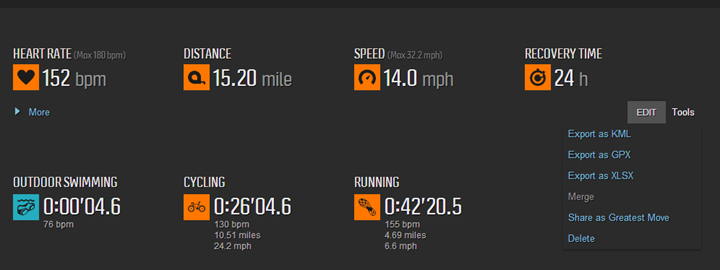
I’ll export out a few files and post them later tonight for those folks wishing to try it out on their favorite websites. Look for them to be posted here in this section once I do that.
[Update: Here’s the sample files from my workouts. Included is a file sample set of every sport type – indoor swim, outdoor swim, bike, run, and multisport workout.]
Data Fields:
Below are the data fields that can be configured within the Ambit2:
Note that for the 2S, you will not get any of the Altitude or Environment data fields except ‘Attitude Current’. For both watches, you can display heart rate fields as BPM or % of Max HR.
Here are the swimming data fields:
All data fields can be displayed as imperial or metric (but has to be defined on the entire watch). Additionally, compass can be displayed as mils or degrees. GPS formats that you can select are as follows:
For each ‘sport’ you define (custom or default), you can configure 8 data pages. Each page can include from either 2 or 3 pieces of information, and apps can display a single piece of information. You can always create an app to simply display a single value from above.
There is a limitation of 8 active sports loaded onto the watch at at time, but you can have other sports non-active in your Movescount account and sync them as needed.
Compatible Ambit Accessories:
Accessories for the Ambit is actually an unusually interesting subject. There are effectively two classes of compatible accessories with the Suunto lineup. The first is their proprietary sensors (they call them POD’s) that only work with Suunto devices). The second is open ANT+ accessories that work with any device in the ANT+ ecosystem (hundreds of devices and hundreds of phone apps). One is expensive. One is cheap. Branding doesn’t matter when it comes to functionality, for the most part virtually every ANT+ accessory is built in the same factory by the same company and just rebranded to the various companies you know and see.
Thus in the below chart I’ve included both the proprietary accessories, as well as the ANT+ accessories. It should be obvious though that buying the Suunto accessories at this time would be downright silly (the one exception is the footpod, which actually is both Suunto ANT and ANT+ compatible, but even then that only matters if you have older Suunto devices). Just buy the open ANT+ accessories that work with any device, should you switch down the road (or add other devices).
| Product | Street Price | Amazon | |
|---|---|---|---|
| 2013 Recommendations: Running GPS Watches | |||
| 2014 Giveaway Extravaganza | |||
| 2014 Summer Recommendations: Running Watches | |||
| 2014 Winter Recommendations: Running Watches | |||
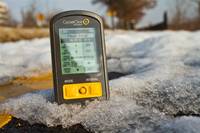 | PowerTap G3 ANT+ Power Meter (Hub) $790 (hub only) | $790 (hub only) | Amazon |
 | PowerTap Pro ANT+ Power Meter (Hub) $899 | $899 | Amazon |
| Garmin ANT+ Heart Rate Strap (Classic Plastic Strap) - HRM1 $37.00 | $37.00 | Amazon | |
| Garmin ANT+ Heart Rate Strap (Premium Soft-Strap) - HRM2 $69.00 | $69.00 | Amazon | |
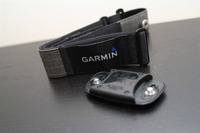 | Garmin ANT+ Heart Rate Strap (Premium Soft-Strap) - HRM3 $50 | $50 | Amazon |
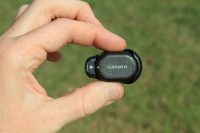 | Garmin ANT+ Running Footpod (Mini) $45 | $45 | Amazon |
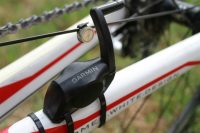 | Garmin ANT+ Speed/Cadence Cycling Sensor (GSC-10) $35.00 | $35.00 | Amazon |
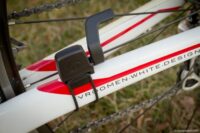 | Motorola ANT+ Speed/Cadence Cycling Sensor (Quick Install) - BEST! $55.00 | $55.00 | Amazon |
 | Power2Max ANT+ Power Meter $970 (no cranks) | $970 (no cranks) | N/A |
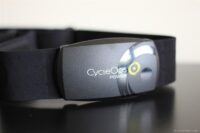 | PowerCal ANT+ Estimated Power Meter $99 | $99 | Amazon |
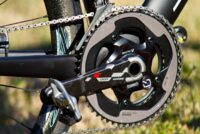 | SRAM Quarq Cinqo (Original) ANT+ Power Meter Discontinued | Discontinued | Amazon |
 | SRAM Quarq Elsa & RED ANT+ Power Meter $1,600 (with cranks, no chainrings) | $1,600 (with cranks, no chainrings) | Amazon |
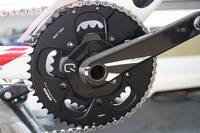 | SRAM Quarq Riken ANT+ Power Meter $1,200 (with cranks, no chainrings) | $1,200 (with cranks, no chainrings) | Amazon |
 | Stages ANT+/Bluetooth Smart Power Meter $699 | $699 | N/A |
 | Suunto ANT/ANT+ Running Footpod (good for both ANT types) $70.00 | $70.00 | Amazon |
| Suunto Ambit 1/2/2s Charging Cable $29.00 | $29.00 | Amazon | |
| Suunto Bike Mount Kit (for mounting any watch onto handlebars) $10.00 | $10.00 | Amazon | |
| Suunto-ANT (not ANT+) Bike Cadence Sensor Pod - Suunto-Devices Only $59.00 | $59.00 | Amazon | |
| Suunto-ANT (not ANT+) Bike Speed Sensor Front Wheel Pod - Suunto-Devices Only $70.00 | $70.00 | Amazon | |
| Suunto-ANT (not ANT+) Bike Speed Sensor Pod - Suunto-Devices Only $59.00 | $59.00 | Amazon | |
| Suunto-ANT (not ANT+) Heart Rate Strap - Suunto-Devices Only $72.00 | $72.00 | Amazon |
As you can see above, there’s a lot of compatible stuff from companies other than Suunto. I don’t simply just show you the Suunto accessories. Instead, I’m showing you everything that I use that’s compatible. I see no reason to buy a Suunto branded item when an identical item branded with a different logo costs half as much (or is twice as good for half as much). Just the way I am.
Note that the Ambit does NOT contain any Bluetooth or Bluetooth Smart technology/chips in it, thus is not compatible with any Bluetooth Sensors, nor can it connect directly to phones. Further, it does NOT at this time support the ability to wirelessly transfer workout files (FIT files) to phones like some of the Garmin watches can do when combined with the Wahoo Fitness iPhone/iPod/iPad adapter.
Bugs that I saw:
The firmware that I tested for this review was the final shipping firmware that’s included on units arriving this week to customers. Within that context I’ve actually seen no critical show-stopper bugs. There are things I don’t like (i.e. the lack of footpod settings for using GPS over it), and bugs that make using the watch annoying. But, I haven’t seen or had any incidents where the unit flat-out stopped working or otherwise corrupted my experience (either from a display or data standpoint).
Smaller less critical bugs that I have seen are:
– Issues with pairing ANT+ accessories: Routinely accessories would not pair (initial pairing), across both units and a myriad of ANT+ devices. The sensor would pair just fine to other units, but not the Ambit’s. I talked with Suunto about this and they have confirmed they see it as well in some cases, and are working on a fix.
– Issues with edge case scenario data fields: As noted in the airplane I saw bugs with lack of high speeds (i.e. 500MPH) or high altitudes (about 30,000ft). In talking Suunto, they did this on purpose to filter out potential bad data points. Nonetheless, they are looking to fix this in an upcoming update.
– Occasional ANT+ power drop Issues: I can’t be 100% certain that this is an Ambit issue, or some other communications impacting issue in my place. However, I did see a handful of ANT+ power meter drops where the Ambit dropped the power meter channel, but other ANT+ head units maintained the channel. This is going to take longer monitoring in controlled environments (like inside where I noticed it) to see if this is a bigger issue.
– Inability to see swimming data mid-length: This may not be a bug per-se, but it’s annoying enough to me that I’m declaring it a bug. As it stands today you cannot glance at your wrist mid-stroke or mid-length and view data on your current interval (pace/split/time/anything). Instead, you have to stop and press the ‘Next’ button to view it. I’ve asked Suunto about this, and they were open to suggestions on how to handle it. I suggested they do what everyone else does and simply update the screen shortly after the flip/turn at the end of each length. That’s all I’m looking for. [Update: The swimming screensaver has been removed in an Aug 30th, 2013 firmware update]
That’s not to say there aren’t more bugs (because I can guarantee there likely are). It’s just that I’m not seeing any others for the scenarios I’ve tested as outlined in this review. Just like there were edge cases I found with the airplane flight, there are likely also edge cases that others will find too.
Differences between the Ambit2 and the Ambit2 S:
While I’ve covered the majority of the differences throughout the article, here are the core areas that are different between the two units:
Barometric Altimeter: The Ambit2 has a barometric altimeter via an internal pressure sensor. The Ambit2 S does not, instead relying on GPS altitude data. Note that the original Ambit1 does have this sensor (barometric altimeter), but it doesn’t have FusedAlti (the combination of GPS and barometric altimeter).
Temperature Sensor: The Ambit2 has an internal temperature sensor (used in conjunction with the altimeter). The Ambit2 S does not. The original Ambit1 does have this sensor.
Screens: Due to lack of barometric altimeter, the Ambit2 S does NOT include the alti-baro screen. Additionally, current Ascent/Descent and Vertical Speed functions are not present in the Ambit2 S. However, they are considering adding these back in via firmware update, based on GPS data instead (and the stability seen thus far).
Compass: The compass is not within the main modes of the Ambit2 S, however it is still offered via the start menu as a temporary screen. The thinking behind this being that the Ambit2 is focused more towards outdoor/hiking, whereas the Ambit2 S is more towards the performance athlete. Again, the compass is still there, just not as readily accessible.
Size/Weight: As seen earlier in the review in the size comparison section, the Ambit2 is slightly heavier than the Ambit2 S, as well as just a touch thicker (in terms of depth).
Battery Life: The Ambit2 S has a GPS-on battery life of 25 hours (every-60s), whereas the Ambit2 has upwards of 50 hours (every 60s). At 1-second recording, it’s 8 hours and 15 hours.
Price: The Ambit2 S is the least expensive model, starting at $400, versus the Ambit2 starts at $500 (plus more for heart rate strap or Sapphire versions).
Colors: The Ambit2 S offers three colors (Graphite/Lime/Red), while the Ambit2 offers three slightly different colors (Sapphire/Black/Silver). In this review you see the Lime (2S) and Sapphire editions (Ambit2)
Based on what I’m seeing with the GPS altimeter, I wouldn’t have any problem recommending the Ambit2 S over the Ambit2 for triathletes or cyclists in some situations. Ironman finishers with power meters are going to have some challenges with the 2S due to the lack of battery. On the altimeter side, as you saw in my climb data, it was pretty darn close. And the other functions (temperature sensor) just aren’t of much use to most performance athletes (I’m not saying they aren’t interesting as I’m a data geek too, but I’ve yet to hear a training-specific reason in three years of devices having temperature recorded as to why it’s useful to know the current temperature you’re in).
Note: Because this can be a bit confusing (and really important), I specifically sent Suunto this small section and asked them to validate it ahead of the review.
Existing original Ambit Owners:
If there’s one thing that won’t make existing original Ambit owners happy – it’s the fact that almost none of these new features I’ve discussed are making it to the original Ambit. In fact, the only feature that will be made available on the original Ambit is additional App logic relate to saving app state and ‘If’ statements in the code (and this doesn’t even require a firmware update). No doubt, these are great improvements within the App Zone functionality – but in comparison to the wide swath of features being added to the Ambit2, it’s going to come across as a big slap in the face.
While part of the firmware changes are dependent on updates to both the units CPU and GPS chipsets (same type, but just newer versions in the Ambit2), Suunto has argued that many of the changes simply wouldn’t have required additional processing power. I don’t really buy that. For example, the recording of ANT+ power meters would have required no more processing power than recording heart rate or cadence data (done today). I could potentially understand the swimming calculations or dual-app pieces requiring more CPU, but others such as multisport mode are a tough one to believe as well.
The case of not updating the existing Ambit is especially of note due to the age of the previous original Ambit only being about a year old. Further is that Suunto had made quite a big deal at trade shows, consumer events, and in the media about their plans to ‘continually upgrade’ the watch. You can see this starting at about the 1:15 marker in this video from a year ago. Or in this video at the 25-second marker, one of their sponsored athletes working the booth talked about year over year software updates.
And, to be fair – these updates did happen numerous times in calendar year 2012 – with the addition of new features to the original Ambit. And today’s update to Movescount does extend some of the new app functionality to the original Ambit. That said, in talking with Suunto, the last firmware update to the Ambit1 will be a near-term bug-fix only update. No new features will be added to the Ambit1 going forward.
Perhaps with some additional consumer pressure we’ll see a larger set of the features ported from the Ambit2 back into the firmware updates for the Ambit1.
Update May 7th, 2013: As a result of said pressure and feedback, Suunto has announced a series of changes and updates they’ll be making to the Ambit1 (original Ambit). You can read the full announcement letter here.
Product Comparison Tables:
You can utilize the below comparison table that’s dynamically updated over time (so as features change via firmware) to compare the different watches that I’ve reviewed – including the Ambit2, 2S and original Ambit1. Note the key part being ‘I’ve reviewed’. There are no doubt many other great watches on the market, it’s just that if I haven’t reviewed it, I don’t feel right including it based on some marketing fluff. However, with that said – I’d also suggest that within the GPS running/hiking/triathlon market, I’ve reviewed virtually every major product that you’d want to be looking at.
Since the Ambit is a bit of a higher end product (actually, the most expensive GPS watch on the market), if you’re looking for a more wallet-friendly option, see my GPS recommendations post from a few months ago.
| Function/Feature | Suunto Ambit2 | Suunto Ambit2 S | Suunto Ambit | Garmin Fenix | Garmin Forerunner 910XT |
|---|---|---|---|---|---|
| Copyright DC Rainmaker - Updated April 29th, 2021 @ 5:06 am New Window | |||||
| Price | $319 | $219 | $400.00/Discontinued | $299 (on sale) | $399 |
| Product Announcement Date | APR 29, 2013 | APR 29, 2013 | Jan 18, 2012 | JUL 10, 2012 | OCT 4, 2011 |
| Actual Availability/Shipping Date | May 2013 | May 2013 | Apr 2012 | AUG 2012 | JAN-APR 2012 |
| GPS Recording Functionality | Yes | Yes | Yes | Yes | Yes |
| Data Transfer | USB | USB | USB | USB & Bluetooth Smart | ANT+ Wireless |
| Waterproofing | Yes - 100m | Yes - 50m | Yes - 100m | Yes - 50m | Yes - 50m |
| Battery Life (GPS) | 50 hours | 25 hours | 50 hours | 50 hours | 20 Hours |
| Recording Interval | Variable | Variable | Variable | 1s to variable | 1s or Smart |
| Alerts | Sound/Visual | Sound/Visual | Sound/Visual | Vibrate/Sound/Visual | Vibrate/Sound/Visual |
| Ability to download custom apps to unit/device | Yes | Yes | Yes | No | No | Connectivity | Suunto Ambit2 | Suunto Ambit2 S | Suunto Ambit | Garmin Fenix | Garmin Forerunner 910XT |
| Bluetooth Smart to Phone Uploading | No | No | No | Yes | Via Wahoo Fitness Adapter |
| Phone Notifications to unit (i.e. texts/calls/etc...) | No | No | No | Yes | No |
| Live Tracking (streaming location to website) | No | No | No | Yes (as of Feb 2014) | No |
| Emergency/SOS Message Notification (from watch to contacts) | No | No | No | No | No |
| Built-in cellular chip (no phone required) | No | No | No | No | No | Cycling | Suunto Ambit2 | Suunto Ambit2 S | Suunto Ambit | Garmin Fenix | Garmin Forerunner 910XT |
| Designed for cycling | Yes | Yes | Yes | Yes | Yes |
| Power Meter Capable | Yes | Yes | No | No | Yes |
| Power Meter Configuration/Calibration Options | Yes | Yes | N/A | N/A | Yes |
| Power Meter TSS/NP/IF | No | No | N/A | N/A | Yes |
| Speed/Cadence Sensor Capable | Yes | Yes | Yes | Yes (full support added Sept 2013) | Yes | Running | Suunto Ambit2 | Suunto Ambit2 S | Suunto Ambit | Garmin Fenix | Garmin Forerunner 910XT |
| Designed for running | Yes | Yes | Yes | Yes | Yes |
| Footpod Capable (For treadmills) | Yes (internal accelerometer) | Yes (internal accelerometer) | Yes | Yes | Yes |
| Running Dynamics (vertical oscillation, ground contact time, etc...) | No | No | No | No | No |
| VO2Max Estimation | Yes | Yes | Yes | No | No |
| Race Predictor | No | No | No | No | No |
| Recovery Advisor | Yes | Yes | No | No | No |
| Run/Walk Mode | No | No | No | No | Yes | Swimming | Suunto Ambit2 | Suunto Ambit2 S | Suunto Ambit | Garmin Fenix | Garmin Forerunner 910XT |
| Designed for swimming | Yes | Yes | No | No | Yes |
| Openwater swimming mode | Yes | Yes | N/A | N/A | Yes |
| Lap/Indoor Distance Tracking | Yes | Yes | N/A | N/A | Yes |
| Record HR underwater | No | No | No | No | No |
| Openwater Metrics (Stroke/etc.) | Yes | Yes | N/A | N/A | Yes |
| Indoor Metrics (Stroke/etc.) | Yes | Yes | N/A | N/A | Yes |
| Indoor Drill Mode | Yes | Yes | N/A | N/A | No |
| Indoor auto-pause feature | No | No | N/A | N/A | No |
| Change pool size | Yes | Yes | N/A | N/A | Yes |
| Indoor Min/Max Pool Lengths | 15m/y to 1,200m/y | 15m/y to 1,200m/y | N/A | N/A | 20m/22y to 100y/m |
| Ability to customize data fields | Yes | Yes | N/A | N/A | Yes |
| Captures per length data - indoors | Yes | Yes | N/A | N/A | Yes |
| Indoor Alerts | No | No | N/A | N/A | Yes | Triathlon | Suunto Ambit2 | Suunto Ambit2 S | Suunto Ambit | Garmin Fenix | Garmin Forerunner 910XT |
| Designed for triathlon | Yes | Yes | No | No | Yes |
| Multisport mode | Yes | Yes | N/A | N/A | Yes | Workouts | Suunto Ambit2 | Suunto Ambit2 S | Suunto Ambit | Garmin Fenix | Garmin Forerunner 910XT |
| Create/Follow custom workouts | No | No | No | Yes (As of Dec 6, 2013) | Yes |
| On-unit interval Feature | Barely | Barely | No | Yes (As of Dec 6, 2013) | Yes |
| Training Calendar Functionality | No | No | No | No | Yes | Functions | Suunto Ambit2 | Suunto Ambit2 S | Suunto Ambit | Garmin Fenix | Garmin Forerunner 910XT |
| Auto Start/Stop | Yes | Yes | No | Yes | Yes |
| Virtual Partner Feature | No | No | No | Yes | Yes |
| Virtual Racer Feature | No | No | No | No | Yes |
| Records PR's - Personal Records (diff than history) | No | No | No | No | No |
| Tidal Tables (Tide Information) | No | No | No | No | No |
| Weather Display (live data) | No | No | No | No | No | Navigate | Suunto Ambit2 | Suunto Ambit2 S | Suunto Ambit | Garmin Fenix | Garmin Forerunner 910XT |
| Follow GPS Track (Courses/Waypoints) | Yes | Yes | Yes | Yes | Yes |
| Markers/Waypoint Direction | Yes | Yes | No | Yes | No |
| Offline Maps | No | No | No | No | No |
| Back to start | Yes (added Aug 30, 2013) | Yes (added Aug 30, 2013) | Yes (point to point only) | Yes | Yes |
| Impromptu Round Trip Route Creation | No | No | No | No | No |
| Download courses/routes from phone to unit | No | No | No | Yes | No | Sensors | Suunto Ambit2 | Suunto Ambit2 S | Suunto Ambit | Garmin Fenix | Garmin Forerunner 910XT |
| Altimeter Type | Barometric, GPS (FusedAlti) | GPS | Barometric | Barometric | Barometric |
| Compass Type | Magnetic | Magnetic | Magnetic | Magnetic | GPS |
| Heart Rate Strap Compatible | Yes | Yes | Yes | Yes | Yes |
| ANT+ Heart Rate Strap Capable | Yes | Yes | Yes | Yes | Yes |
| ANT+ Speed/Cadence Capable | Yes | Yes | Yes | Yes | Yes |
| ANT+ Footpod Capable | Yes | Yes | Yes | Yes | Yes |
| ANT+ Power Meter Capable | Yes | Yes | No | No | Yes |
| ANT+ Remote Control | No | No | No | Yes | No |
| ANT+ eBike Compatibility | No | No | No | No | No |
| Shimano Di2 Shifting | No | No | No | No | |
| Bluetooth Smart HR Strap Capable | No | No | No | No | No |
| Bluetooth Smart Speed/Cadence Capable | No | No | No | No | No |
| Bluetooth Smart Footpod Capable | No | No | No | No | No |
| Bluetooth Smart Power Meter Capable | No | No | No | No | No |
| Temp Recording (internal sensor) | Yes | No | Yes | Yes | No |
| Temp Recording (external sensor) | No | No | No | Yes | No | Software | Suunto Ambit2 | Suunto Ambit2 S | Suunto Ambit | Garmin Fenix | Garmin Forerunner 910XT |
| Desktop Application | Moveslink Agent | Moveslink Agent | Moveslink Agent | Basecamp | GTC/ANT Agent |
| Web Application | Movescount | Movescount | Movescount | Garmin Connect | Garmin Connect |
| Phone App | Suunto Movescount | Movescount | Suunto Movescount | Garmin Basecamp (iOS) | iOS/Android |
| Ability to Export Settings | Yes (online) | Yes (online) | Yes (online) | Yes (profiles XML) | No | Purchase | Suunto Ambit2 | Suunto Ambit2 S | Suunto Ambit | Garmin Fenix | Garmin Forerunner 910XT |
| Amazon | Link | Link | Link | Link | Link | DCRainmaker | Suunto Ambit2 | Suunto Ambit2 S | Suunto Ambit | Garmin Fenix | Garmin Forerunner 910XT |
| Review Link | Link | Link | Link | Link | Link |
Remember to click the ‘Expand Results’ button as it’ll show a gazillion more rows than the quick preview above. Or, you can mix and match your own comparison table here with products that are of interest to you.
Pros and Cons:
As always, I’d suggest that the below pros and cons is highly concentrated, and doesn’t really cover all the details of the 11,000+ words above. But, with that warning, here we go:
Pros:
– Multisport mode is now included, and customized creation of these modes is neat
– Supports power meters
– New App Functionality increases ability for unit to be customized
– Now supports swimming (openwater and pool)
– FusedAlti helps in narrowing the gap between GPS and barometric altimeters
– Movescount site updates fairly impressive in some areas
– Route navigation forward and backwards is handy
Cons:
– Multisport mode needs transition times added (manual workaround is semi-functional)
– Ambit2 S battery is tough for iron-distance triathletes with power meters
– No vibration alarms on any of the Ambits
– No proper Trackback feature for getting un-lost [Update: Firmware update added it Aug 30th, 2013)
– Indoor swimming screensaver screen sucks [Update: Firmware fixed Aug 30th, 2013)
Again, there are lots of little details that I’ve sprinkled throughout the review that are worth paying attention to.
Summary:
It’s been a while since I’ve been excited about a triathlon or multisport watch. Mostly because most of them in the market today don’t really do all three legs of a triathlon. Doing bicycling and running and declaring yourself a triathlon watch is like saying you’ve delivered baby after six months of pregnancy. Both the Ambit2 and Ambit2 S deliver on all three sports for triathlon, and they have multisport mode – critical for racing.
The next area to look at is whether the watch is good enough to hold its own within any single sport that makes up a triathlon. Meaning, is it still a good running watch? Or a good cycling head unit? In this case, I’d give the unit B+ marks from an individual standpoint in running and cycling, and about a C+ in swimming (until they workout the swimming screensaver thing, then it’s an ‘A’ [Update: Fixed in Aug 30th firmware update]). The main reason I mark it slightly lower in running and cycling is that other units in the market simply have more features (i.e. a real interval feature, workout support, virtual pacing support, nutrition alerts, etc…). For example in running the inability to choose whether speed/distance data comes from GPS or the footpod is a problem. And in cycling, the lack of TSS/NP/IF metrics inbox can be an issue for some.
With that said – I’d still have no problems using it as a triathlon multisport watch (either model). Is it the best overall unit on the market today? Not yet. Could it be? It has the hardware to, just a matter of the software improvements.
When it comes to hiking, navigation and outdoors, I’m seeing minimal improvements over the Ambit1. The addition of FusedAlti is definitely a helper, but not a reason in my mind to go out and upgrade the watch from an existing Ambit. Overall the Ambit2 was more about the sport athletic side than it was about the hiking/outdoor side of things. In many ways, the Ambit as a name for this product may not have actually been a good choice. In reality the Ambit2 and 2S now compete more with the Garmin FR910XT than they do with the Garmin Fenix. Whereas in the past, the Ambit competed more with the Fenix.
Going forward, the increased capabilities of the application engine can and likely will continue to produce some really intriguing options. It’s really too bad though that Suunto didn’t add in a Bluetooth chip to the unit, as that would have significantly opened up the game for connectivity out to the internet. In that single aspect this watch lags behind something like the Fenix, in the power of the phone app side from Fenix.
Overall though I’m impressed with the Ambit2 and think it makes for a solid multisport and outdoor/hiking watch – hopefully one that Suunto will improve upon for years to come.
As always, thanks for reading, and feel free to drop any questions below.
Found this review useful? Here’s how you can help support future reviews with just a single click! Read on…
Hopefully you found this review useful. At the end of the day, I’m an athlete just like you looking for the most detail possible on a new purchase – so my review is written from the standpoint of how I used the device. The reviews generally take a lot of hours to put together, so it’s a fair bit of work (and labor of love). As you probably noticed by looking below, I also take time to answer all the questions posted in the comments – and there’s quite a bit of detail in there as well.
I’ve partnered with Clever Training to offer all DC Rainmaker readers an exclusive 10% discount across the board on all products (except clearance items). You can pickup the Suunto Ambit’s below. Then receive 10% off of everything in your cart by adding code DCR10BTF at checkout. By doing so, you not only support the site (and all the work I do here) – but you also get a sweet discount. And, since this item is more than $75, you get free US shipping as well.
Suunto Ambit2 (with/without HR strap)
Suunto Ambit2 S (with/without HR strap)
Suunto Ambit2 Sapphire (with/without HR strap)
(All colors available)
Additionally, you can also use Amazon to purchase accessories (though, no discount on either from Amazon). Or, anything else you pickup on Amazon helps support the site as well (socks, laundry detergent, cowbells). If you’re outside the US, I’ve got links to all of the major individual country Amazon stores on the sidebar towards the top. Though, Clever Training also ships most places too and you get the 10% discount. Thanks for reading!
As you’ve seen throughout the review there are numerous compatible accessories for the unit. I’ve consolidated them all into the below chart, with additional information (full posts) available on some of the accessories to the far right. Also, everything here is verified by me – so if it’s on the list, you’ll know it’ll work. And as you can see, I mix and match accessories based on compatibility – so if a compatible accessory is available at a lower price below, you can grab that instead.
| Product | Street Price | Amazon | |
|---|---|---|---|
| 2014 Summer Recommendations: Triathlon Watches | |||
| 2014 Winter Recommendations: Triathlon Watches | |||
 | PowerTap G3 ANT+ Power Meter (Hub) $790 (hub only) | $790 (hub only) | Amazon |
 | PowerTap Pro ANT+ Power Meter (Hub) $899 | $899 | Amazon |
| Garmin ANT+ Heart Rate Strap (Classic Plastic Strap) - HRM1 $37.00 | $37.00 | Amazon | |
| Garmin ANT+ Heart Rate Strap (Premium Soft-Strap) - HRM2 $69.00 | $69.00 | Amazon | |
 | Garmin ANT+ Heart Rate Strap (Premium Soft-Strap) - HRM3 $50 | $50 | Amazon |
 | Garmin ANT+ Running Footpod (Mini) $45 | $45 | Amazon |
 | Garmin ANT+ Speed/Cadence Cycling Sensor (GSC-10) $35.00 | $35.00 | Amazon |
 | Motorola ANT+ Speed/Cadence Cycling Sensor (Quick Install) - BEST! $55.00 | $55.00 | Amazon |
 | Power2Max ANT+ Power Meter $970 (no cranks) | $970 (no cranks) | N/A |
 | PowerCal ANT+ Estimated Power Meter $99 | $99 | Amazon |
 | SRAM Quarq Cinqo (Original) ANT+ Power Meter Discontinued | Discontinued | Amazon |
 | SRAM Quarq Elsa & RED ANT+ Power Meter $1,600 (with cranks, no chainrings) | $1,600 (with cranks, no chainrings) | Amazon |
 | SRAM Quarq Riken ANT+ Power Meter $1,200 (with cranks, no chainrings) | $1,200 (with cranks, no chainrings) | Amazon |
 | Stages ANT+/Bluetooth Smart Power Meter $699 | $699 | N/A |
 | Suunto ANT/ANT+ Running Footpod (good for both ANT types) $70.00 | $70.00 | Amazon |
| Suunto Ambit 1/2/2s Charging Cable $29.00 | $29.00 | Amazon | |
| Suunto Bike Mount Kit (for mounting any watch onto handlebars) $10.00 | $10.00 | Amazon | |
| Suunto-ANT (not ANT+) Bike Cadence Sensor Pod - Suunto-Devices Only $59.00 | $59.00 | Amazon | |
| Suunto-ANT (not ANT+) Bike Speed Sensor Front Wheel Pod - Suunto-Devices Only $70.00 | $70.00 | Amazon | |
| Suunto-ANT (not ANT+) Bike Speed Sensor Pod - Suunto-Devices Only $59.00 | $59.00 | Amazon | |
| Suunto-ANT (not ANT+) Heart Rate Strap - Suunto-Devices Only $72.00 | $72.00 | Amazon |
And as always, feel free to post comments or questions in the comments section below, I’ll be happy to try and answer them as quickly as possible. And lastly, if you felt this review was useful – I always appreciate feedback in the comments below. Thanks! Finally, I’ve written up a ton of helpful guides around using most of the major fitness devices, which you may find useful in getting started with the devices. These guides are all listed on this page here.


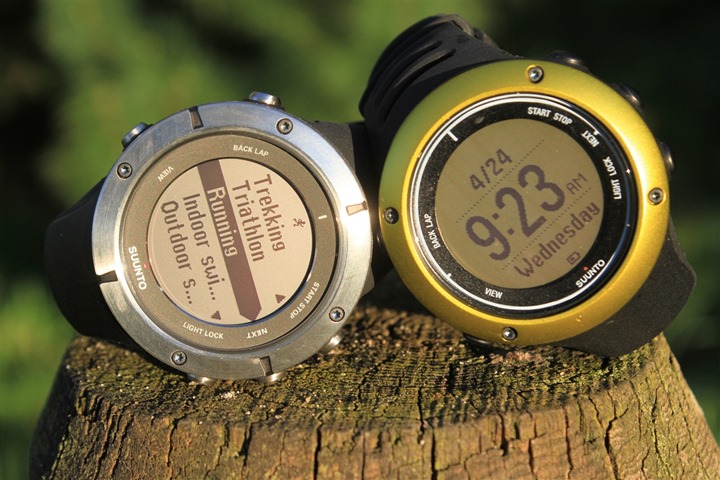
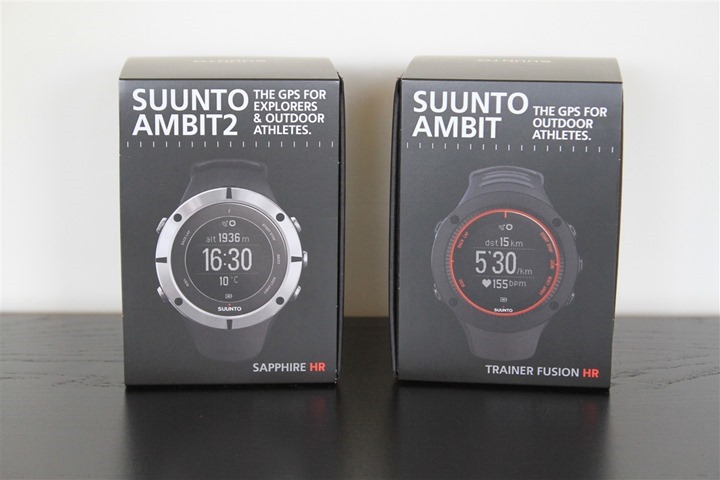
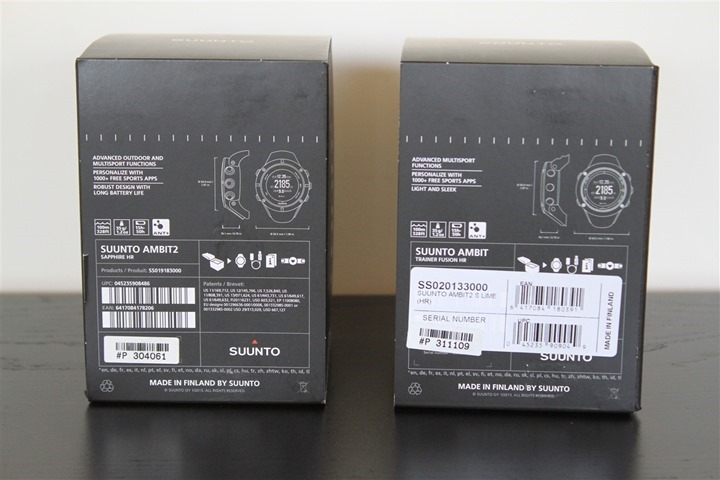
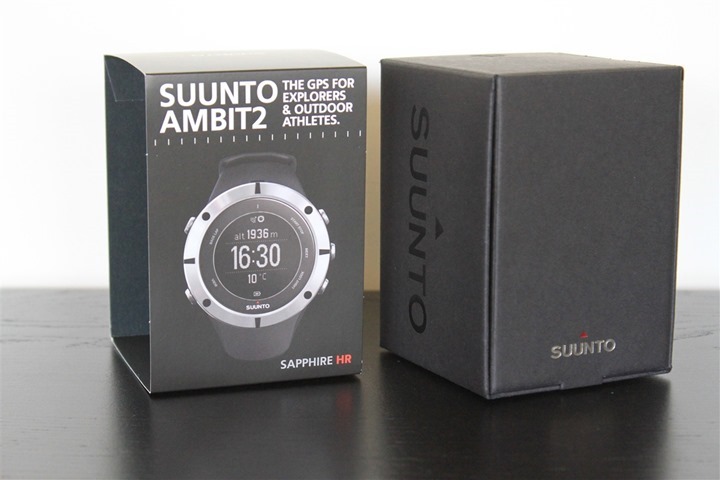
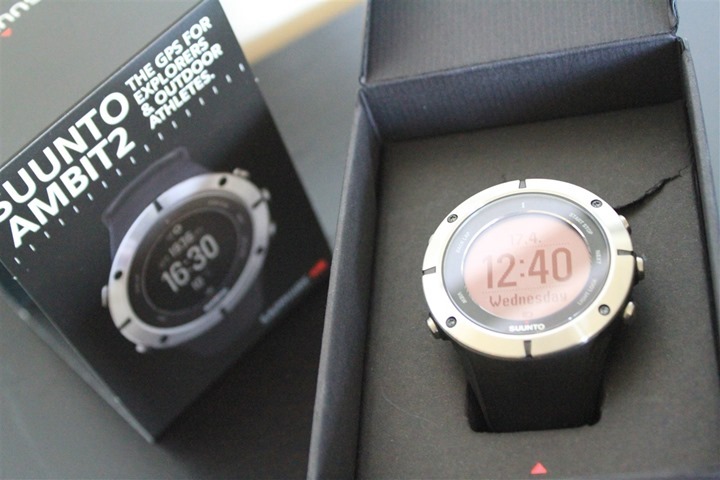
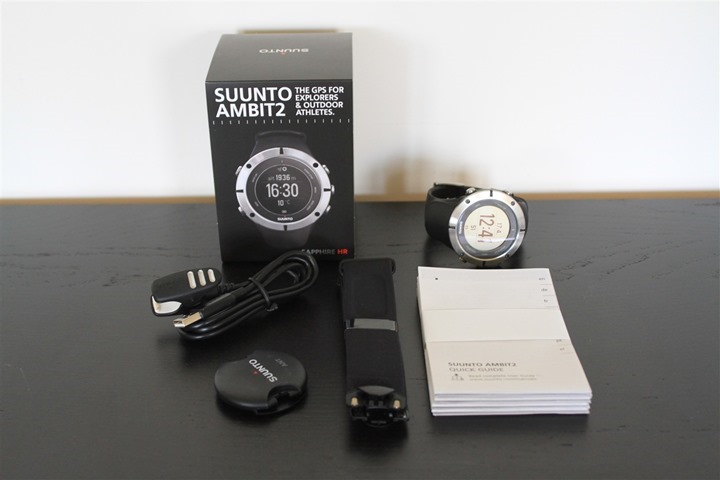
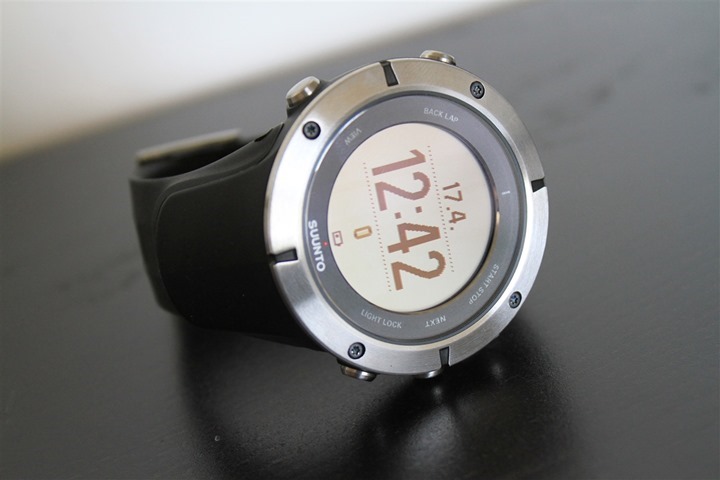
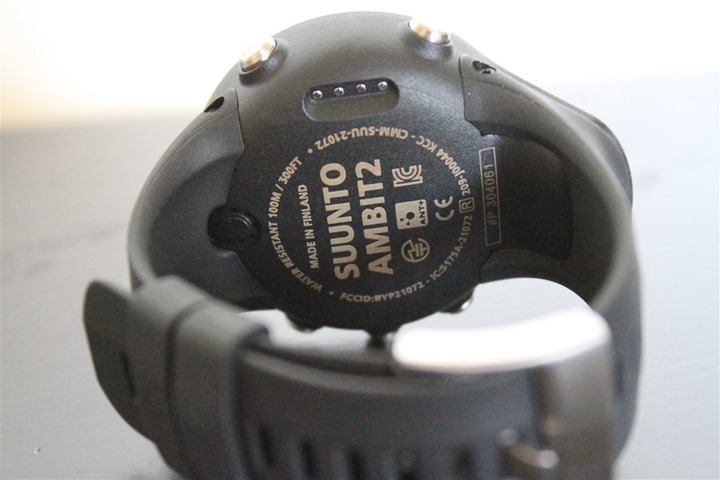
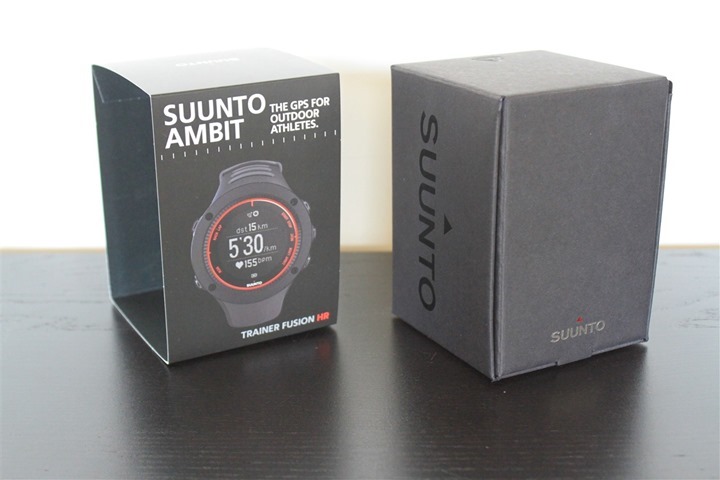
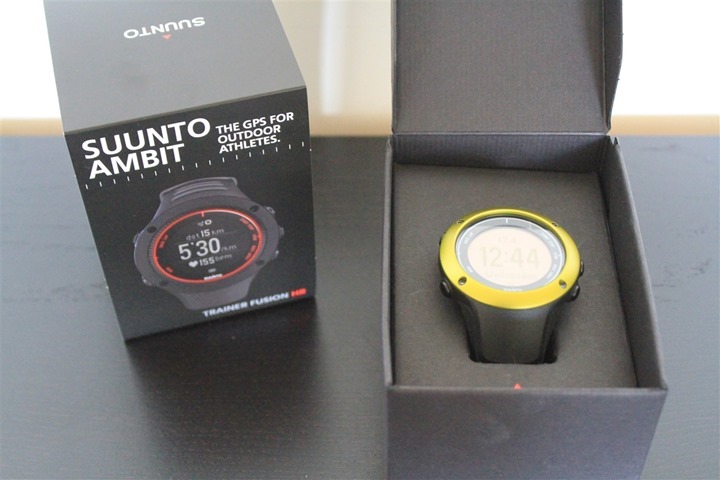
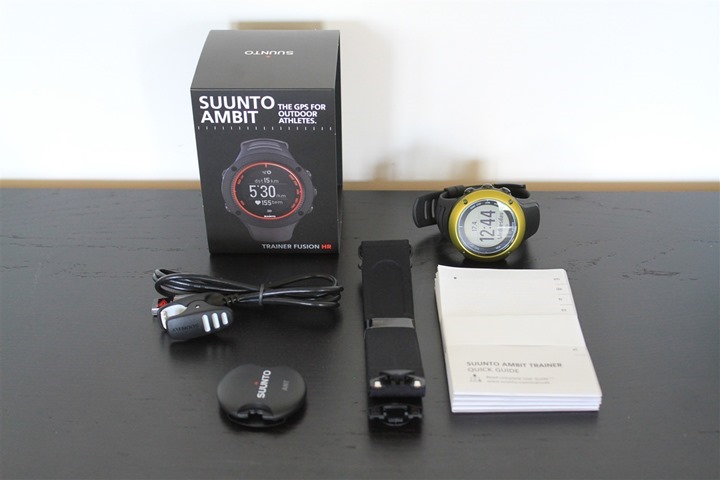
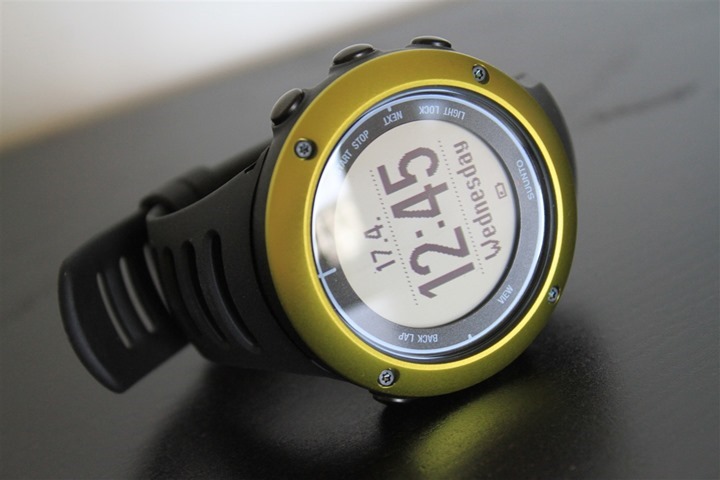
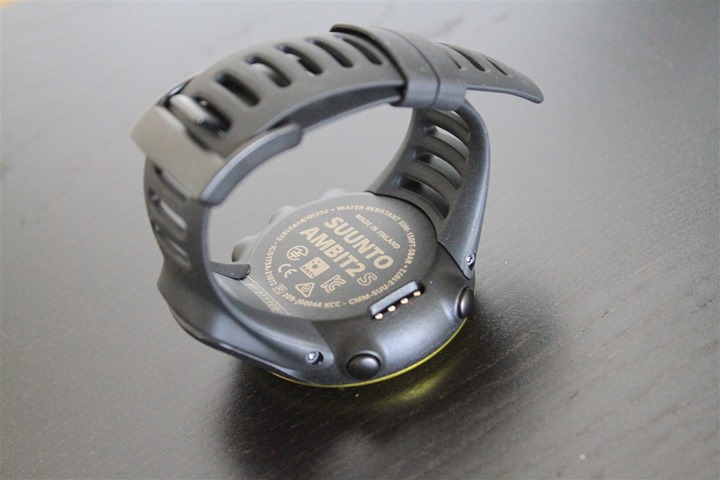
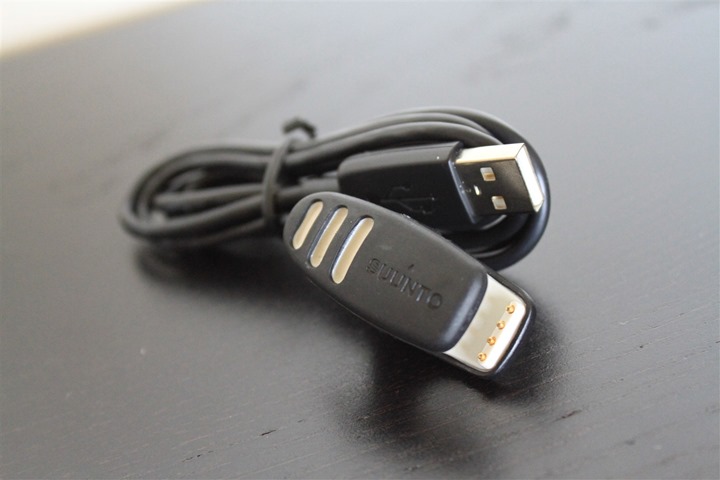
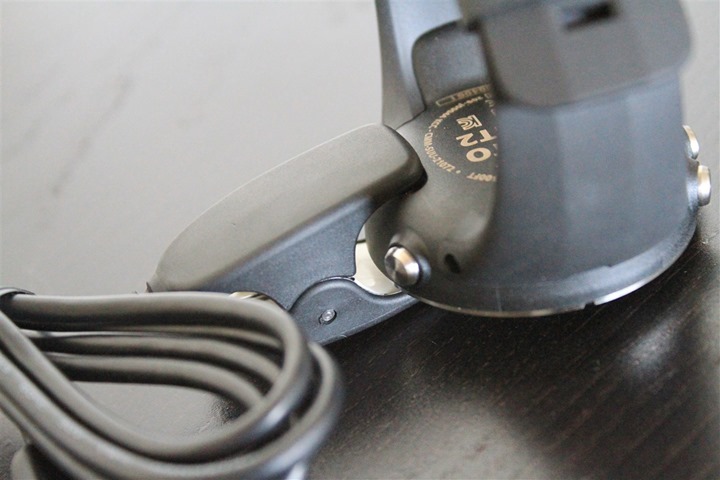

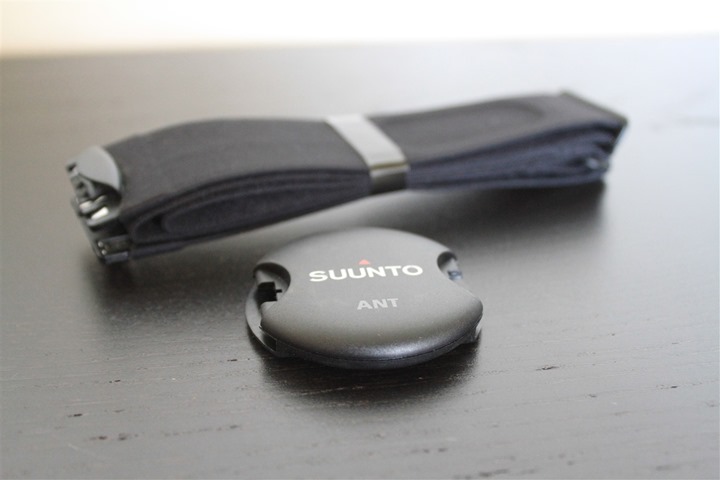
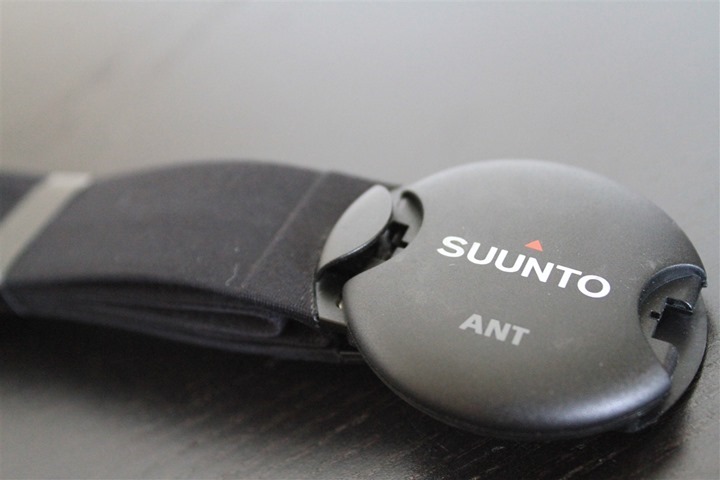
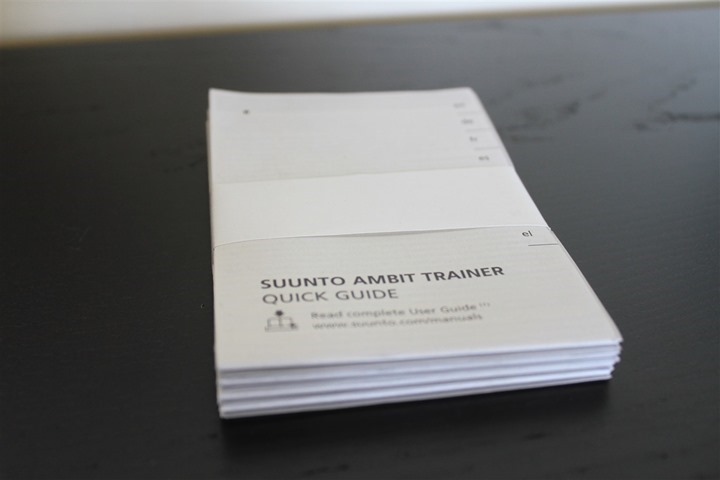
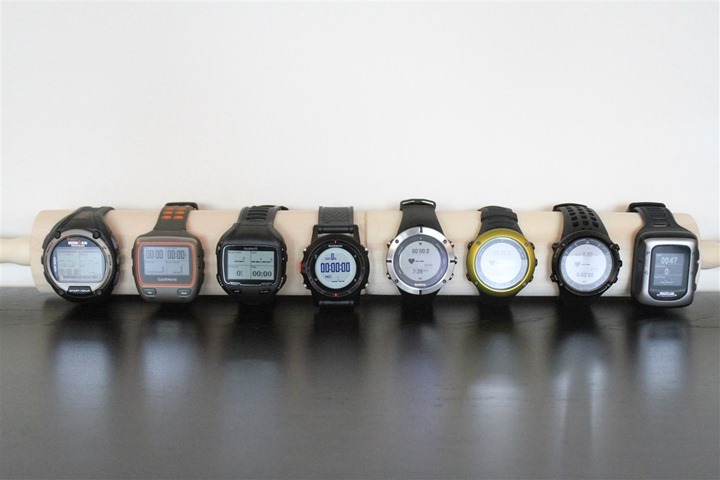
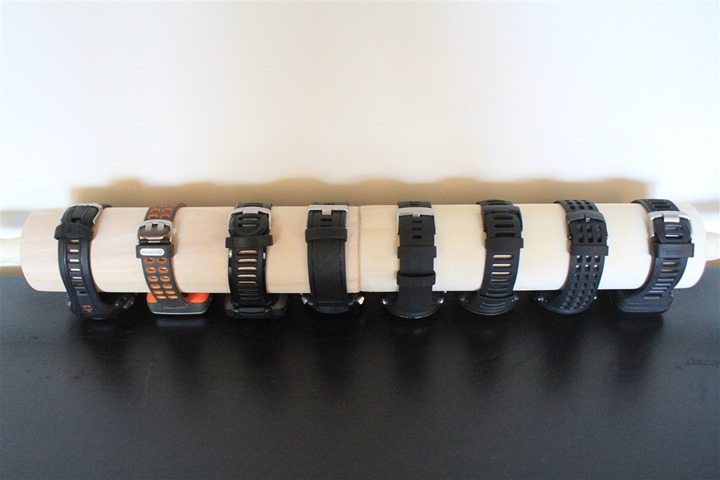
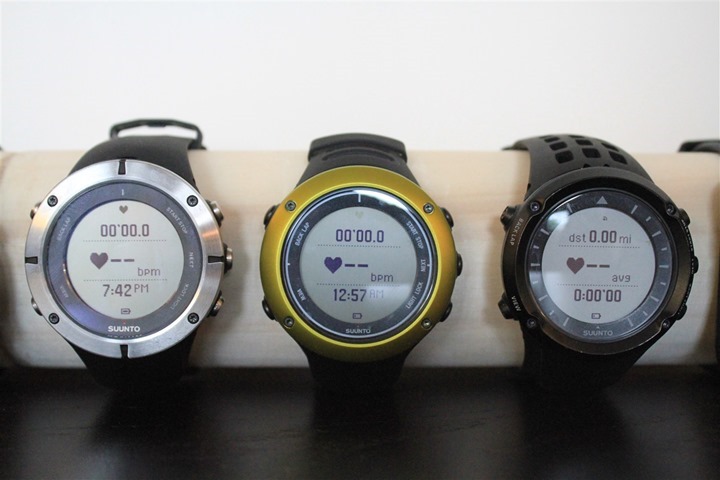

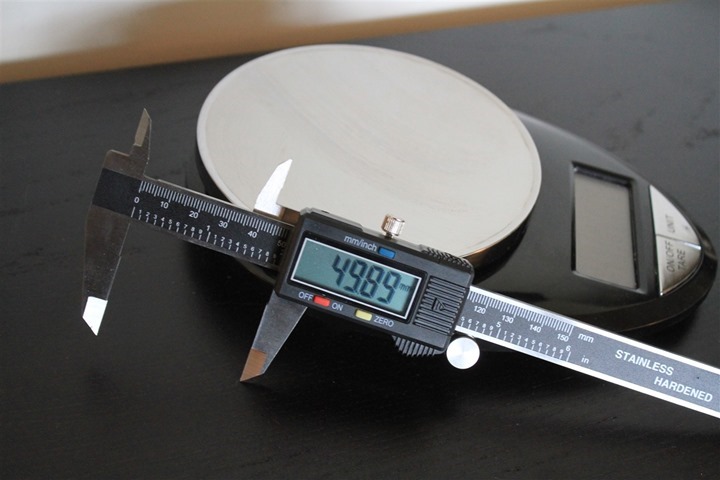


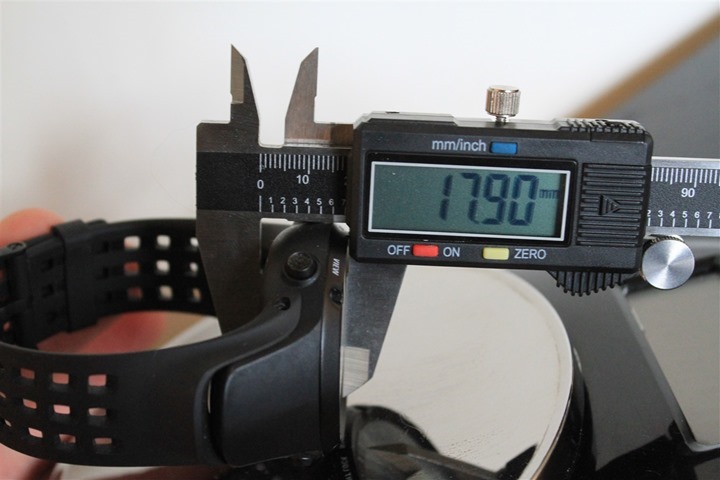

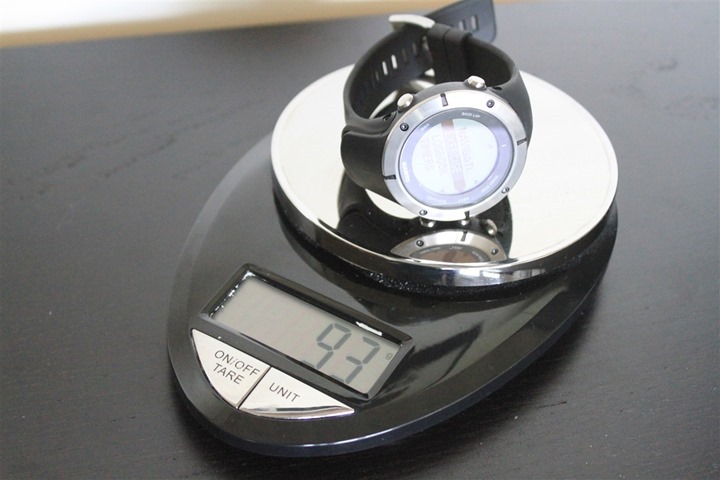
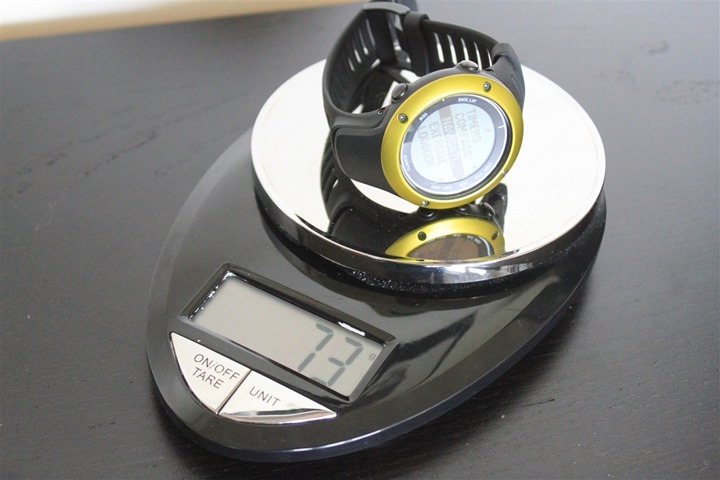
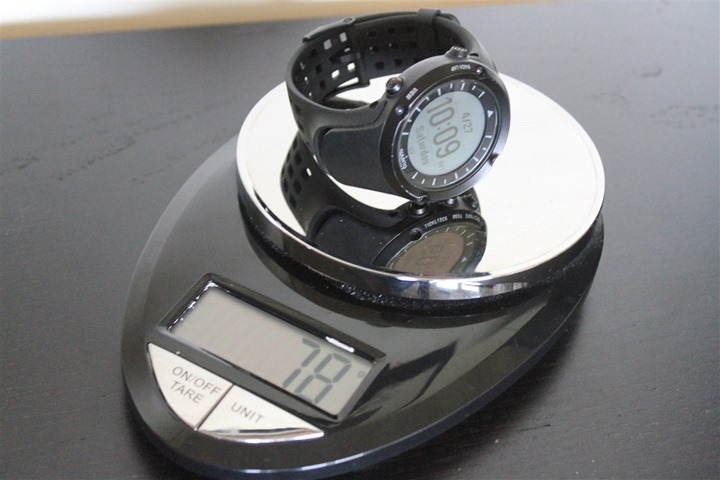
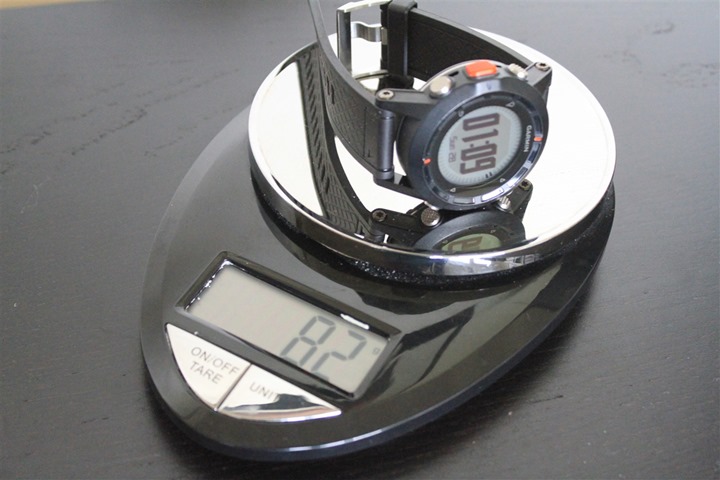
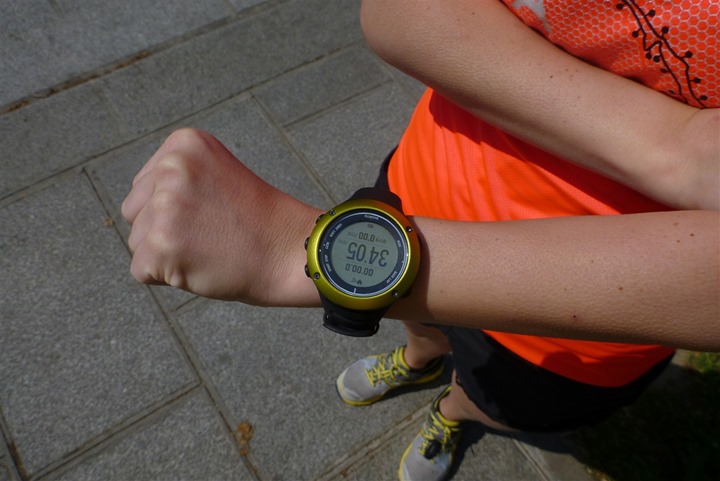
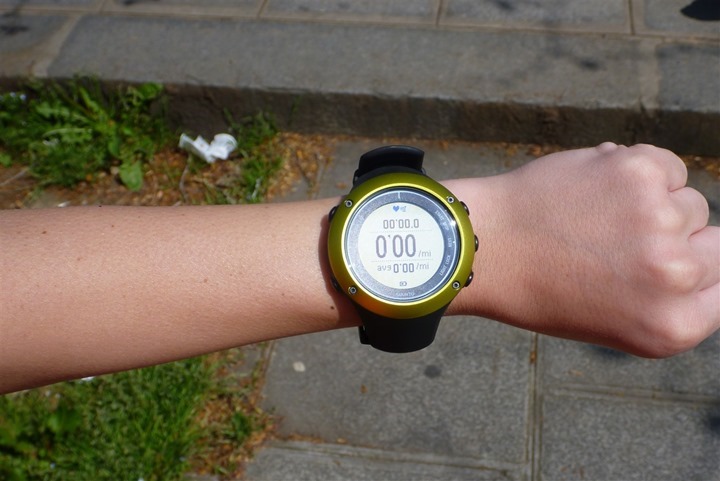

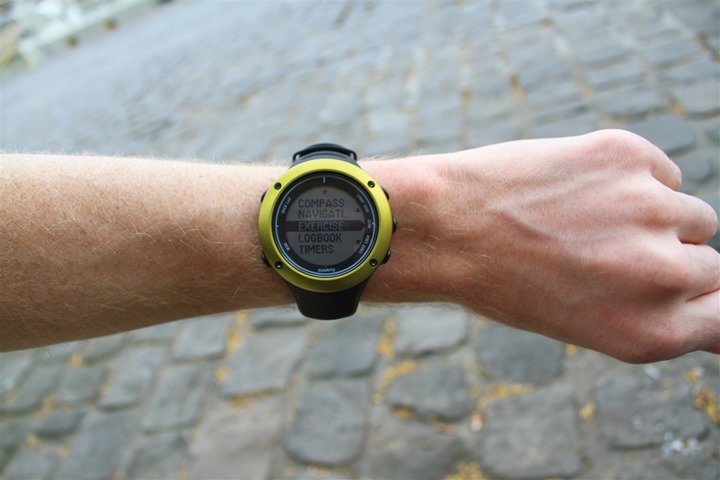
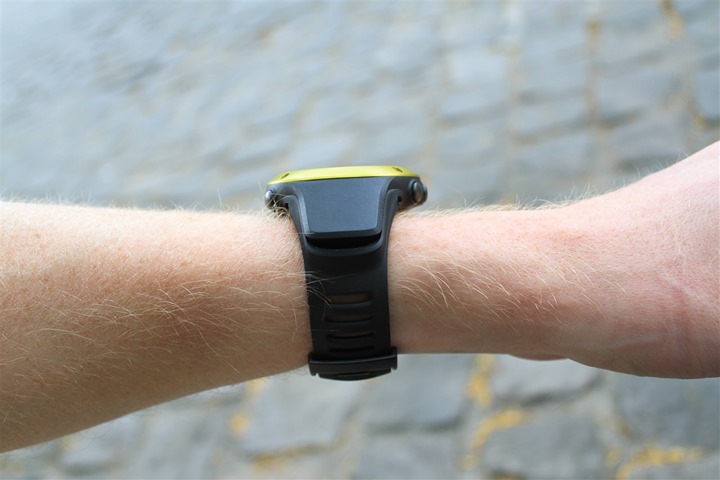
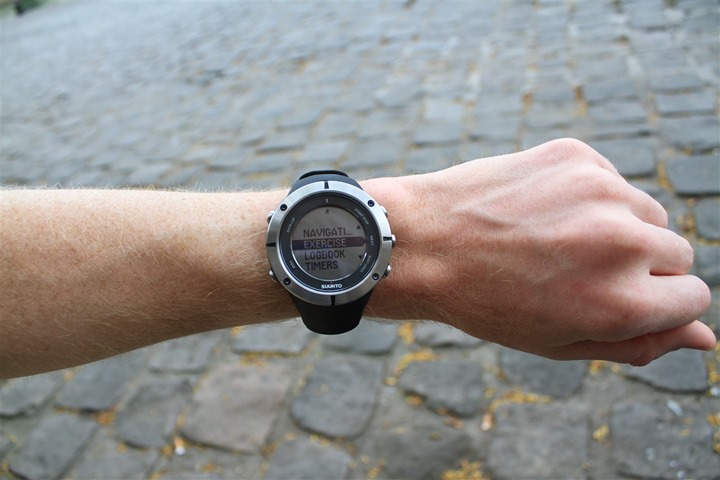
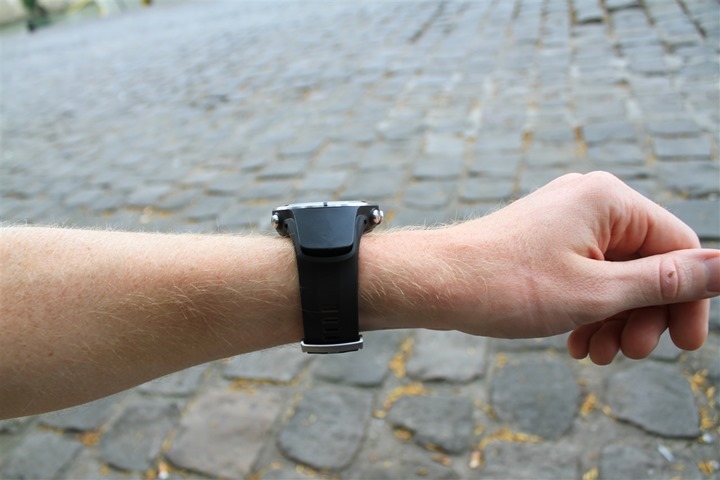
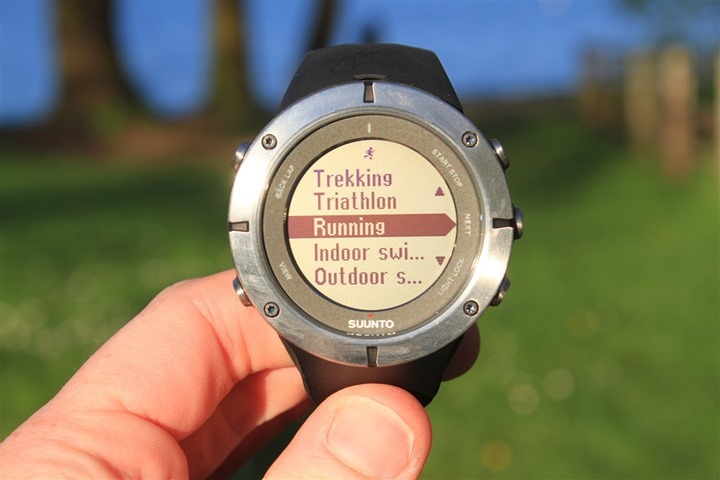
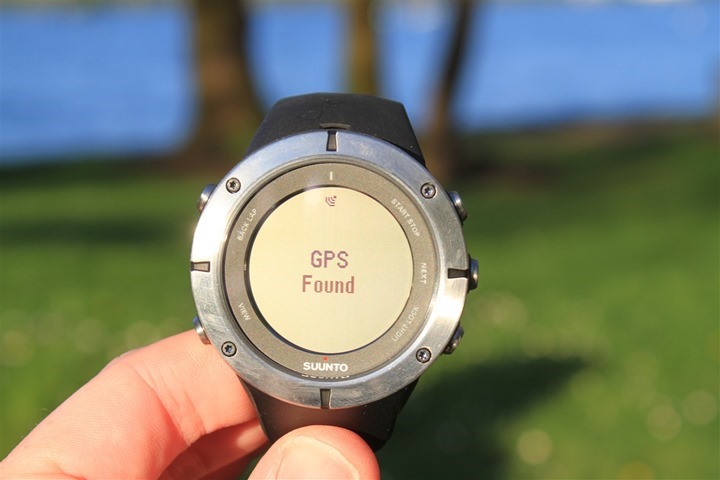
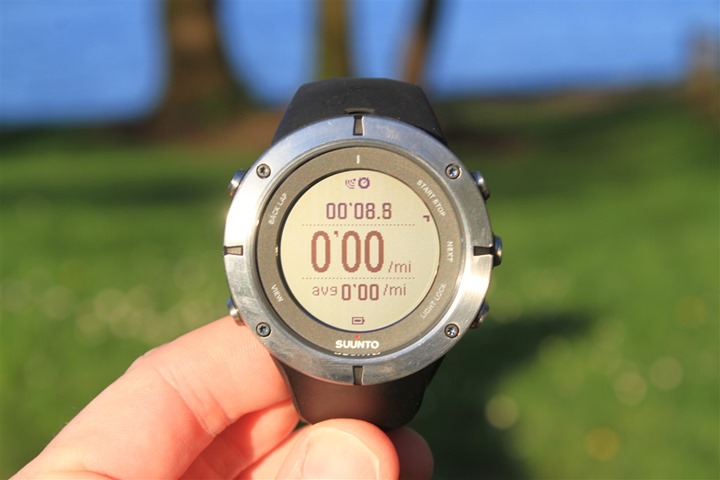
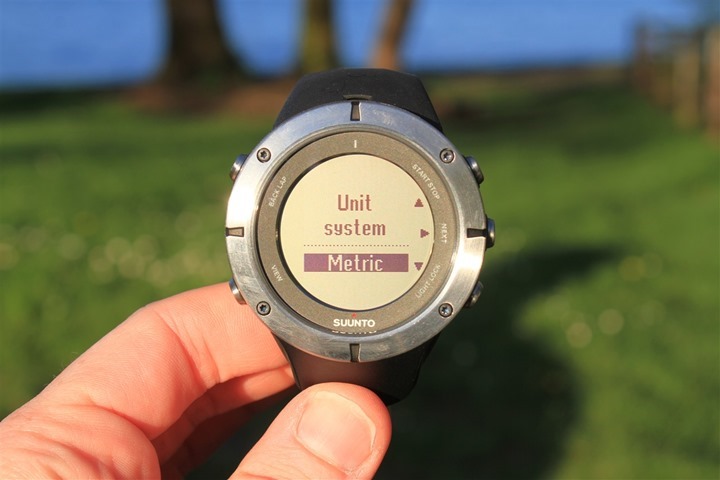
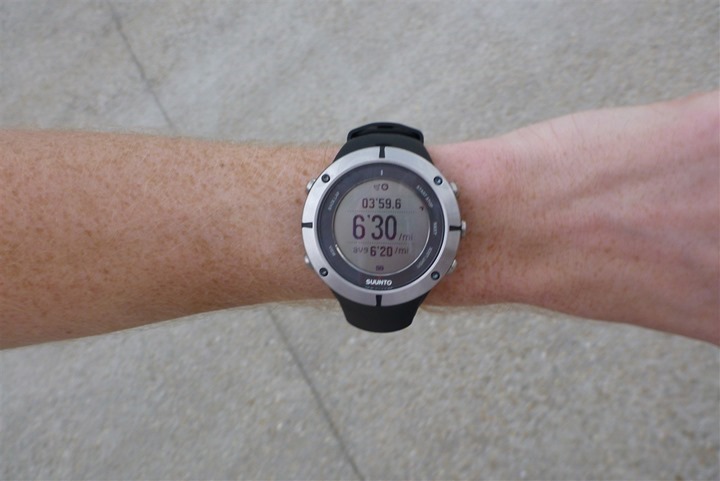

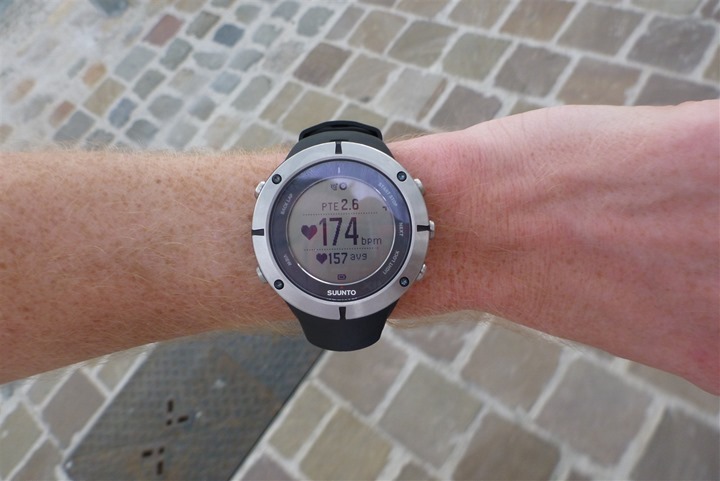

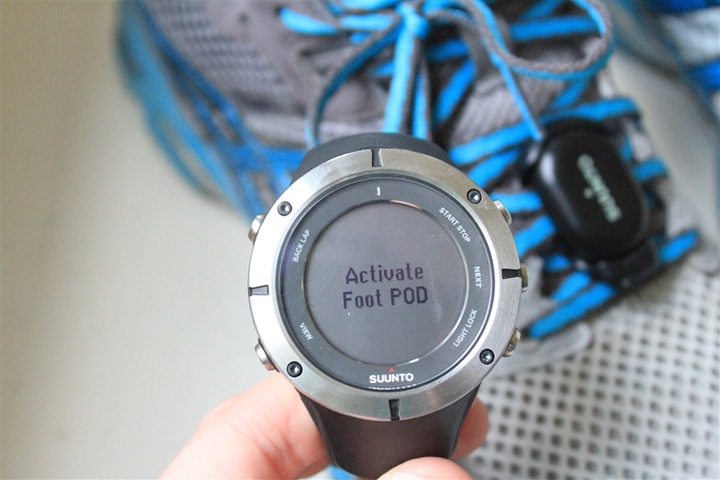
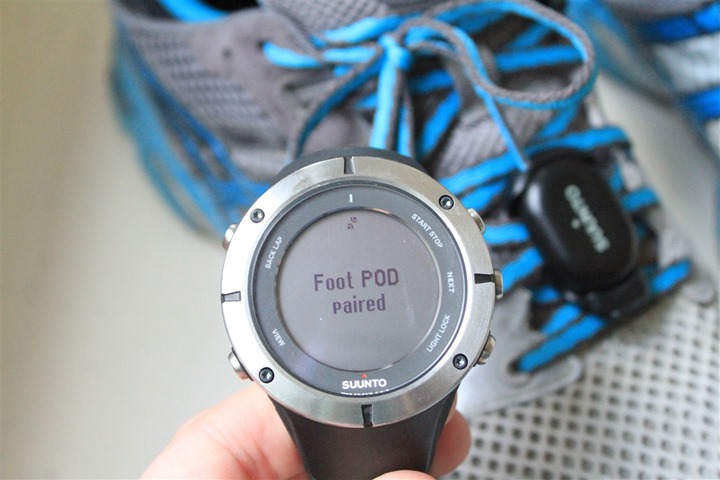
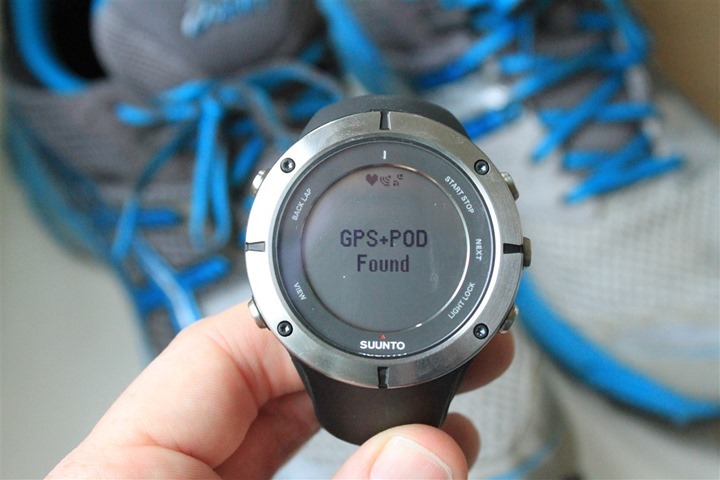
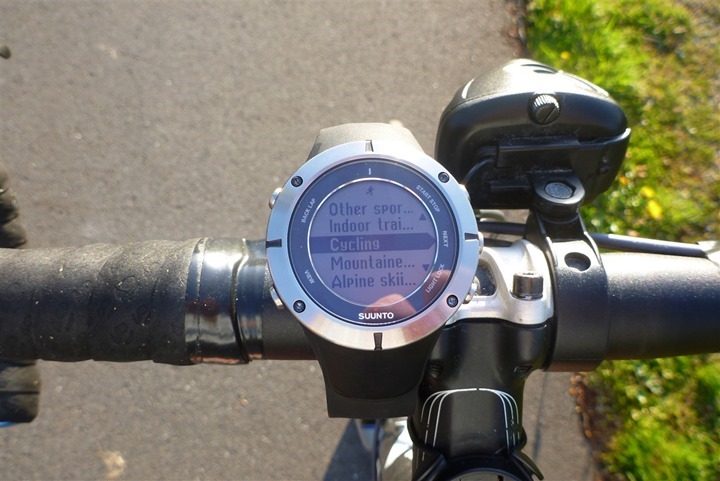

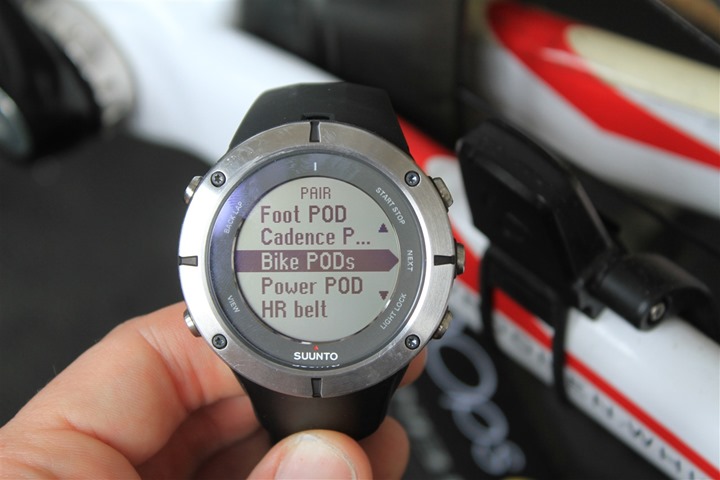
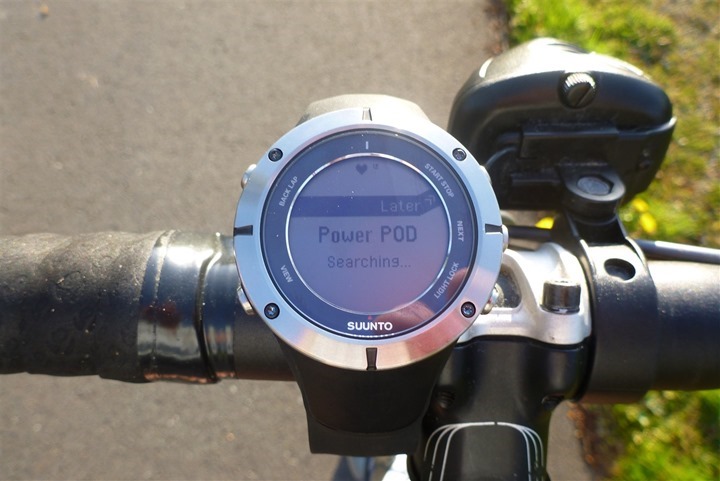
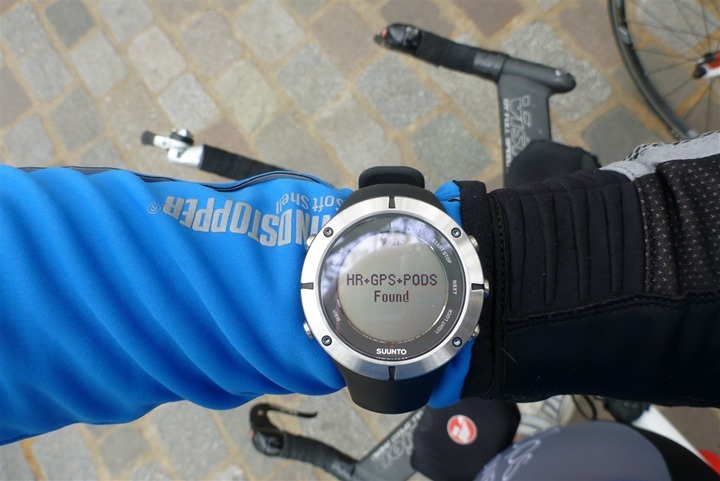
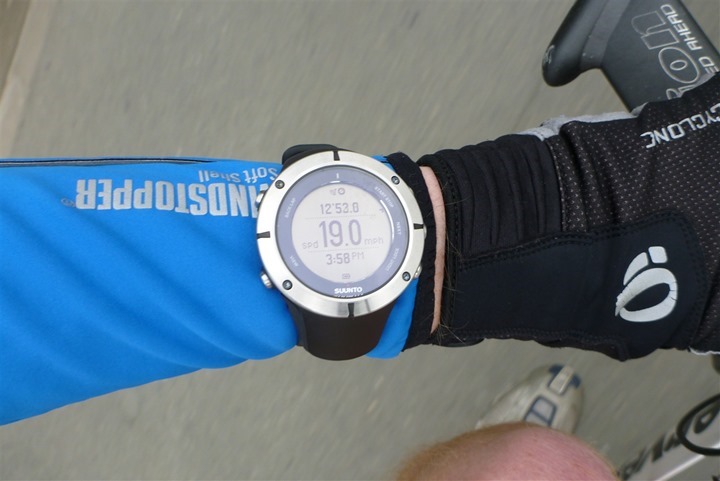

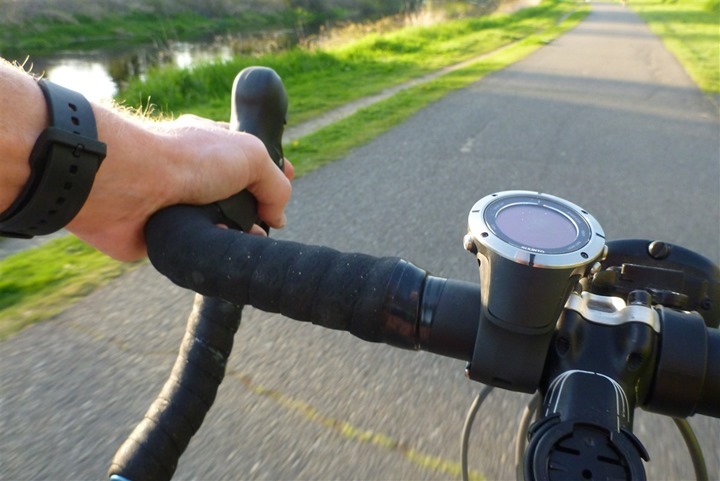

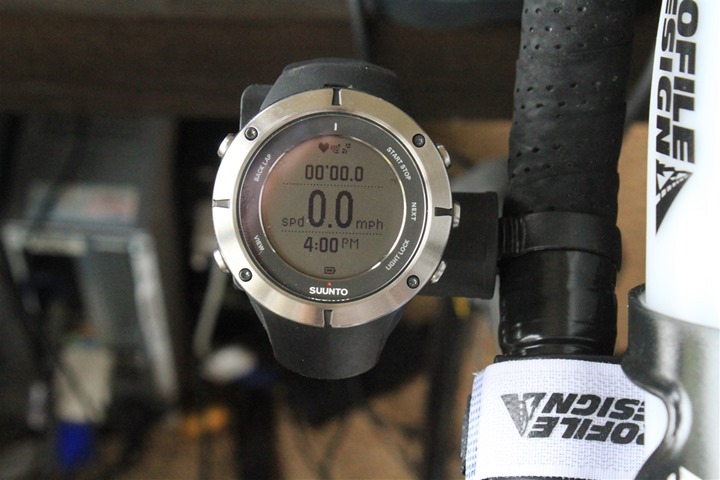
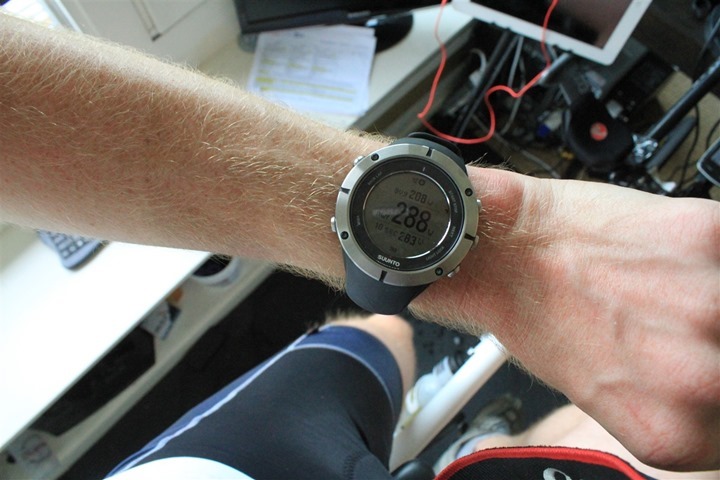


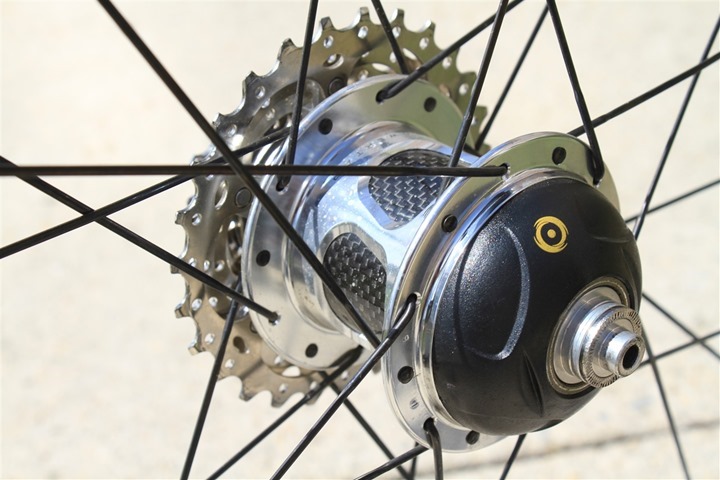
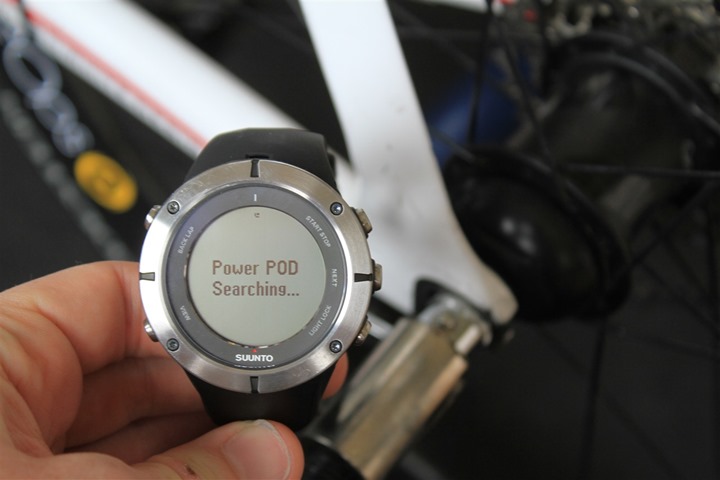
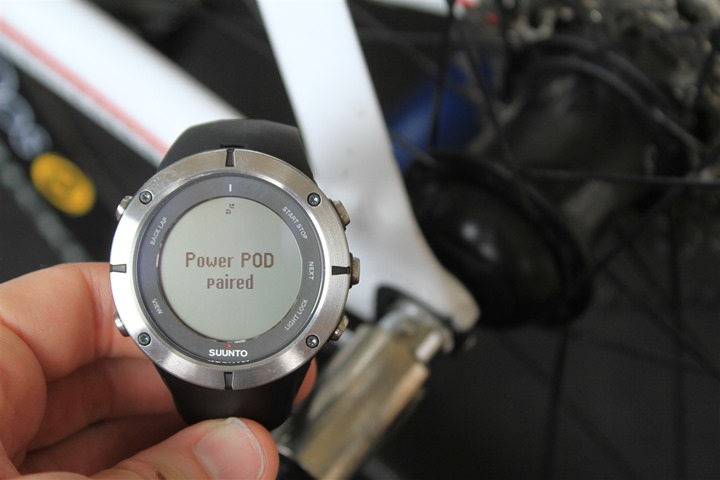
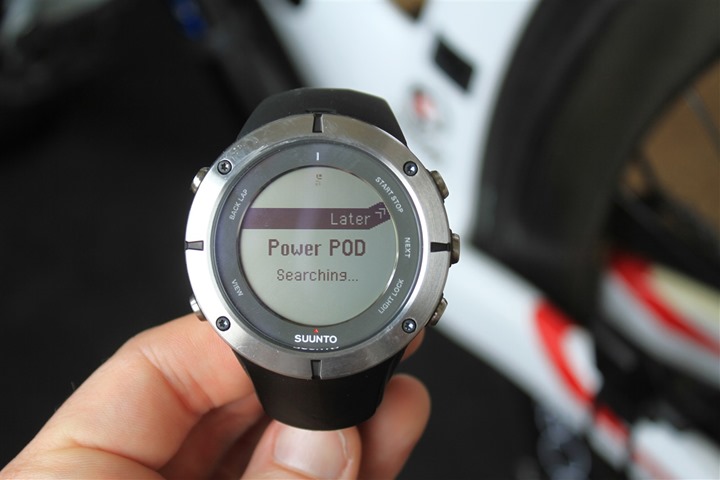
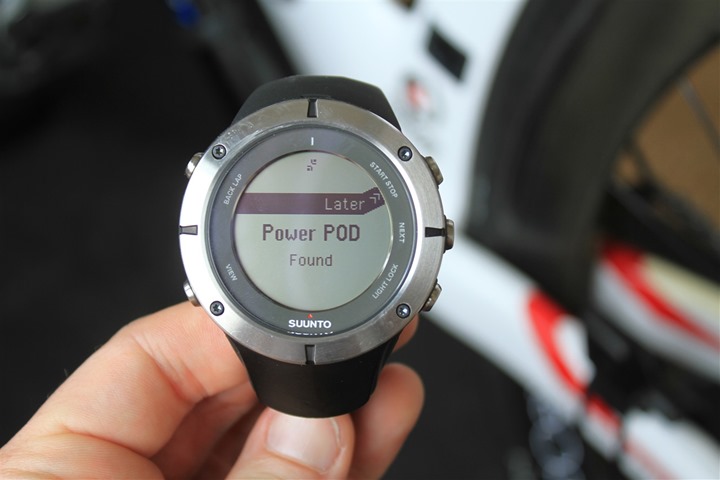
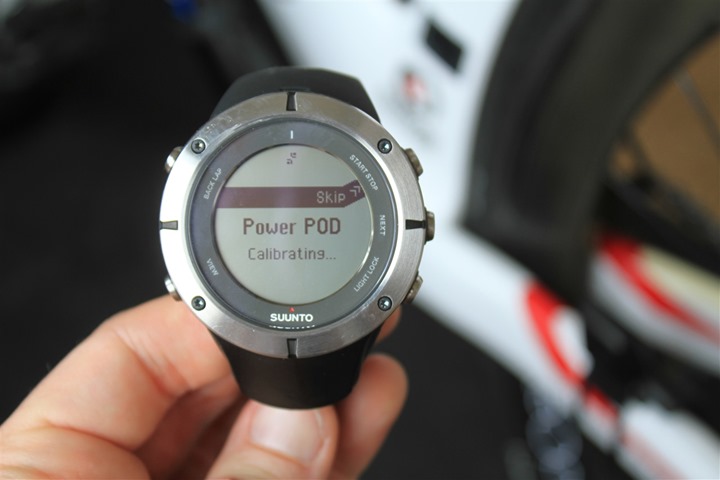
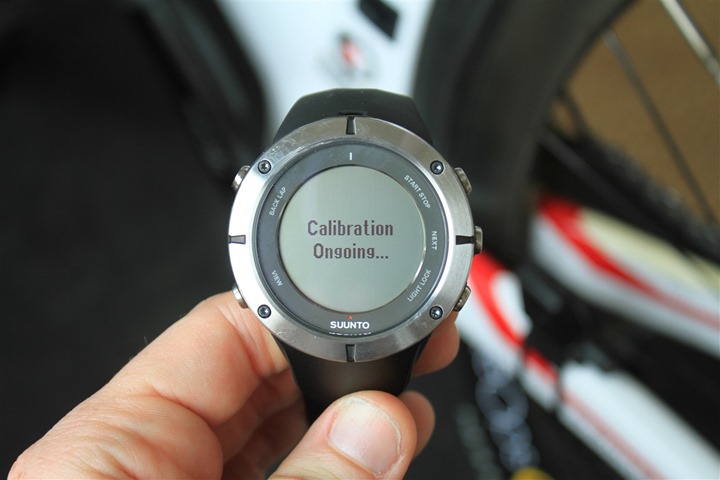
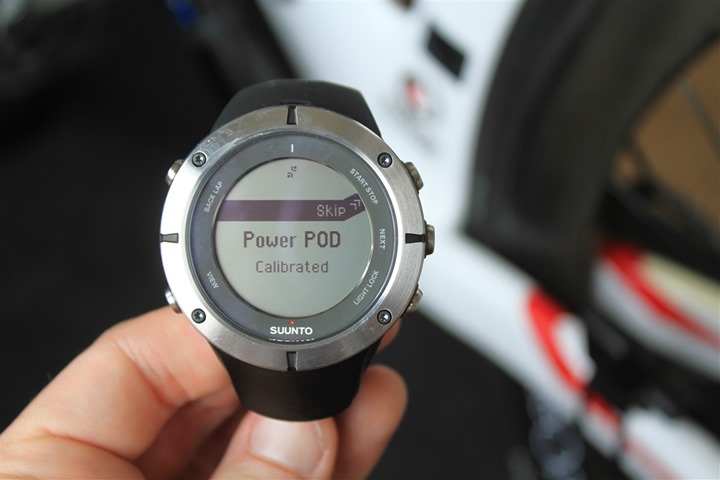


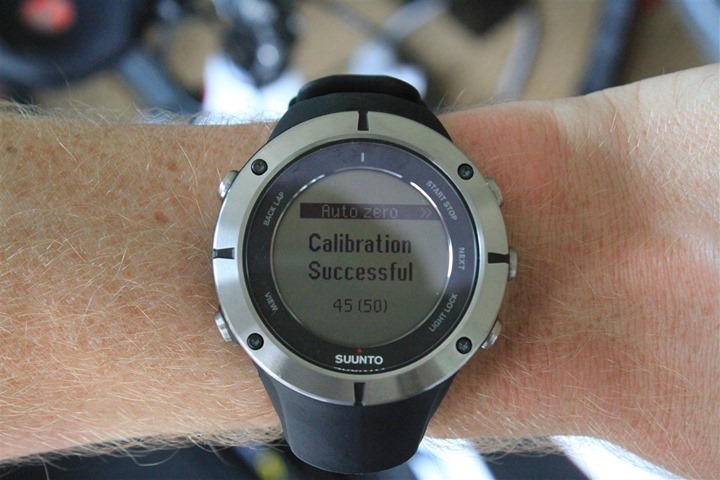
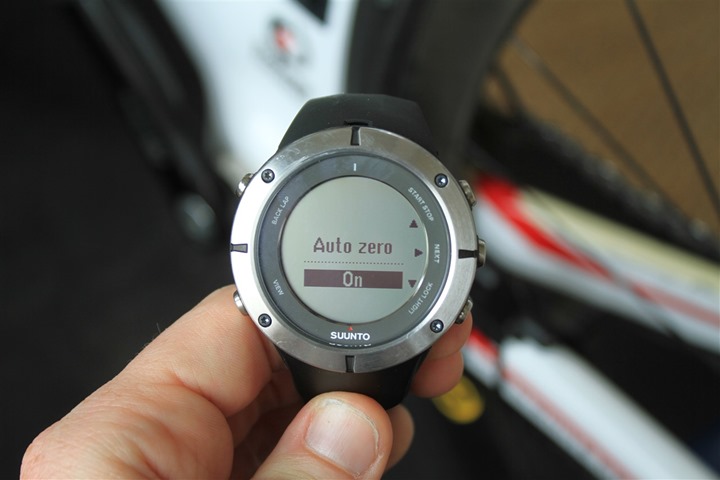
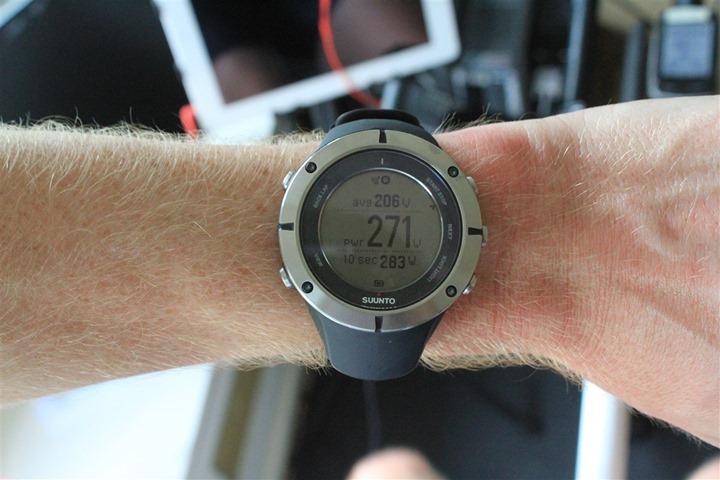
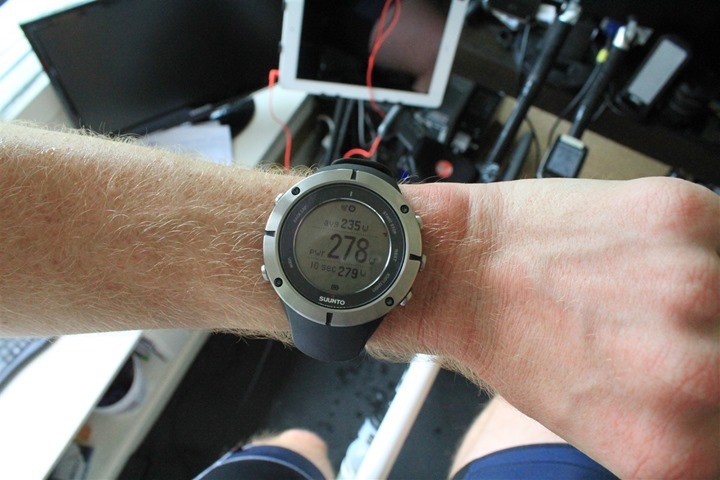
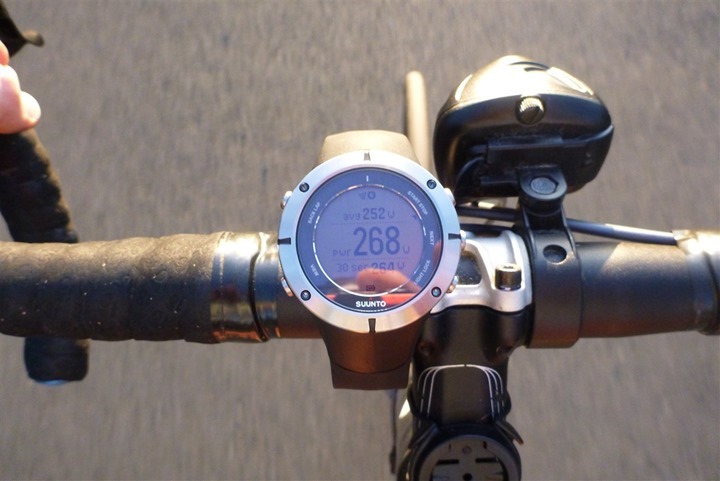

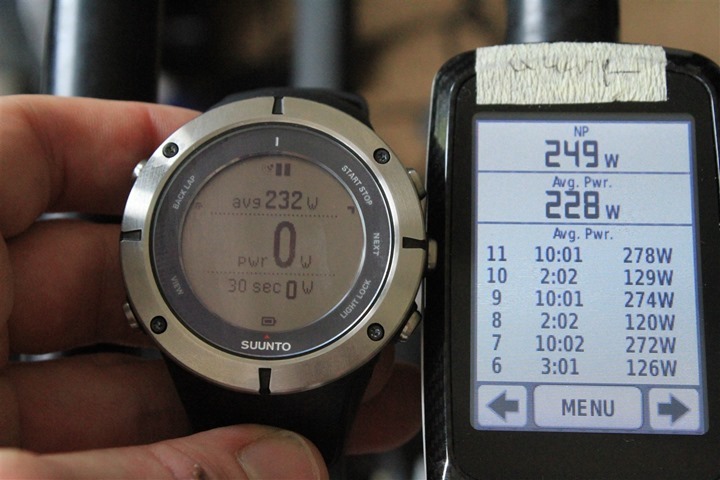


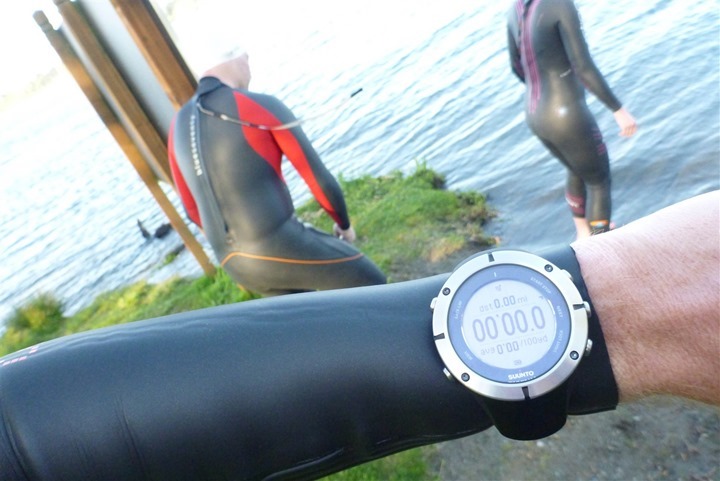

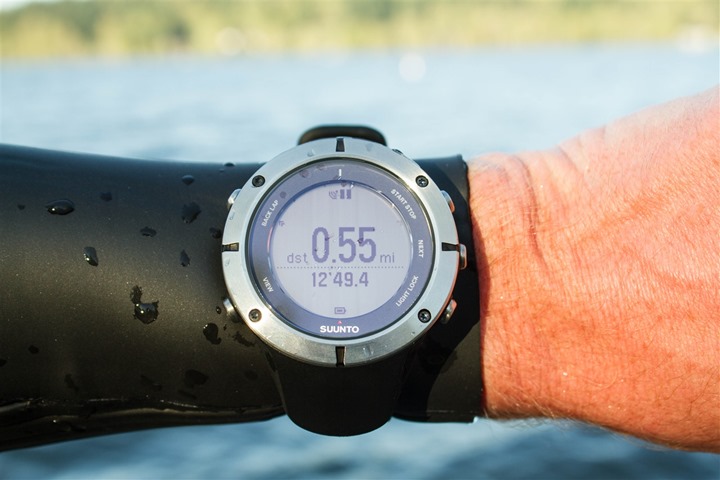
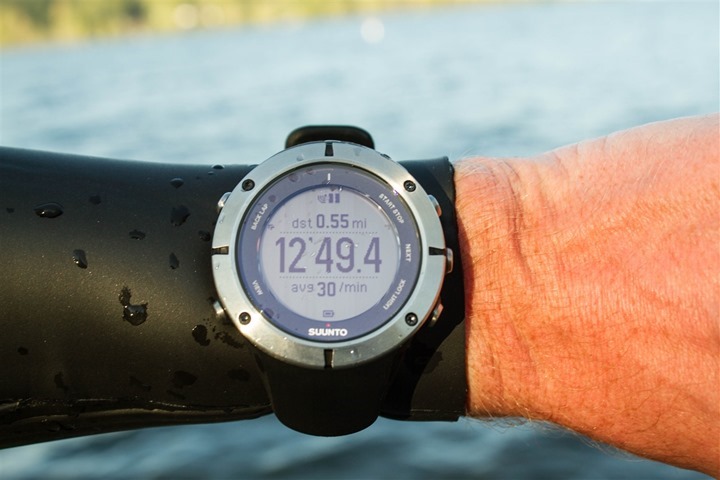

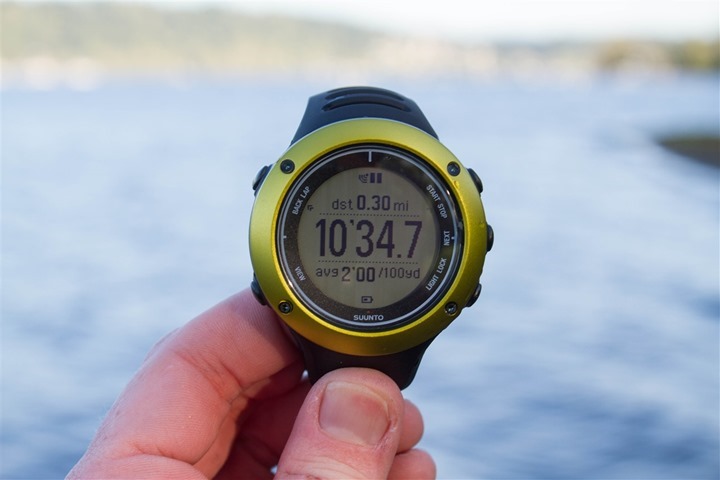
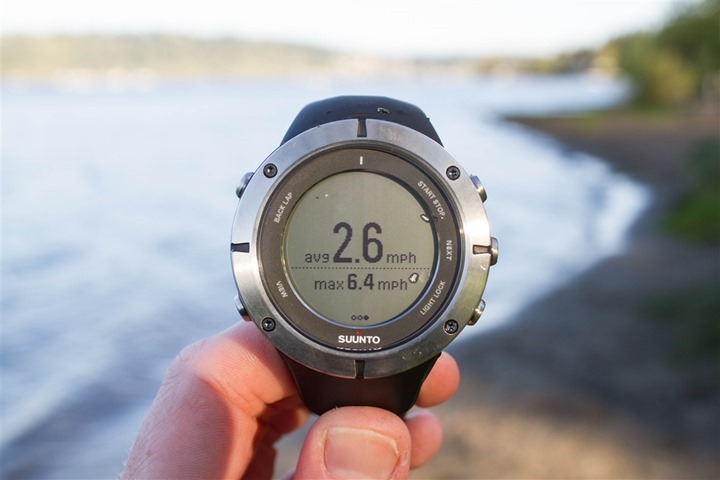

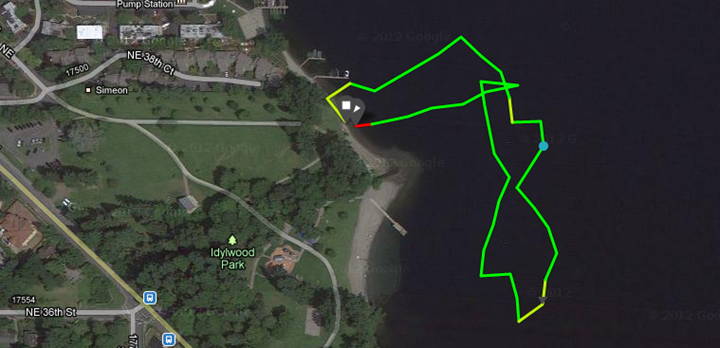

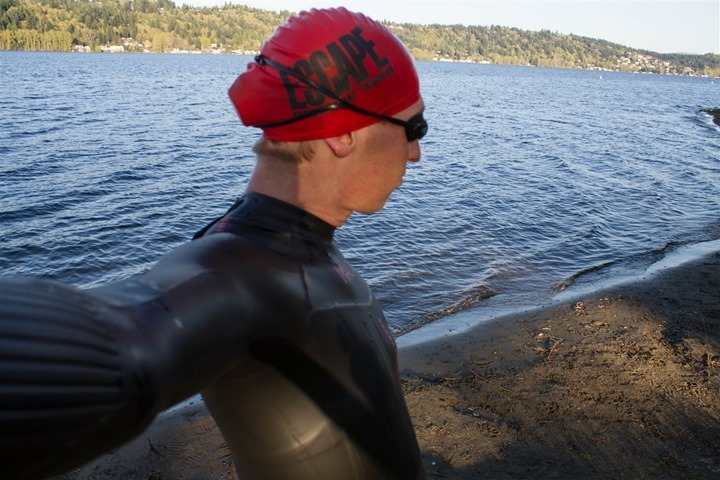
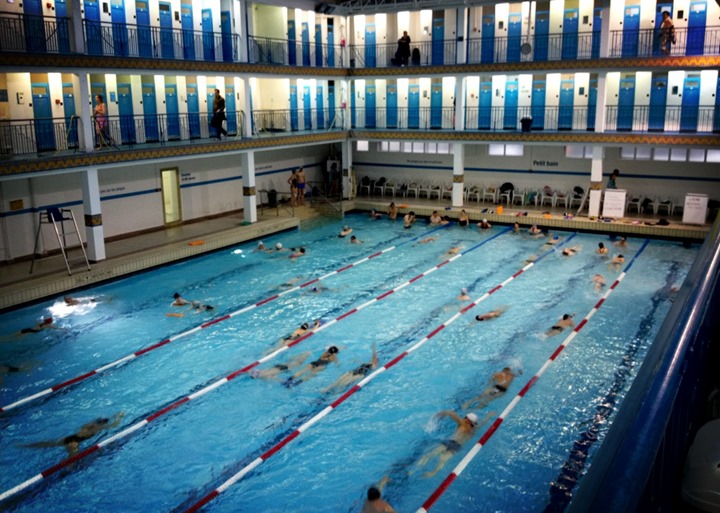

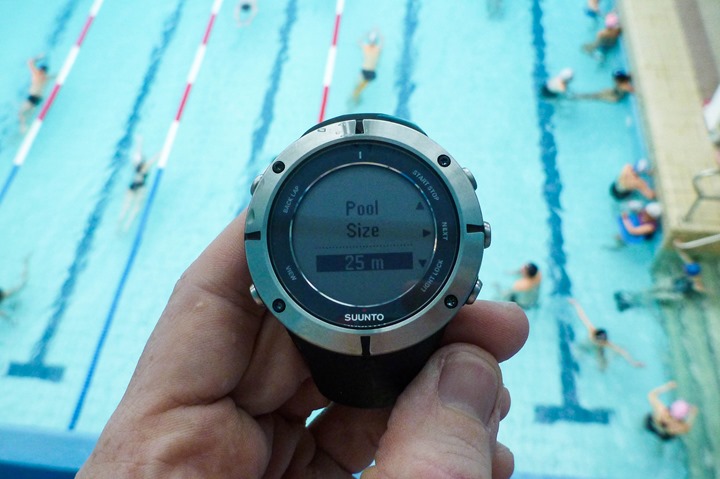
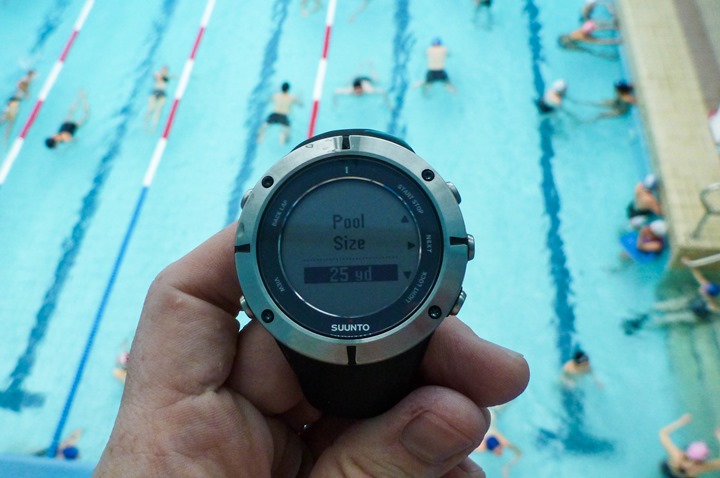

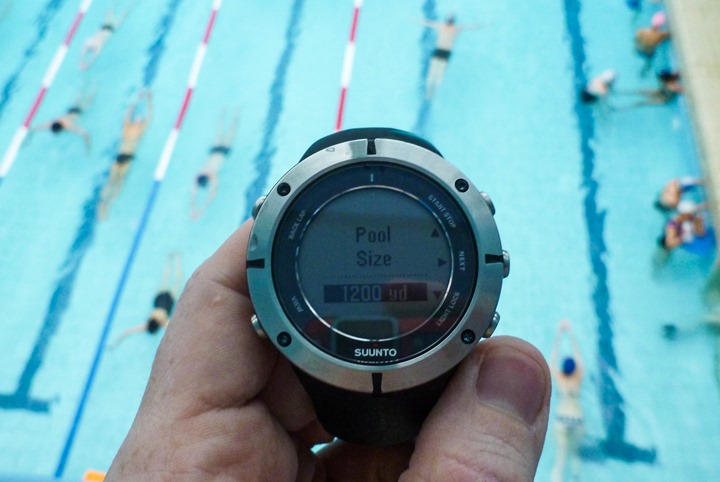
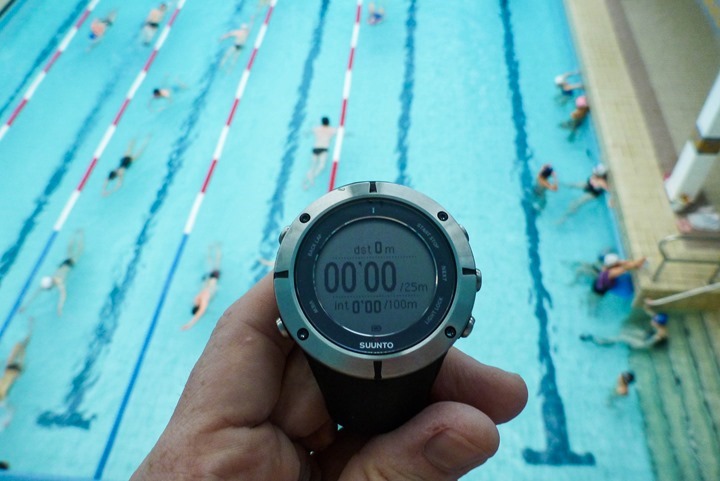
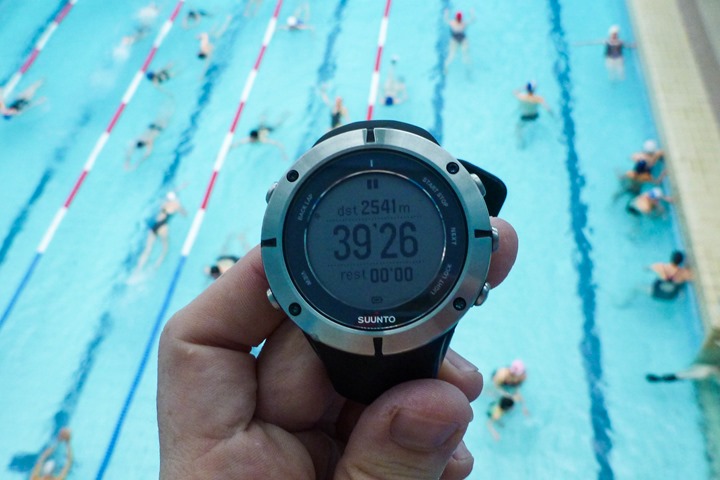
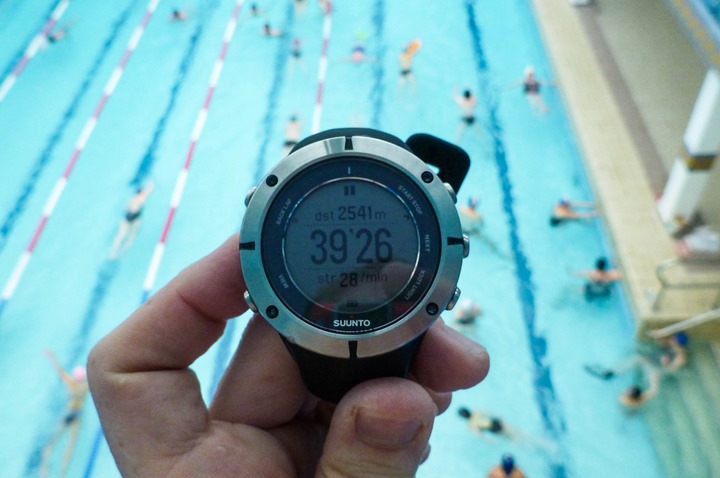
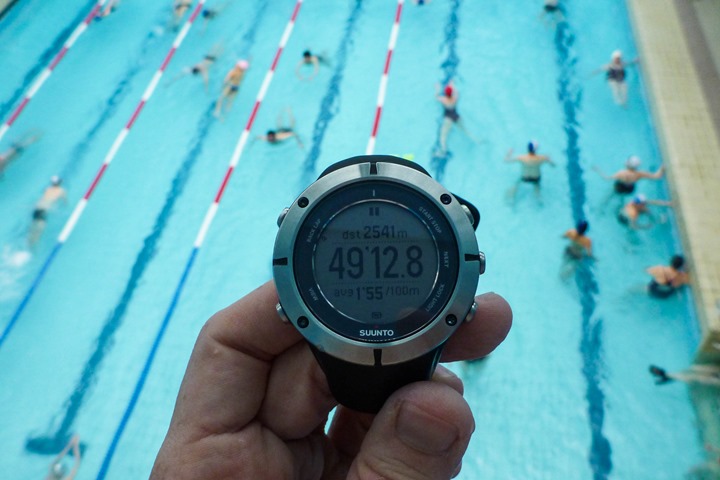



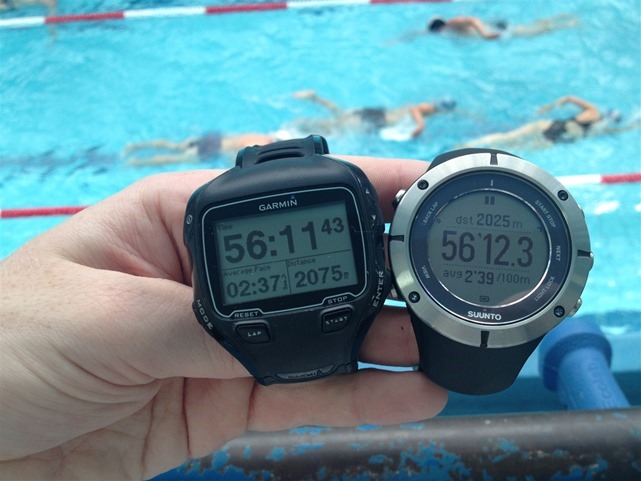
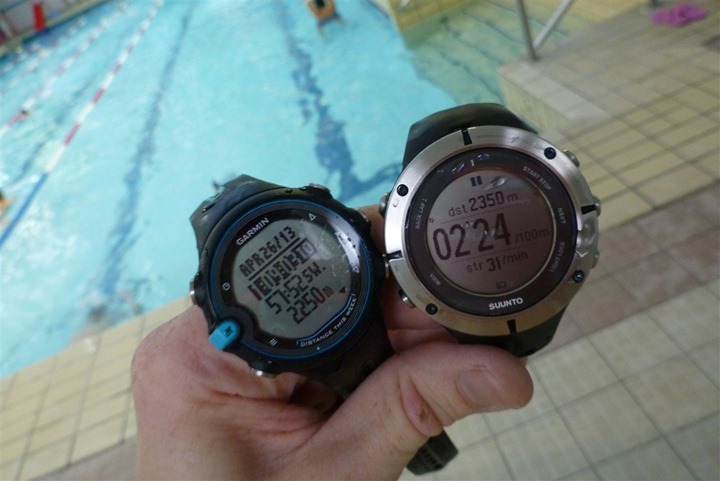
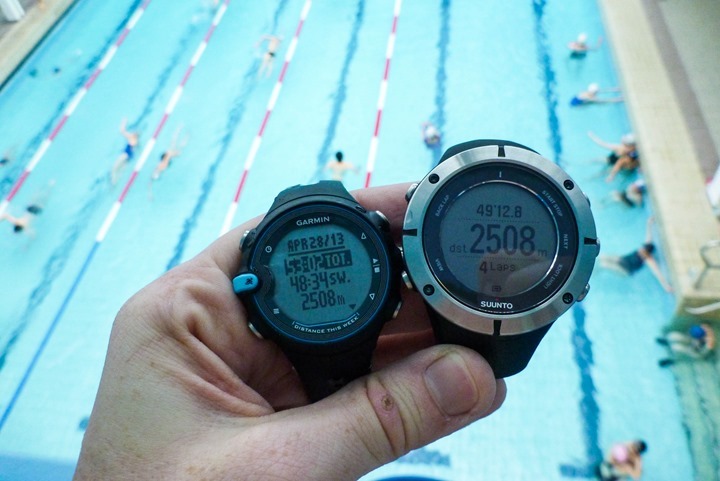
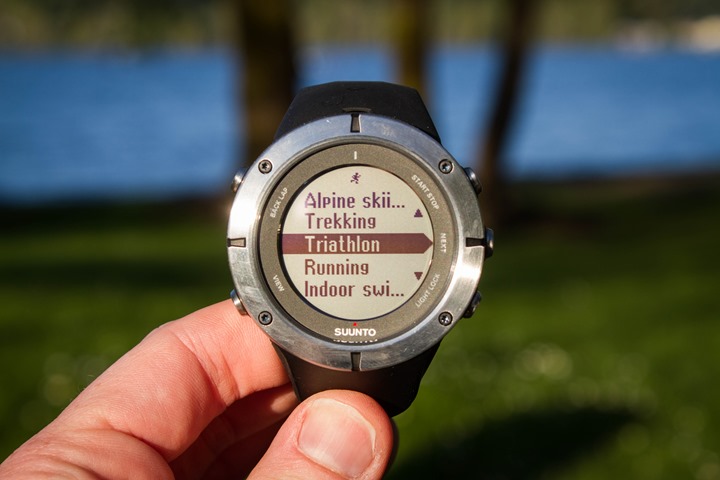
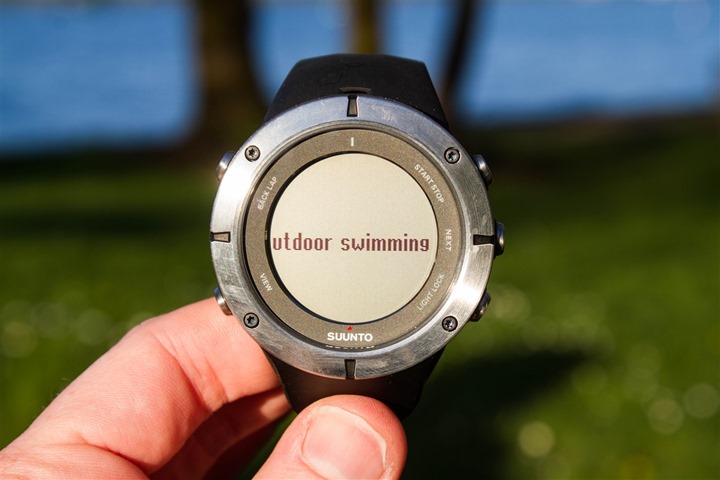
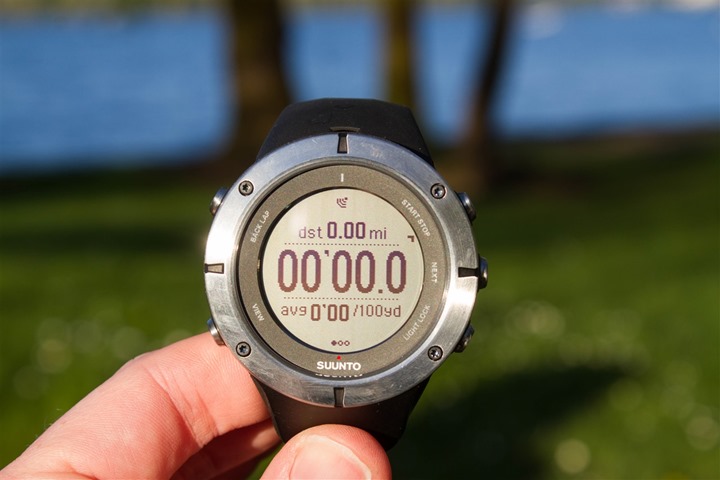
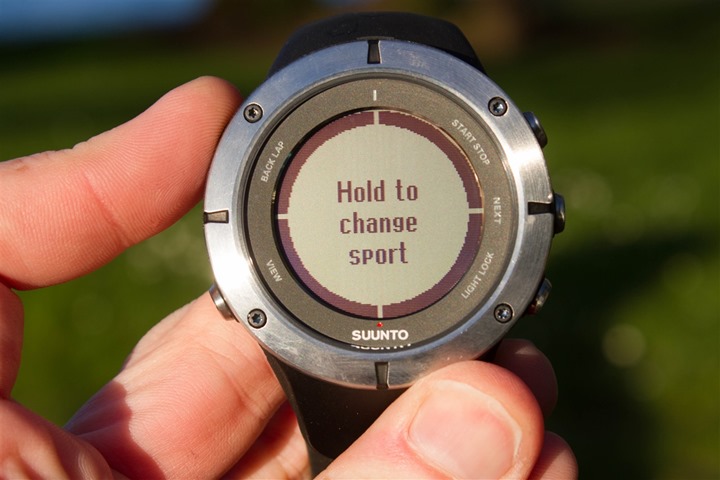
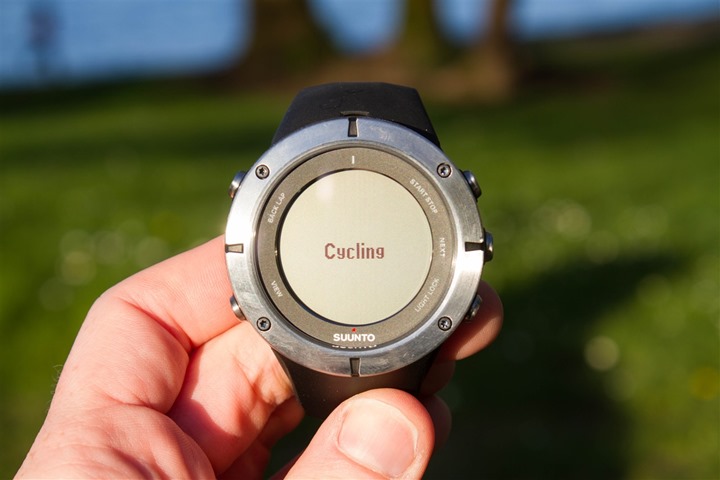
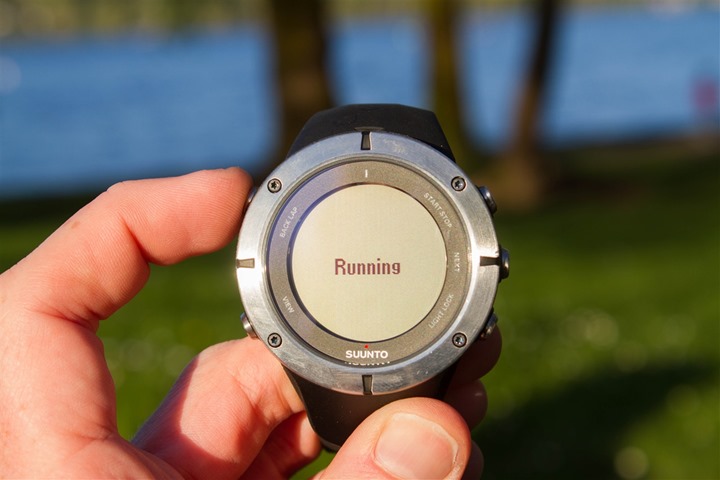
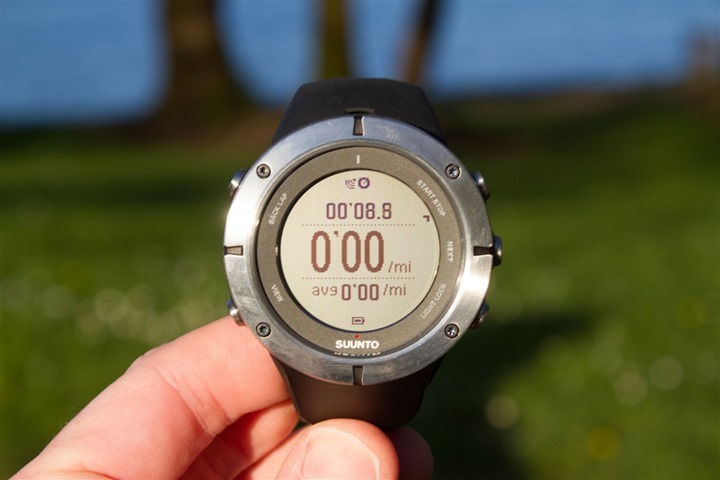





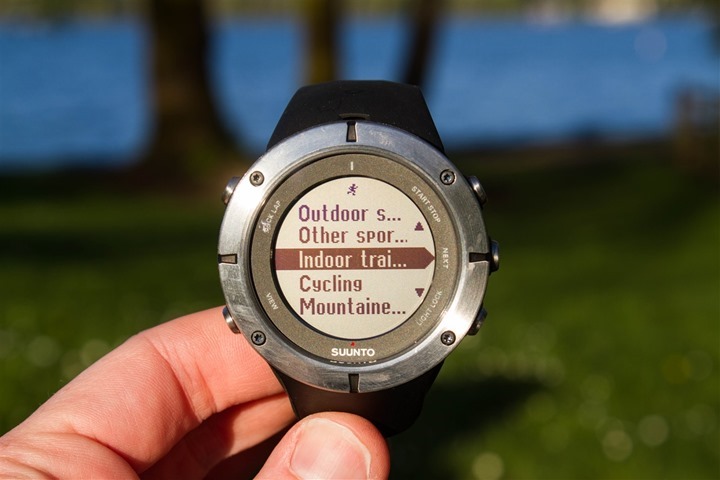
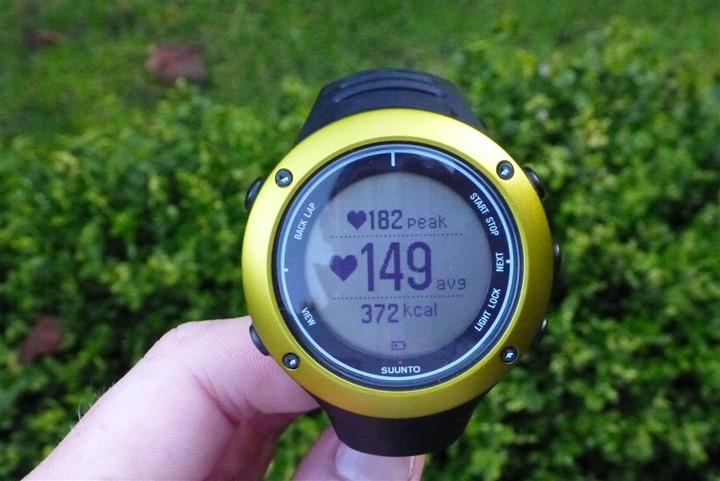

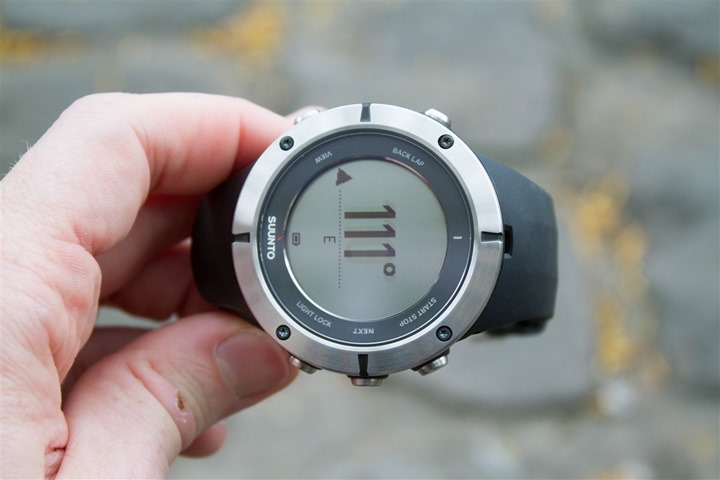
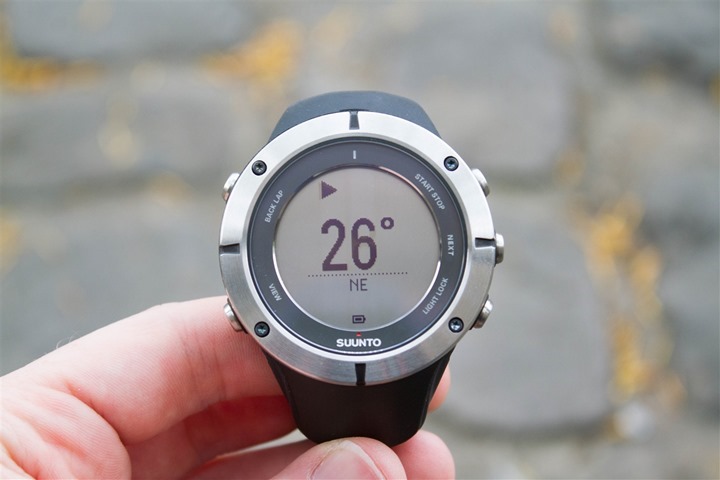
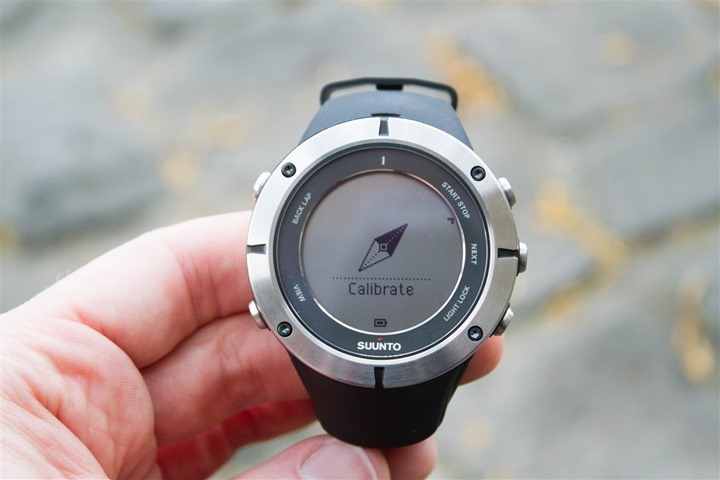

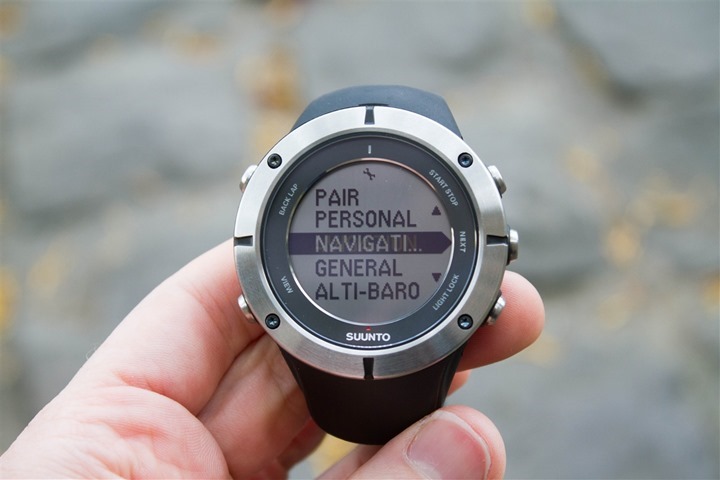

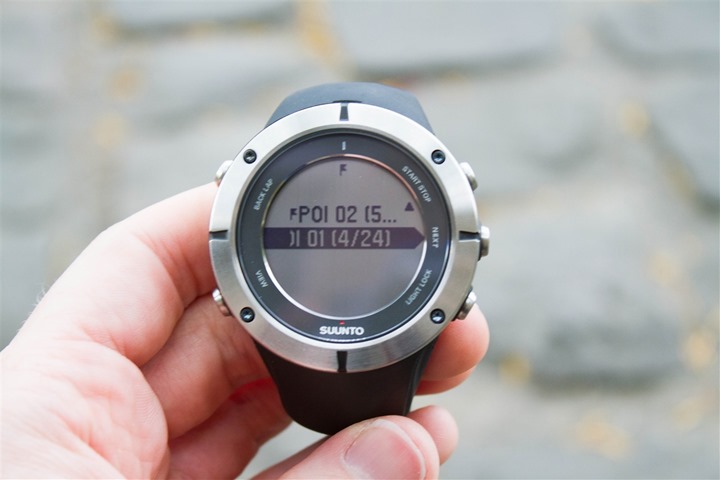

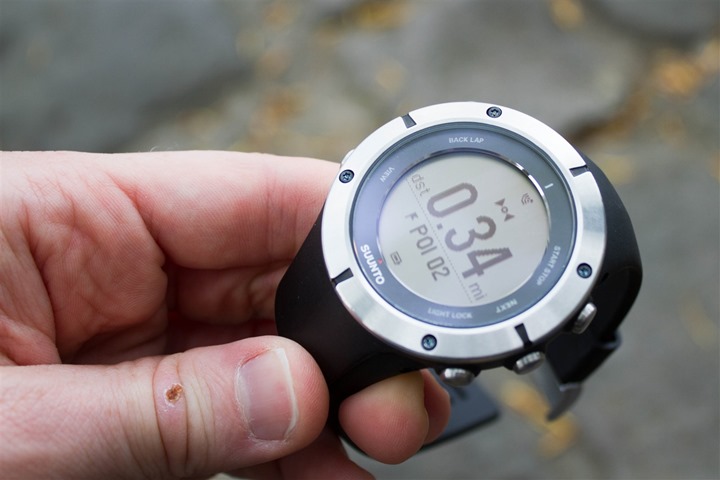
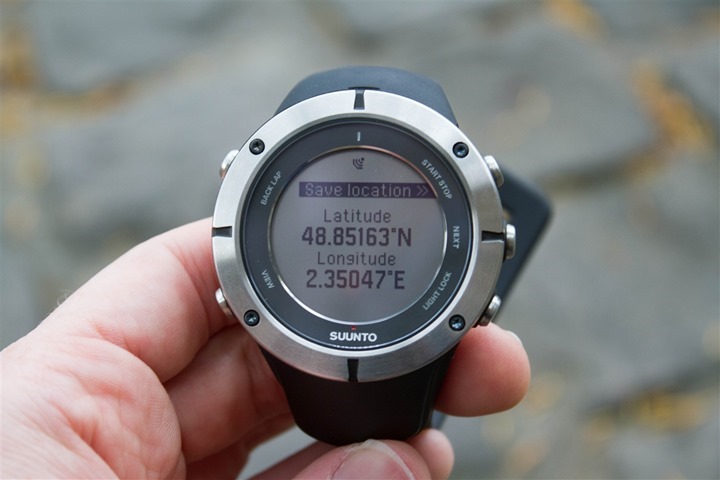
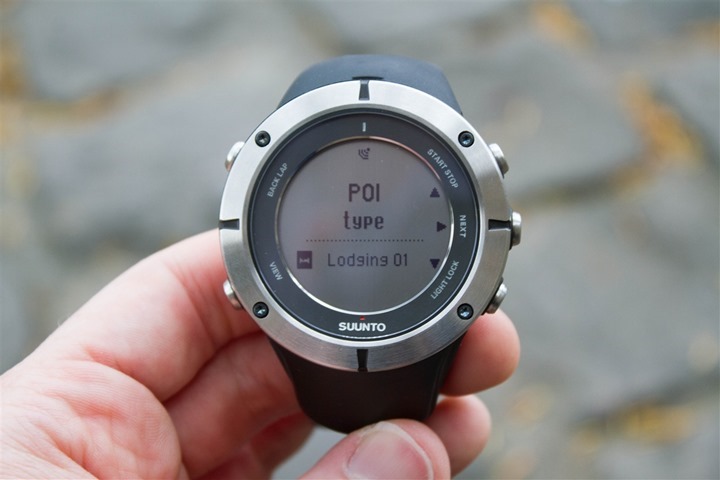





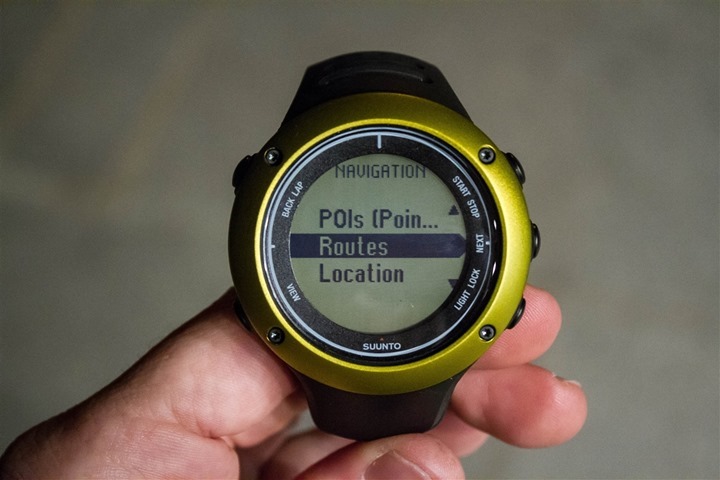
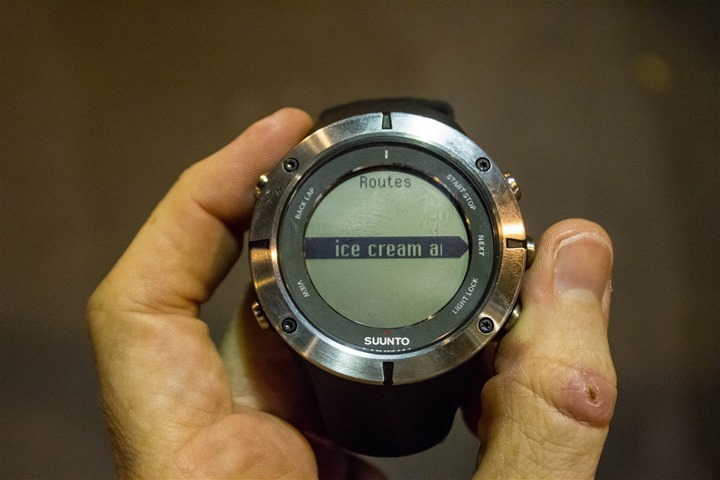
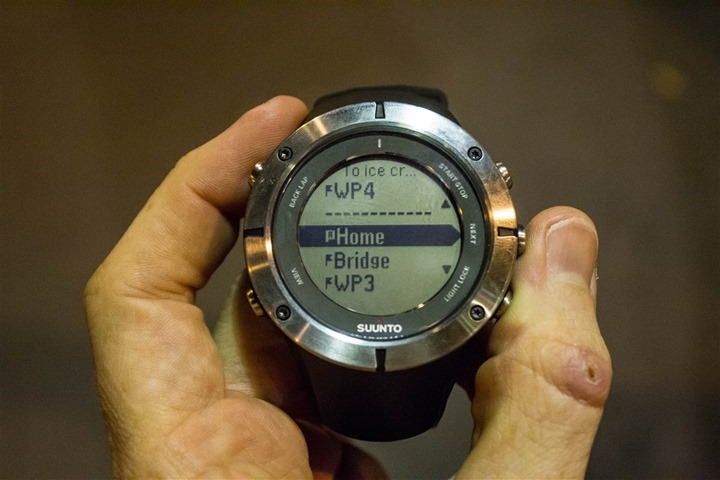
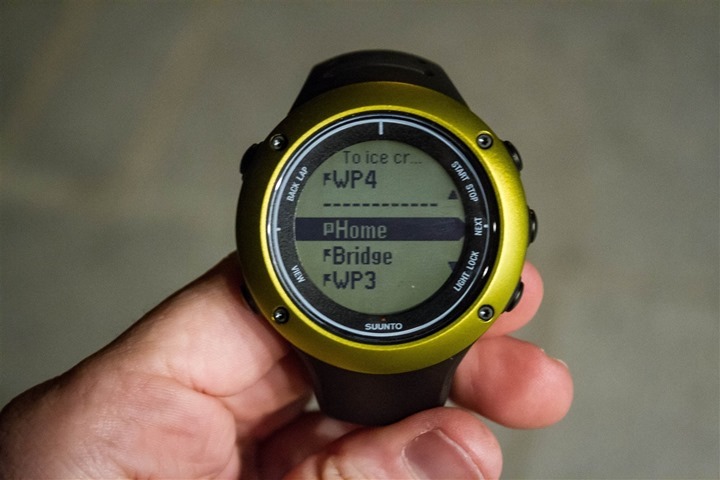
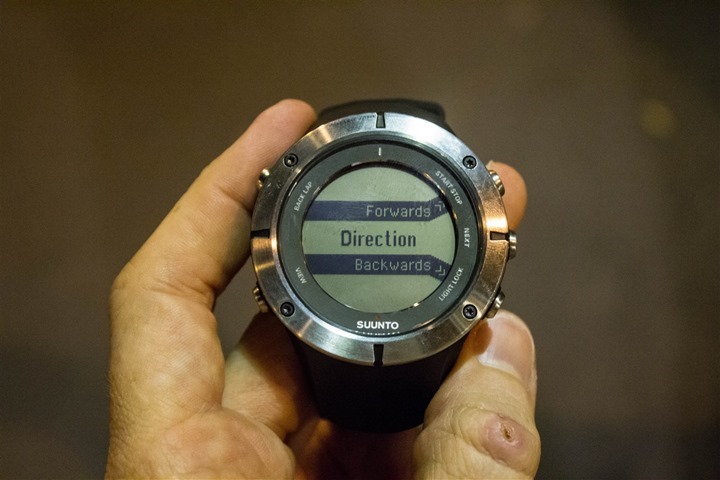
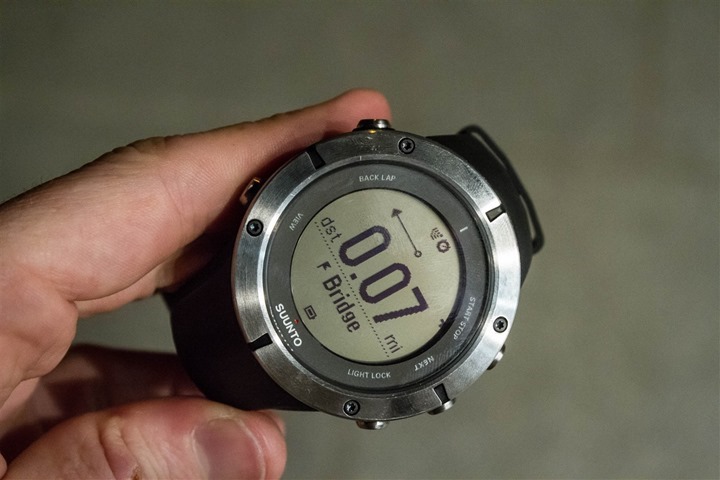
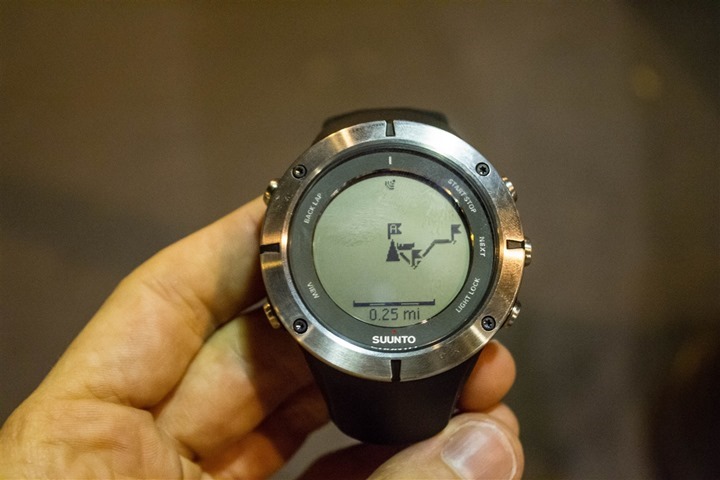
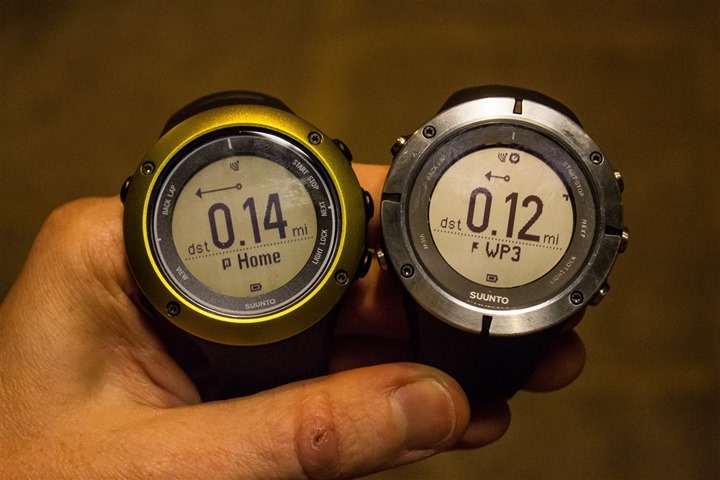
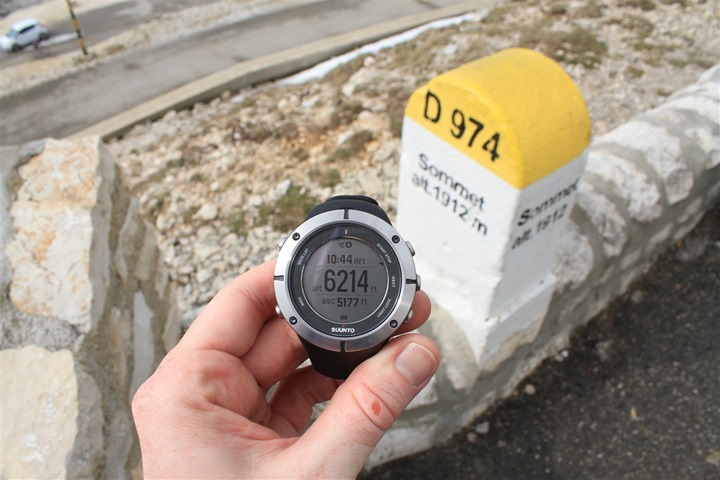
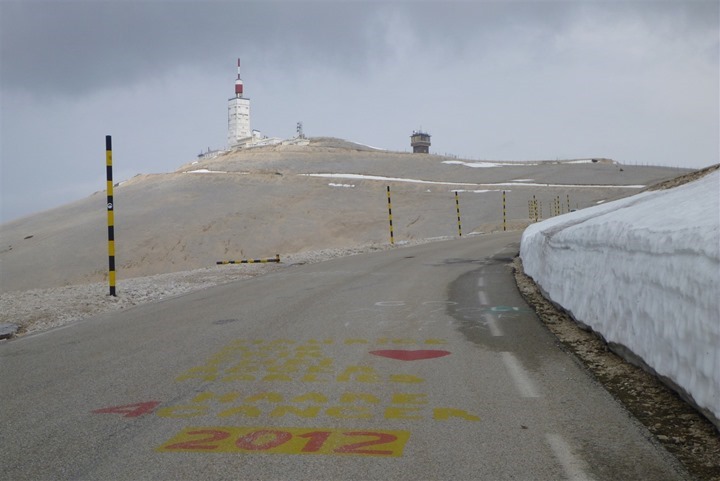
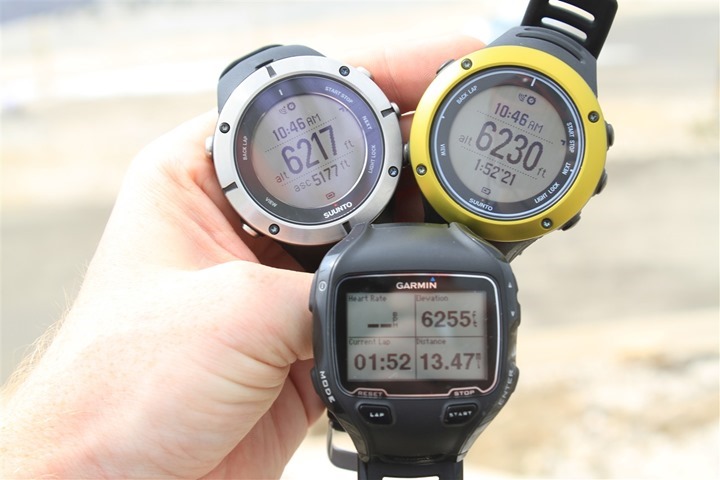
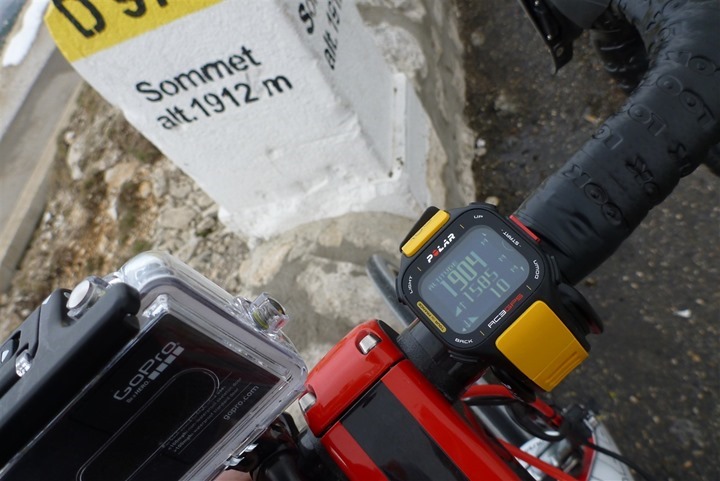

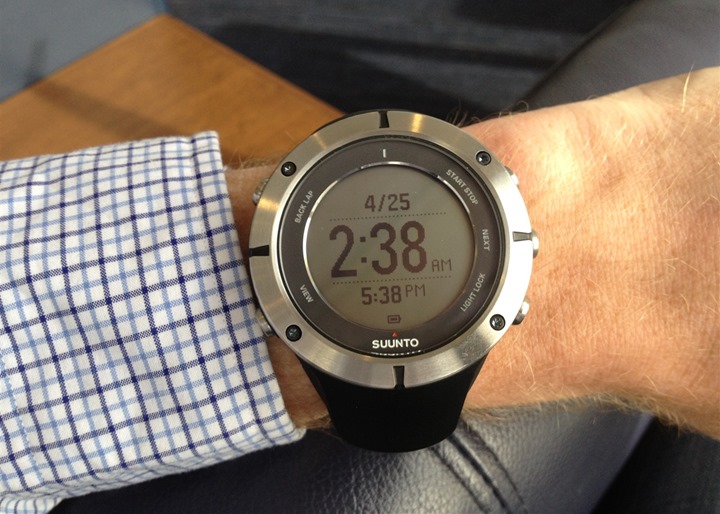
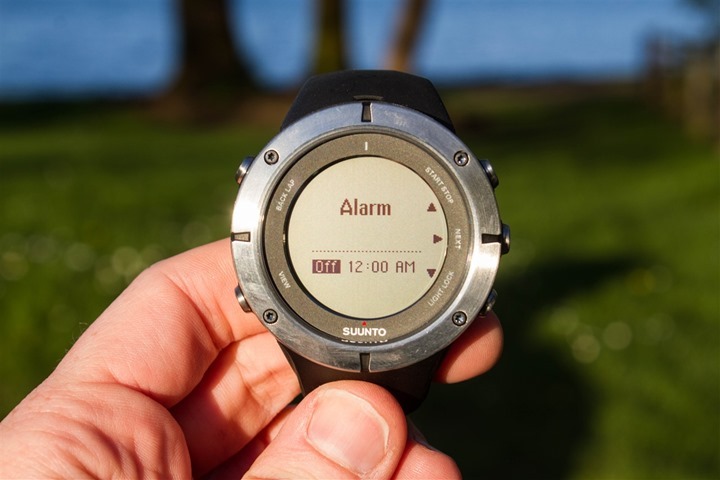

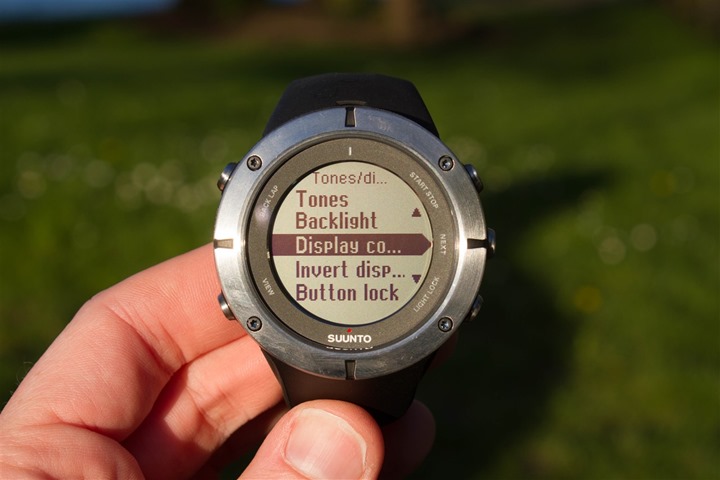

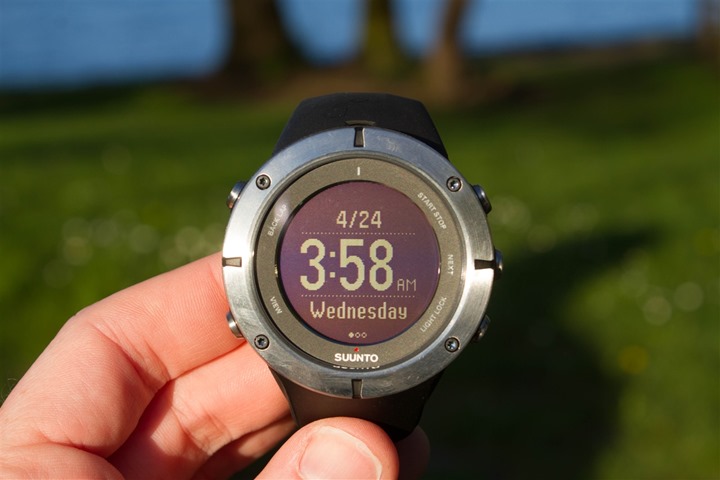



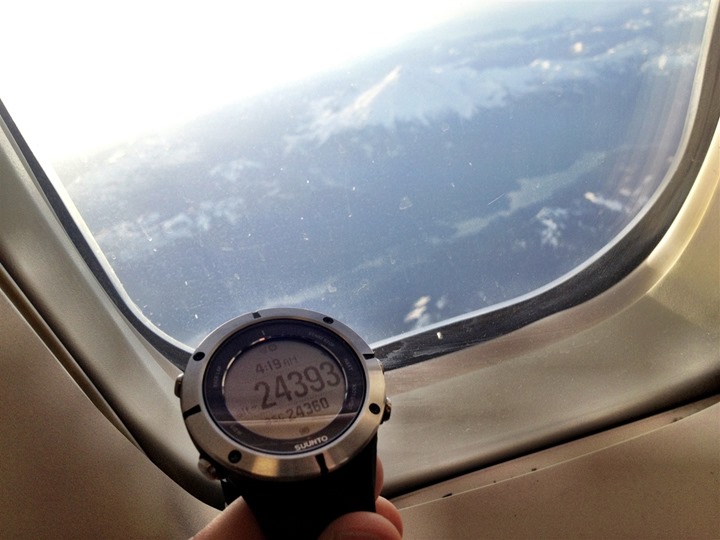

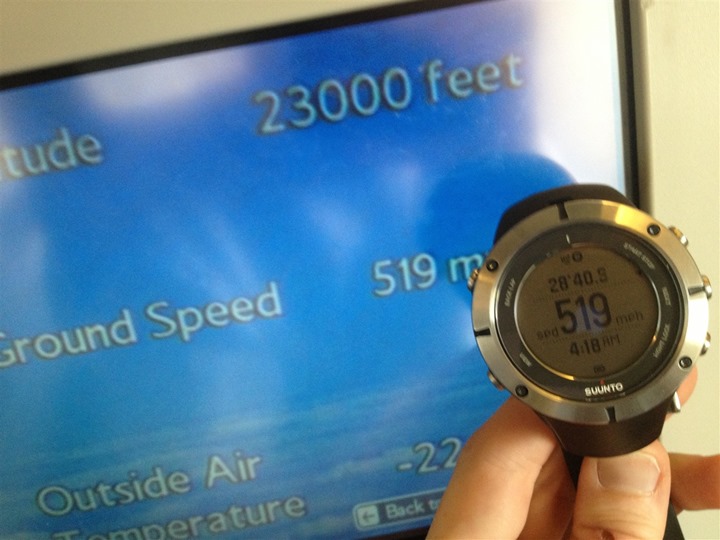
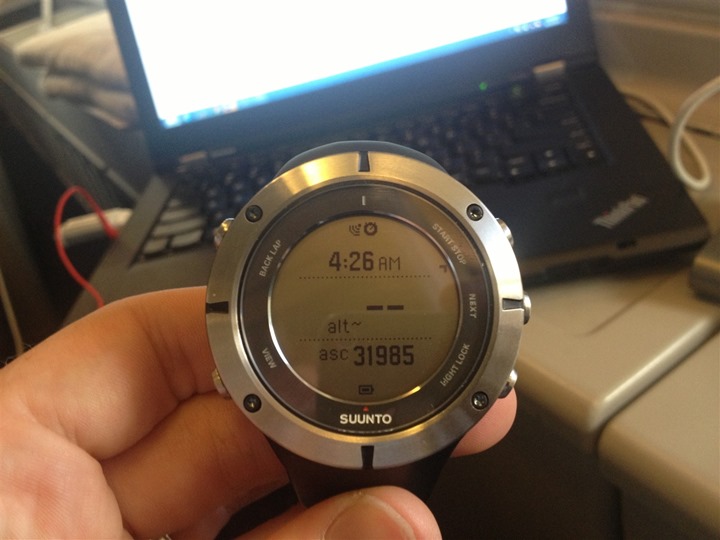


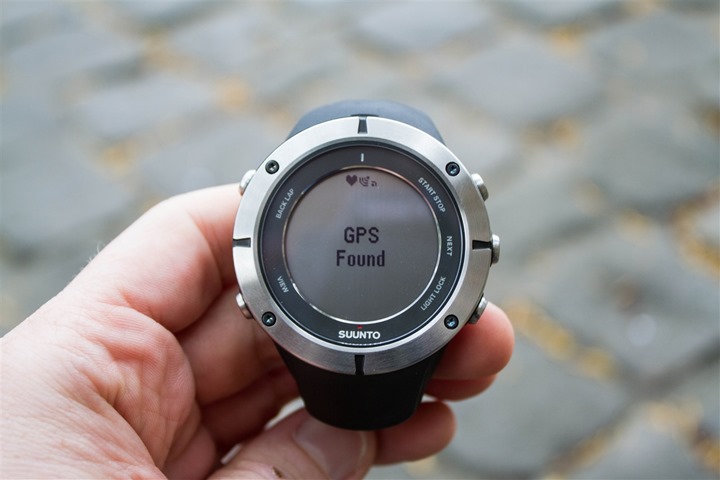

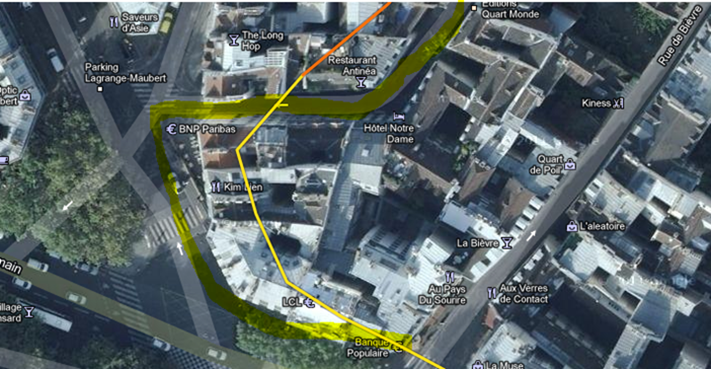
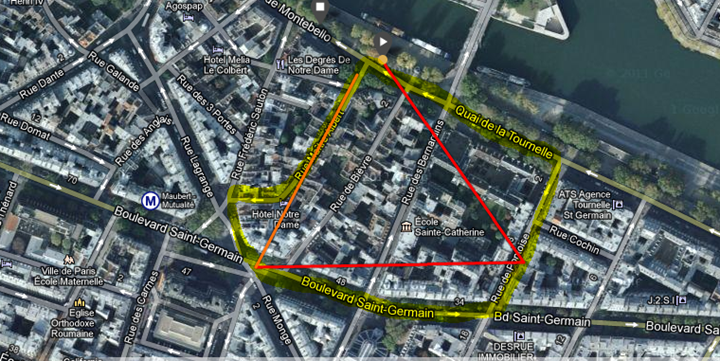










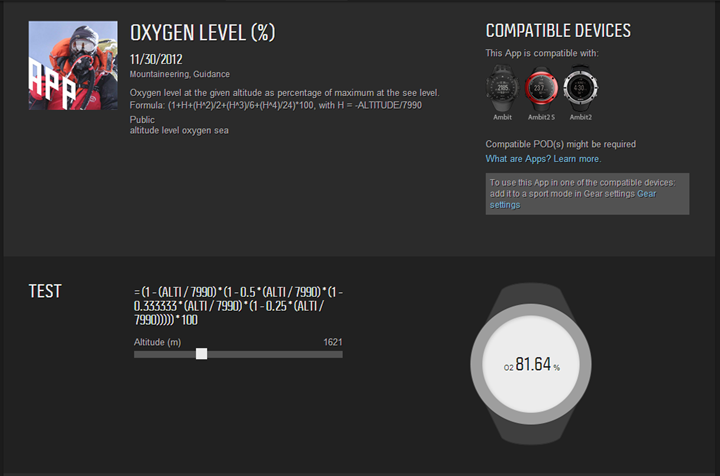

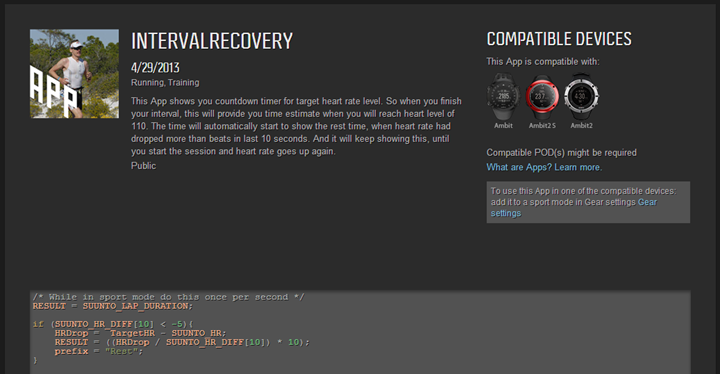
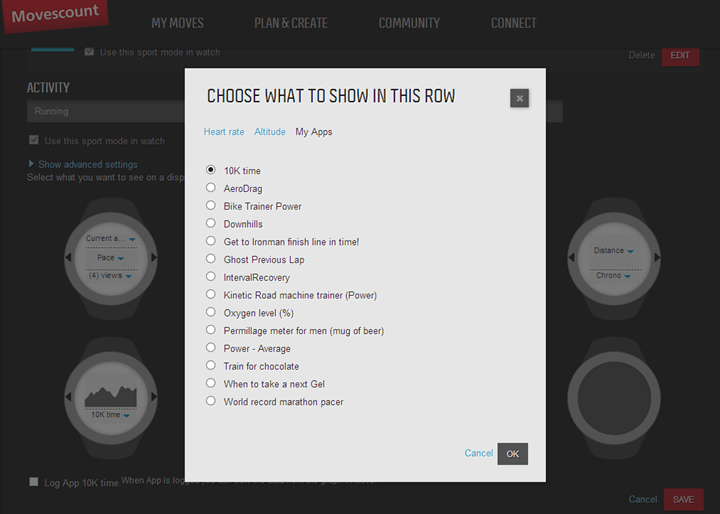
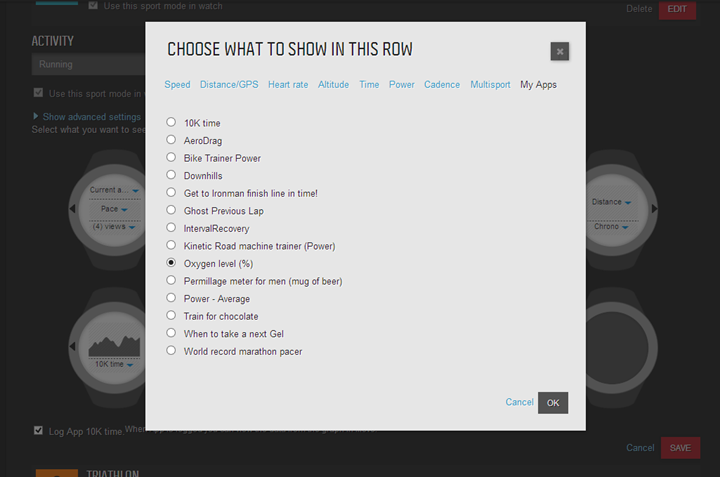
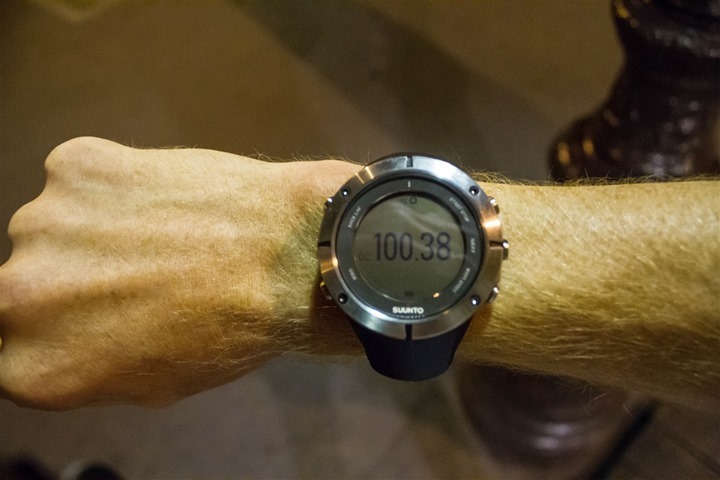
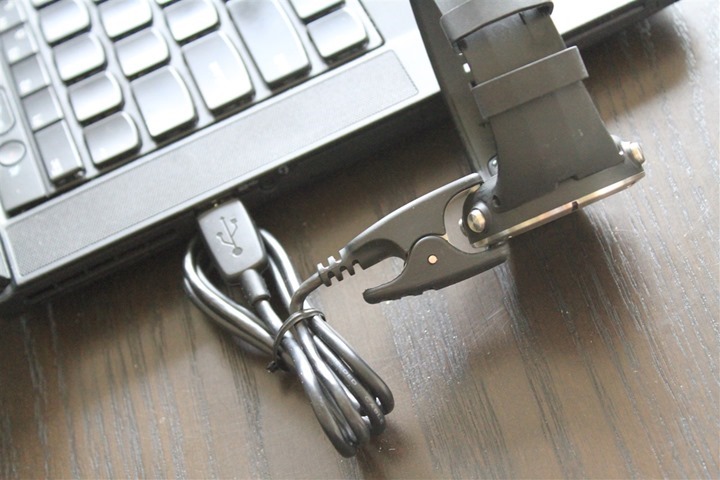
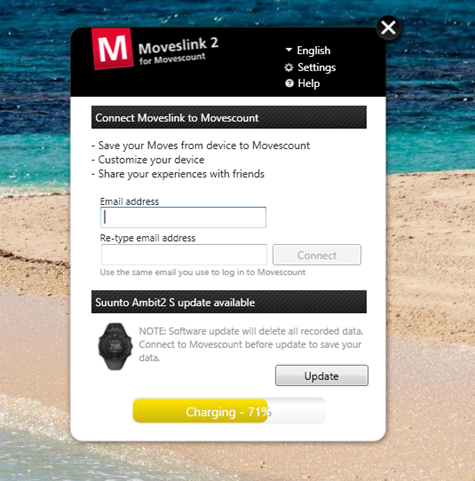
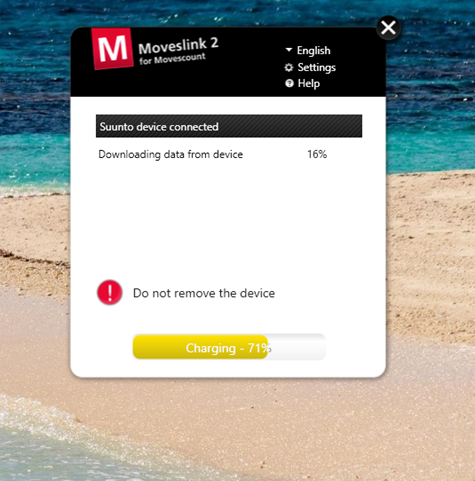


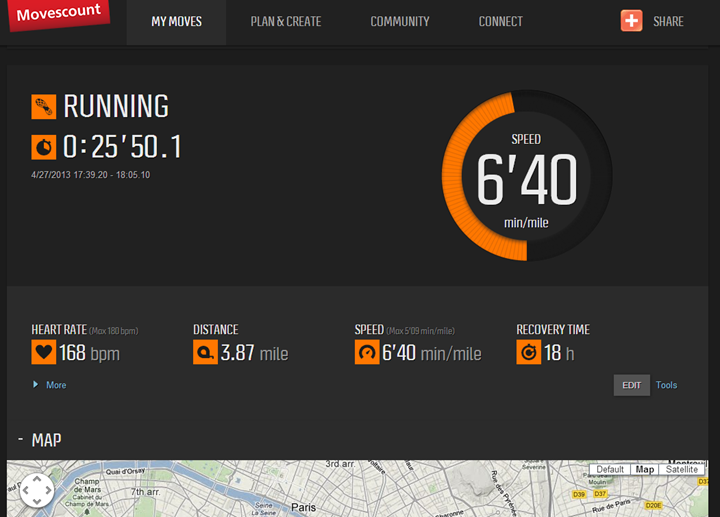
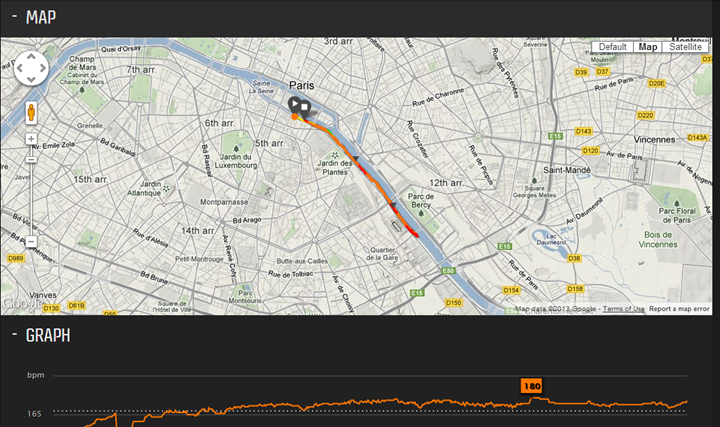




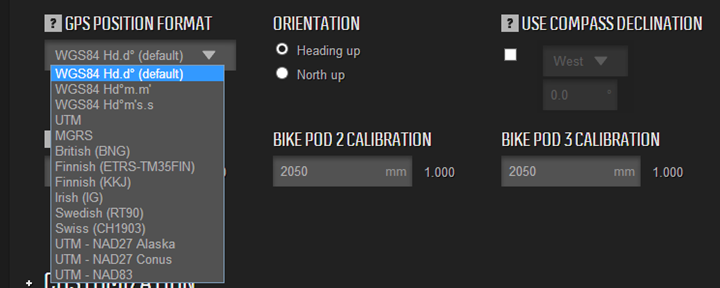

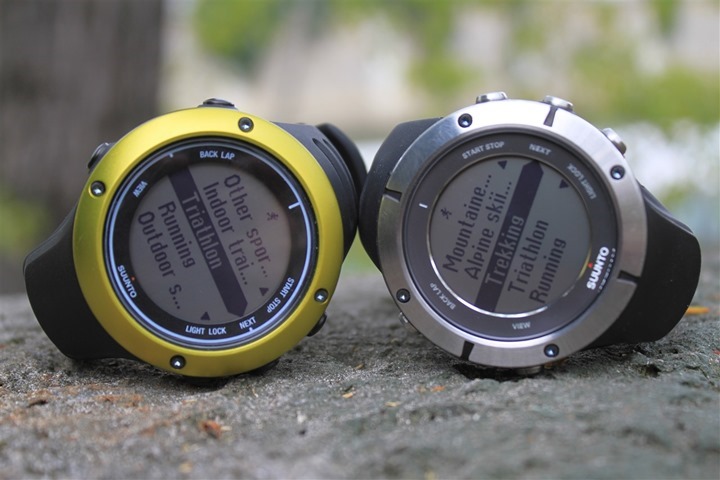
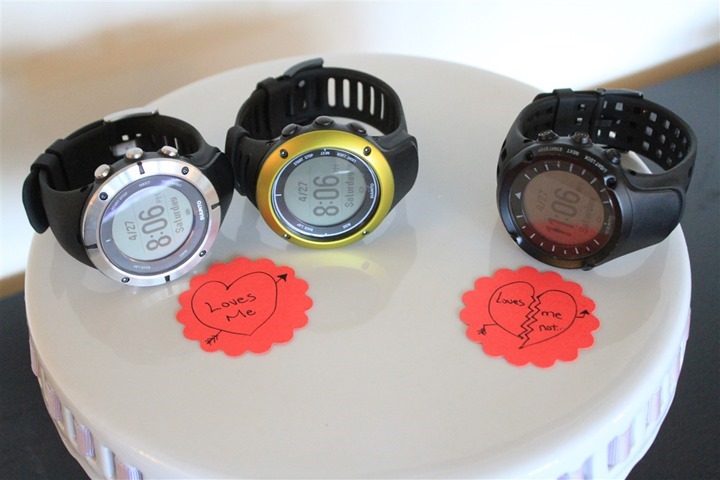
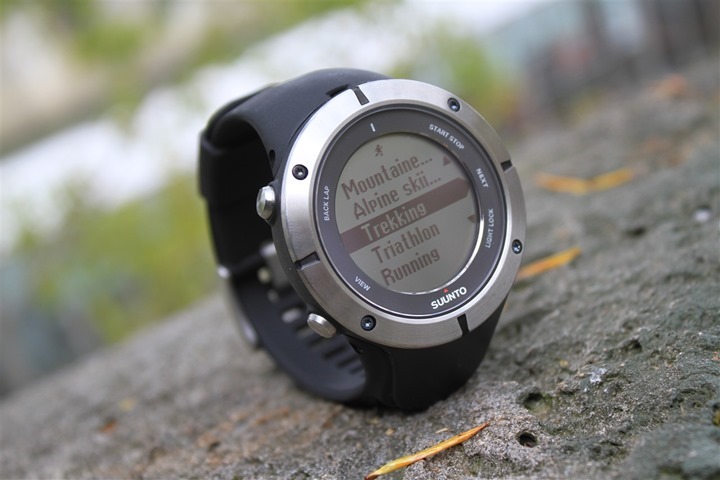





















Legends, thanks for the replies!!
Very helpful
Hi, im using my Ambit 2s watch for outrigger, and have found it doesnt instantly detect shifts in speed. I stopped, and it took what seemed an age, maybe half a minute to tell me i wasnt going fast; and for pickups, it doesnt record that I’m actually moving faster. Is it me, my settings or the watch?
That depends on the pods you are employing and gps scan frequency (adjust it in the advanced settings).
thanks, the frequency was on 10 sec for that particular sport, hopefully better results now :-)
Can anyone from of personal experience tell me, please, how this unit compares to Polar RCX5, purely from tri point of view, leaving all evident tracking specific advantages of Ambit aside.
And….not trolling here, genuinely wondering… 2 dollar digital watch will last you whole year, but 500+ dollar unit when only used as digital watch lasts 50 days max… Yes it doesn’t cost 500+ because it’s a “just a watch”, it’s much more, i got it. But why it’s only lasts 50 days in watch only mode. No gps, no hr, nothing, just clock – 50 days!
Can anyone explain?
If you run a laptop computer and only display the time on the screen, it is still a computer, not a clock. The chip in a digital watch does only one thing at very low power. The chip in an Ambit 2 (or any advanced watch) is a lot more complex and uses a lot more power, even when it is only sitting still.
It’s mostly about the screen and the battery draw there. A 2 dollar watch has a different type of screen requiring less power to illuminate (less real estate, different technologies, less contrast/brightness options, and on and on).
Comparing to the RCX5 is quite different both from a display technology and more importantly the lack of GPS within the RCX5. Thus, it’s sorta ‘cheating’ in that regarding because you have to carry a separate GPS pod for the RCX5. Ultimately, from a purchasing timeline standpoint, given the age of the RCX5, and the current state of tri-specific units from other companies, this would be a poor time to purchase a new RCX5.
Thnx guys for replies. Knowing that in today’s gadgets screens are the most power draining elements i was wondering if that was the case here. Although i dismissed this idea thinking that monochrome, low resolution, small screens wouldn’t be this energy hungry. And considering extreme low CPU tld, i was leaning towards the idea that there had to be some “tracking” functions on the watch active all the time that put constant “pressure” on CPU.
And, Ray, thanks for heads up on RCX5. I am leaning towards purchasing Ambit2, but this is not cheap purchase, so it is nice to get some prospective an other available choices.
I suspect battery technology makes a difference, too. Silver oxide batteries in the two buck watch are designed to deliver a very small, constant current and keep that up for many months. Lithium-ion batteries are designed to deliver much higher currents when needed. Their self-discharge rate alone would discharge them completely in under a year.
Hi,
I’m a regular user of Garmin devices and a decided to try Suunto but my first experience don’t have been god
I bought a new Sunnto Ambit 2 Black and in one month of use it crashed 5 times and I could not finish my trainings, even crashed during a marathon!
A message appears on the Suunto Ambit 2 display “Connect to movescout”. When I connect moveslink could not synchronize and at the end I forced firmware update. I emailed Suunto support and they said to reset and reinstall the software on the computer. I did that and it crashed again!
But the problems continued and now I’m finally returning to Amazon for refund.
I don’t know now what to do! I think I will buy the Forerunner 910xt. Or should I by another Suunto Ambit 2?
Do you know if the suunto cadence pod is compatible with the 910xt?
Best Regard
No, the Garmin units are not compatible with the cycling cadence pod from Suunto. These accessories are all private Suunto-ANT, and not ANT+. The single exception being the Suunto footpod, which is dual ANT+ and Suunto-ANT.
I bought ambit 2 after reading your review and i bought FirstBeat athlete software.
For the same data training i have two differents epoc and TE, with suunto movecount and FirstBeat software.
All the input parameter are same. Asking Suunto or Firstbeat why no anwser.
The difference is as big of 35 % wich one is the good mesure Suunto or Firstbeat ?
What do you tink a bout that ?
Thank you very much for the response.
Màrio definitely you got a bad watch, it happens, you won’t have the same problems again. I have had a lot bigger problems with the FR910XT and with 3 consecutive watches I returned. Both instruments have good and bad sides but the Ambit 2 is very sturdy and reliable when compared to the FR910XT which is more accurate in swimming but totally unreliable (cheap chinese plastic junk imo).
That is a decision each of us had to face. I am right now bombing the Ambit dev team to fix the swimming problems, do mind that the Ambit 2 is a brand new unit while the fr910xt is 2 yrs old now and still plagued by both software and hardware problems.
My personal feedback to Suunto about the Ambit 2, we’ve been discussing 3 months about these issues.
Ray I think you should see this: link to youtube.com
The problems of:
1) Style recognition.
2) Distance counting.
3) Time management.
Are all in this video feedback I just sent them. I expect MAJOR changes and I am very optimistic because I know they are listening to me but at present time this is what you’re getting with the Ambit2 indoor swimming.
A NIGHTMARE.
Hi
I’ve got a specific question about pairing the Ambit 2 to the wahoo Kickr.
As all of you know, the Kickr has no backwheel which means that my Garmin speed/cadence sensor only transmits my cadence. The speed (and distance) is transmitted by the Kickr as I can see it on my Edge 800 and iPad.
If I pair my Amit 2 to the Kickr, only Power is transmitted. If I pair my Ambit 2 to the Garmin speed/cadence sensor, only cadence is transited.
Is there any way to tell my Ambit 2 that it should use the transmitted speed (not form the Garmin speed/cadence sensor) but from the Kickr?
Thanks in advance
Martin
Problem shown at minute 4 of my video was solved with today’s FW update. :-)
Told ya to be optimistic, they ARE working on it.
How did you access the firmware update? Doesn’t seem to show on the Suunto site yet.
It’s up on Movescount.com now.
As I never swim indoors this update is useless….contrast adjusting was always there…nothing new here. Have had 2 Ambit2 saphires with the same display problems as the Ambit 1…the one I have now seems to be ok but then again…its only 2 weeks old now…first 1 started devoloping display issue after 3 weeks so will just have to wait and see…
Not everyone can swim outdoors 100% of the time because of freezing temperatures or shark presence.
Suunto had to deliver this easy fix in view of much harder fixes that are strictly needed to keep up with the competition.
At present time all the 3 problems listed in the video I sent them as feedback are there but the watch is SOLID. I have other watches where those features are reliable and working 99% of the time but that are not SOLID (3 sent to assistance in 1 year time).
In comparison, the Ambit 2 is still brand new basically and it has a HUGE potential.
Another person who had the same display issue as i had with the 2 Saphires claims Suunto has fixed this with their latest firmware realese! good news guys! Still starnge that 1 Saphire can have it and the other 1 does not…but hey…solved =solved! :-)
Any idea if the footPOD issue on using pod data instead of gps data for distance has been resolved?
No idea and presumably not but the last fw upgrade did a lot about swimming accuracy… a LOT more than they said.
I have 50m loss on 4000m whereas my last report showed 350 lost on 1k and 650 lost on the 2ndk. The accuracy has improved so much that I cut a lenght to go back (effectively passing 3 people ahead of me in the process) and I was counted NEGATIVE distance (it was subtracted!).
Something big behind the curtains.
I also found it much more precise. However as only swam a day with this new update, and before that he was fickle, I’ll wait a few more swims to give my opinion. If he keeps this going near my Garmin 910XT (I already felt bad).
The biggest difference that I noted was the stroke analysis being correct after the update.
Previously, the information in MC showed that I was doing back strocke while doing freestyle (maybe due to my poor technique…). Now it actually shows free style.
Really for indoor swimming, was more accurate than the F910XT. Practically already trust him more than my score.
The motorola strap ANT+ will be good for Ambit1 and Ambit 2 ?
link to amazon.com
Yup, it’s compatible.
Maybe this is not the best ANT+ strap but definitely the cheapest one :)
Thx for respond
Do you have any best to recommend. I use Firstbeat and usually have more than 15% of read errors.
Suunto watches are really really amazing, since they have been introduced to me:
i strongly say: Casio Protrek series are just waste of money
Reporting:
after the latest firmware the accuracy of length counting for indoor swimming has vastly increased to near perfection. The ratio is 14km -> 50m lost.
I’m still looking for a COMPETENT app programmer since Petr has gone missing. :-(
Dear Z-74
Also really liked. Put him in the leg and could tell right pools: only leg.
I’ve been a programmer, I am now retired, maybe I can help. What would you like to do?
Well you know… we first need to assess the capabilities of the actual apps with the newly found accuracy but that’s for swimming.
There’s an app Petr built which is called Strokes per Lenght, I need that as INTERVAL Strokes per Length.
Also I need a AVG LAP Cadence both for bike and for run (bike = Rpm, Run= Spm).
And that’s just the beginning.
I would like to start a poll here but we need the forums, on what apps we should tell Suunto to endorse and make their own. The reason is simple: with endorsed apps, there’s no LIMIT.
3rd party apps have a limit of 5 in the watch and only TWO in logging. That’s bad … we need Ray for that but he alrdy said he’s got problems with forums.
Dear Z-74,
See if this is what you need.
app: AVGCADENCE and STROKESPERINTERVAL
link to movescount.com
link to movescount.com
Let’s start with swimming.
We’ve got a wonderful alarm + dst counter and Kcal speculative (no HR = can’t be sure) rather accurate imo. I also employ this stk x length app. These 3 all built by Petr.
I need for example stk x length limited to interval.
Then I was thinking there could be a way to visualize ALL intervals on the watch by using one app that shows multiple (i.e. only show moving time not rest time so it should bypass EVEN intervals) and that also uses the scroll button to visualize extra data in 3rd row.
As I said I have got some complex ideas here… this multi interval app could be used for all activities (bike and run)
I still can’t get any useful swim data out of my Ambit2. Indoor pool randomly recognizes pool laps and I often have to swim 4or 5 to get 1 counted. At the ocean now on vacation in Costa Rica. Yesterday outdoor swim recorded first 47 yards of ocean swim and ignored next 30 minutes of activity.
What you need to do is focus on the push, make a good push (no need to exaggerate) but it’s extra important to have a good glide. I also added an extra safety by ALWAYS starting with the first stroke using my right arm (to further increase the perceived glide time).
As I said, this week I have 14km with only 50m missing, that’s an outstanding accuracy (unprecedented with the Ambit2). Try the way I said and you should definitely see it improve.
In order to work you must be able to push so, in ocean (such as lanes marking an open water but no walls to push from) you must use the outdoor swimming mode (and gps motion, not accelerometer motion detection).
So to make myself clear, I think Suunto needs more a lot more data in its default parameters because that stuff is too little. With swimming, we really just need the least but with bike, there’s power meters and I m not sure that it will do even with 9 display (3 lines + scrolling and autoscroll).
IE I need interval pace, interval time and last interval time. That means last interval which is NOT rest interval (classified as OTHER on MC) but the previous one.
Interval Stk/length, Interval SWOLF, Last length Stk, last length SWOLF
Interval and Last interval stroke rate … you see it’s a mess of screenies that are not easy to find. If they are in, that’s ok but if they are not, there’s still a limit of 5 so most certainly tough choices to be made… and it’s swimming only… I haven’t started yet with bike/run but basically it’s more or less the same situation (with bike being a lot harder bc of power needing extra pages).
Another valuable app… custom made HR zones and Watt zones that are NOT the same as specified in MovesCount bio settings (they depend on FTP not on HR)…. I mean, the possibilities are unlimited but I would also like to have them “endorsed” by Suunto. We simply can’t log them all and can’t employ more than 5 but some of these are CRITICAL.
The multi-interval app is definitely something very very hard to do.
Hi! I am trying to purchase this watch but the coupon is no longer valid. Is there an expiration date on it, or will I have to buy at MSRP? Thank you!
Indeed, I can replicate. Weird. High tight a second, just hit them up and should have it fixed shortly. Definitely still valid (forever). Sorry!
Ok, fixed! Just validated good to go. Sorry about that! Thanks for the support!
Thank you very much! You’ve helped me hopefully purchase a great Christmas gift. Happy Holidays!
it would be great if someone can kindly help me to make an back-light app that will switch it-self on when i make a menu-lap or auto-lap in the exercise mode after the sun is set ( similar to the ‘after sunset’ back-light mode on garmin fenix)..(i can’t switch the back-light mode during exercise in my ambit 2)
this function is really essential for me , because i am a day to night runner, hope that some expert can help me with this….many thanks
Thankyou so much for this really useful review. Based in UK and still using old t3c. Do a mix of sports/excercise in spite of being old! Ambit2S sounds perfect for me. Cheers!
for those interested, n the Suunto website did they announce a discount on the original AMBIT watches.
I guess they stop production, so they put their stock on sale.
Still a nice watch !
Hi, great review! The ambit2 got my attention because I wanted a device for sports and navigation for hiking!
Since I swim, run, ski, climb and sometimes hit the gym, ambit2 seemed a good option!
But, because I’ve never been a technology person, this is first time Im looking for something like this (when I go hiking I still use those old paper military maps, shame on me…), and Im afraid I’ll pay to much for a device that I will use just a few features.
I wanted something to upgrade my training, I would like to record data when I run, hike, swim or go skiing, cycling, etc…. nothing to technical, just distance, speed, maxspeed, heart-rate, and a few more things.
Now my questions are:
-For that type of usage, is ambit2 a bit to much? since Im not a triathlete (I usually do a sport each time)
– I´ve read a lot of reviews of suunto and garmin watch, all of them talk about long distance, but what about short distance runs?
I train a lot speed intervals (sprints run), sprints of 50 meters, 100 meters, 200 meters. And I would like a device that could record the speed progression and max-speed and time of those sprints. I doubt that a gps device is accurate for a 50/100 meters run/sprint, but with a footpad is it possible to measure those stats for such a short distance?
I’m sorry for my English and my lack of knowledge for this type of technology, first time looking for something like this.
Thanks.
Hi, anyone knows if the paint on the ambit2 s (green or red bezel) has damages if it has scratches and others, as in the case of the ambit? Or the color of bezel resists forever?
Thanks and regards.
First day with my new toy:
– Received the watch
– Charged it for a while
– Went to the Airport
– Took my bag to the counter and Pow! A slight miscalculation and scratched it with the counter’s stainless steel des. Yes, it’s a minor scratch (almost unnoticeable, not for me obviously) but I kept looking at it while my wife couldn’t understand what happened… :)
My version: red (and probably lime) are more delicate than the aluminum/grey ones as their colors are eye catching, but anything could have been scratched if rubbed against steel.
It’s been 2 months from that and it didn’t get any additional “details” (I use it 4/5 times a week for spinning and outdoor running).
Cheers
Thanks a lot German. I can almost imagine what hurts that moment… :D
Is the bezel made in plastic or metal like aluminium or steel?
I prefer the red bezel but I don’t want to regret not choosing the grey version in the future. I like this version too.
Are there more opinions? :D
Mick, the bezel seems to be made of alluminum or other kind of light alloy and from my stand point, red looks very very cool and I usually use it during weekends and some casual activities.
Grey looks just good for me but just as any other watch, and Lime… oh man, I’ve seen it in person and you gotta have a special personality ti use it… :)
Hi,
Thanks for a great review. Got the watch and think its great. With different apps available, I was wondering if anyone has found a site/blog/forum with tips and tricks for getting the most out of the Suunto ambit 2 watch. Which apps to use / experience with accessories etc. (for triathlon). That would help me out alot!
Hi,
I have got Polar RS300X + footpod, when I take a lap it shows me average values of this lap (HR, pace) and lap’s time, distance. Does Suunto Ambit2 S HR shows it too?
GregoryC
yes, in Movescount you see a lot, really a lot parameters of the total track as wel of parts of the track.
If you enable autolap (or record manual laps) you get per lap an overview of several parameters (eg HR (avg-min-max), speed (avg-min-max), pace (avg-min-max), distance etc)
You can also use the socalled zoom-tool to select manual a part of your run and get the average parameters eg avg speed, HR etc. Very convenient especial if you already started the watch during warmingup and want to review your real training parameters !
Hi,
I’ve got an issue with the buttons of my Ambit 2, especially while running in fall and winter (5 to 10 degrees temperature).
When pressing a button, e.g. the start/stop button it tends to get hooked. In the worst scenario it stops (and saves) my workout.
If got this problem with all buttons. If I like to change the view and navigate to another page and press the View button, ‘it thinks’ I hold the button down and the outer ring starts looping around 360 degrees and brings me to the options. If I go back and press the View button again, noting happens because it has gotten stuck in the down position. Only after a couple of minutes waiting I can press really gently to change the view – it’s not even a press, just tap.
Anyone else got this issue?
And maybe an advice?
Thanks!
Martin
I had the same issue with the buttons, they got stuck in some way. I thought it was salty from sweat, so i had the watch in some water for some time. This didn’t help. So I returned the watch to their repair center and they fixed it under warranty. The service was quit fast, I think I had the watch picked up on monday (in the Netherlands) and returned on friday (from Finland).
Thanks Mathijs for your fast reply.
So it’s not normal and they were able to solve it?
I’ve got my Ambit2 in Mai and thought first it was just a matter of using and pressing the buttons – some sort they wear out.
At summer I had the issues only when navigating and starting a workout. After pressing a button hard, the problem was solved and I had no issues during the workout. But now while I’m doing a lot of running in cold and rainy weather, it got worse as ever.
The View button I can somehow accept – “well if I can’t change the screen right now, I’ll try in a minute again”, but that the workout stops and saves itself and I have to start another one and bring everything together afterwards, is really annoying.
I contacted Suunto. Let’s see what they can do for me…
I’ve sent them a video of my watch and me operating the watch, so they could see how it kinda operated by itself. first they thought it was software, but i convinced it was not the case. then they indicated i could sent the watch back (free of cost within warranty)
Thanks for the hint with the video.
I’ll take my phone with me on my next run and make a video.
I’ll also report if and how they sort out my issue.
I send my watch in on December 23rd and got it back today. Because of the distance (they send it back to Finland) and the holidays in between, it think this is pretty fair. The buttons were replaced at no charges.
At the moment I’m not really convinced that this sorted out my problem with the buttons that get stuck. I was right now out for pool swimming and took my watch with me. After one hour in the water I made this small video: link to dl.dropboxusercontent.com
You can hear the water when you press a button pretty easy. Do your buttons also make this squeaking noises when the watch was wet?
Since I have the problem with the stuck buttons mostly in cold weather, I have to check this again. But inside a pool the squeaking button sound is the same as previous button replacement.
This is a common problem with Ambits, you need to replace those pushers. It can be done only by service centers.
Hi! Thanks for the review and post updates! :) I’m somewhat divided between Ambit and Ambit 2S. The Ambit longer battery and design are, to me, points in its behalf. However, its lower processing power will limit future upgrades and compatibility with apps. But, reading booth manuals, I can’t really understand the diference between Ambit Find Back and Ambit 2S Track Back features. Suunto Comparison – open GPS feature to see Can you help? I am searching for a watch that can, for example, retrieve and guide back to an unpredicted MTB ride origin point.
Hi Hugo,
If you want the watch to guide you back to your starting point, Track Back is much more useful as it guides you back along the path you took. Find Back just shows you the straight line back to the starting point – maybe okay for a field, but not so useful when cliffs and other obstructions might be in the way.
Thanks for enlightenment Nathanael. :)
So at the end garmin or Suunto gps sport watch is better? forerunner 910xt vs ambit 2S
Ambit2/s is more reliable, nearly undestructible when compared to that plastic chinese junk but since it’s relatively young in comparison, some issues still need to be ironed out (i.e. timing issue). Seek my previous posts in here for more details.
It’s a personal opinion of course.
I’m finding a gps watch for running, swim, Cycling and i need to see base map, tracks and marking point for jungle tracking. What is the best choice? My budget is 520 USD
Ray is the only one who can look into this for you. I am a triathlete and don’t need those navigation features you require. The find back in Ambit2 is not that useful but you’d still have the course and you could still “manually” follow it backwards.
On the other hand, FR910XT courses are probably the most epic failure I ever saw in an instrument, though I sold that piece of junk a long time ago and they might have improved of late.
Ray will most certainly pick the best option for you. You might also wanna give a look at the watchuseek forums.
Hello Ray,
I’m considering in buying the Ambit2 HR, but at the pro/con’s you striped out a few con’s, does it mean a software update was added that supports the 2 con’s now?
Correct, if crossed out, then it means it’s been fixed/added/addressed.
“Temperature Sensor: The Ambit2 has an internal temperature sensor (used in conjunction with the altimeter). The Ambit2 S does not. ”
it is not true – Ambit 2S has temperature sensor – when you go to the service menu you will see the temperature
the fact, that software does not show the values when you upload to movescount is another story
That’s the CPU die temperature sensor apparently. Start am exercise with GPS on 1s and leave navigation and a few apps running and it’ll show well above ambient temperature.
Hello,
I recently got the Ambit 2S and have a question… is there a way for it to audibly notify you when you hit each mile (or preset distance)? This would be helpful during my swims, bike and run.
Thanks in advance. This review article is very in depth btw and is what helped me decide to get this watch.
Hi Fred – yes you can do this by going to Movescount. In Movescount select the watch from the “Gear” dropdown in the upper navigation and then choose “Customization” which will show you each sport mode. Edit the sport modes and you will see “Show Advanced options” and within that there is the auto lap feature you can configure. Works great for me in running mode! Enjoy your watch, I love my Ambit2.
Use Petr’s app “Indoor swimming alarm” for the dst alarm in pool swimming. It’s the very best app in MC.
In a different comment section I asked whether the Ambit 2S white would be suitable for a mens wrist, size-wise.
I didn´t get an answer but I want to post my “findings” here anyway in case someone else has the same problem:
It easily fits my wrist and my circumference is 17 cm. You can go up to 18/18,5 cm and then its still secured by two loops.
Ray,
A brilliant review – and what’s helped me make my mind up on purchasing the Ambit 2 are the truly great questions and answers from your enthusiastic, avid readers. Great job!
Chris
Another great review thank you.
I have a question about the Ambit 2s battery life with HRM and speed/cadence sensor only no power meter
Thank you
There’s pretty much negligible impact on battery from a quantity of sensor standpoint. It’s all about GPS.
I have an ambit 2 and love it. I’ve only done a few swims with it, but I notice that I have a very similar stroke rate trace as yours. That is, it varies a bit more than I’d expect. E.g. your trace goes between 20spm and 40spm. Mine has a similar span. Do you know if there’s a way to improve the accuracy of this? I doubt you’re really varying your SR that much. Great review, great site.
In my case, it’s actually pretty close on SPM because of the pool I’m in. As noted, there’s a lot of wonkiness in my pool (15-20 people per lane), so getting any kind of consistency is near impossible.
SPM accurate, it’s important to teach the swimming styles properly and to only move the arm when actually swimming.
I spent all day reading many of your posts today and found them very informative. However I was hoping you could answer my specific problem.
I am an indoor swimmer and therefore want as much data about my swim as possible. Therefore I’m looking for heart rate (doesn’t have to be instantaneous if it can be merged later) as well as all the important swim statistics (including swim efficiency).
I am impressed with the Ambit 2 and the ability to create my own “apps” – it appeals to my programmer nature and definitely extends the life of the product regardless of new model releases. However will I be able to merge heart rate information when reviewing the data? If not, would you recommend the Poolmate HR as a reasonable substitution?
Sorry for the long message, but despite reviewing all of the comments I don’t think any addressed this specific question.
Thank you for your feedback.
There is no instrument that I know of that records the HR while swimming. The thing in your goggle is unreliable and useless for studying purposes anyway.
I managed to solve the problem you are facing now by using a combination of instruments and programs.
The Suunto Memory belt does the job for the HR and is very reliable, although without buttons you can’t lap/start/stop and this means you’ll have to work on the log on a second moment.
By using Neotrack2 I merge HR and Ambit2 logs but at present time NT2 doesn’t have the swimming data fields yet. Unfortunately the ability to “clean” the log is essential and NT2 DOES have a complete set of tools to do that. Hence another prog could import this clean HR with data (I put sw data into bike fields) into their fields.
Sounds complex but I am asking NT2 prog to do this, weekly. :-)
Don’t know… maybe sport tracks does the job… in any case I use the membelt and am not aware of any other tools for underwater hr recording. Besides it is actually a HR belt you can use with the Ambit2 (I use them both in swimming and triathlons)
Thanks for the reply. Unfortunately Suunto doesn’t sell the memory belt any more (at least not on their site). Can’t find it on Amazon either. With CES now happening I wonder if I should wait and see if a new product is released that monitors swim stats and heart rate (like Poolmate HR) while giving the option to create your own apps on the watch itself. Anybody hear anything about this yet?
From a swimming HR strandpoint, Polar has lone done HR while swimming with some of their units (and they continued that today with the V800).
As far as the goggles one, I’d be curious why you say it’s unreliable, since it’s not actually out yet.
As for Suunto announcements at CES, don’t expect any, none are planned.
Thought it worth noting for those upgrading from previous Suunto devices. I made the move from a Suunto M5 to the Ambit 2S based largely on your in depth review (thanks!) and had a bit of a faff with the Moveslink software.
Basically, you have to uninstall Moveslink (compatible with the M5), install Moveslink2 and only then can you re-install the original Moveslink software to have them both running on your PC (Mac in my case). This way if i still want to use the M5 for simple runs, or i forgot to charge 2S, i can still upload my HRM results to Movescount.
Hi, and thanks for excellent reviews. You are my go-to-guy when it comes to sports equipement. Now, to the question: I read your comparison on altitude data, but I´m missing info on how they compare on accumulated ascent/decent. I understand that this metric was unavailable on the 2s version at the time of your review, but that it is now after recent SW update. Even if the metric is not available, one of course get a metric of this when uploaded to Strava or the likes. The difference in these for barometric versus GPS altitude is of great interest to me for cycling and cross country skiing. Do you have any information to share on this matter?
I am a long time Garmin user and recent Ambit 2 owner. My impression so far is that Suunto, presuming one is using the 2 instead of 2S, has worked harder on accuracy. Their “Fusealti” function should use GPS data to keep indicated altitude from getting wildly out of line as weather moves through. Also, you can choose for each activity type whether the watch should expect to track barometric pressure or altitude changes. You would use barometric mode for things like track workouts, sailing, skating, and anything at the beach. Most activities would use altitude mode.
So far my impression of altitude tracking is better than Garmin. The Suunto was perfect through a day of alpine skiing. It was a bit off during a track session yesterday because I had not set barometric correctly.
thanks for the input Dave. To me it is apparent that 2 is superior to 2s in accumulated altitude, and that all barometric devices, both suunto and garmin are good enough for me. What i´m trying to find an answer to is how much worse the 2s is, and if that is good enough, as I would prefer the 2s due to the smaller size. Does anybody now of a comparison of the accumulated altitude metric for these two devices?
I hope someone has direct comparison. FWIW I have experience w/ Garmin barometric and GPS units. The barometric ones work better. The GPS ones exaggerate cumulative vertical gain by recording micro “sawtooth” profile where the actual grades were smooth and continuous. On flat land the difference is insignificant, but climbing-intensive outing error has been as much as 30% or so. GPS units are also subject to reflection error in narrow mountain areas. Let’s see what others turn up.
I know they won’t announce anything from Suunto but despite discontinuing the MemBelt, I still think it’s the most reliable tool for underwater HR measuring because it’s been failproof for 3 yrs here.
What you need is for later use not to be used while you’re swimming. That bulky thing by your goggle only shows the lights IF it works and IF it adapts to your cheekbone and goggle brand.
Watch+HR combo… mah, I don’t believe when the arm is out of the water the transmission from the hr belt underwater goes flawlessly… that’s the problem and don’t forget the MemBelt also tracks R-R.
To be honest I find it’s CRAZY for them to discontinue it (rest of my answer on FB). :-)
Has anyone tried using the open water swim tracking features of the Ambit 2, and at the same time used the Navigation with visual/audio alerts function?
(I’m planning a long distance swim and would like to find a unit that will track swimming and allow me to navigate point to point).
Thanks.
Hi,
sorry for the redundant post, but I’d like to ask, if your Ambit2 buttons sound the same squeaking after swimming as mine?
Video: link to dl.dropboxusercontent.com
Thanks.
I don’t remember ever hearing that on mine.
Good review Ray!!! I’m interested in the Ambit 2. I have only one question. My wrist measured eight inches around. Will the watch fit my wrist? Look forward to your reply
yup, I have a 20cm wrist, and it fits me with room to expand :)
Can I laps delete or change in movescount? I don’t see a button edit for changing laps. For example: I have a lap from 00.00.05 sec. 2 times push the button in short time. I want to delete that lap. Is it possible?
Thanks before you answer
In battery testing Suunto Ambit 2 in a static position with GPS on and battery % as one of the fields I have found that there is a lot of battery life left even after it reaches zero% eg it went to zero% somewhere between 18 and 21 hours on its way to expiring at 36 hours when set at “good” GPS accuracy=5 seconds GPS with one second recording interval (not that recording interval seems to make much difference).
Hi,
I am more concerned about its gps usage. Does it contain the format and map datum for singapore? i.e. W Malasian RSO & kartau 1948. I mean can it provide Military grid reference in spore?
Hi, is ti possible to customize the display for running. I’d like to have pace, HR and distancece on one screen.
Certainly. You can have three items showing at once. Each screen has a small item at top, a large item in the centre and a small item at the bottom (for example, you could have small distance, large pace, small HR). The bottom row can be configured with up to 5 different types of information, which you change by pressing a button. (For example, you could swap between HR and average pace and cadence.)
Even better, you can have up to 10 screens like that, each with their own set up.
The only downsides are that you can’t have more than three fields at once (even though the screen is easily big enough) and that you can only configure them from the Movescount website, not on the watch itself.
I’ve got the Ambit2. If anyone is wondering, the Polar Bike Mount fits the Suunto Ambit2 really well and is very cheap, around €5 here in Europe.
The Suunto bike mount is a bit narrow for modern oversized bars and the Polar one has a really nice amount of ‘spring’ in the two cantilevered wings of the mount so it’s very easy to tighten and release the Ambit2’s strap. I imagine it’d work great for the original Ambit.
Hi Danny,
Is this the Polar Bike Mount you are referring to:
link to chainreactioncycles.com
Thanks
Trent
I am mainly a runner, and I Bought the 2s about a month ago without reading this great indepth review, upgrading from my trusted garmin 405.Now you might call it a crappy watch, but as running was concerned, it was dead on target, and I found it more reliable then the 610/910xt as far as instantaneous speed was concerned.
(going off topic, both those devices gave me proven wrong instantaneous pace, although the avg pace/distance were correct).
Until I needed a swimming watch as well, I stuck with the 405.
As mentioned, this watch has some drawbacks which I find:
1. pace only in 5 sec increments – very troublesome, but I managed a workaround by displaying the speed instead. combining these options can get you to within a 2 second frame
2. autolap – I don;t know if this is good or bad yet, but autolap will always lap to the set distance (1km in my case). the garmin would always restart the count from the last time I hit lap button. This is very annoying for the 1km interval training, and I always have to glance at the watch to see when I’m coming up to the 1km mark, instead of waiting for the beep like in the 405.
3. The GPS on this unit is impressive in the time it takes to find, but I had a very strong issue with it:
I ran a marathon last week, and the reading was off by ~2.5% (it would beep every 975m). In the end it gave me a total distance of 43.4km. I ran this course 4 times with the 405 (2 different watches) and got 42.27-42.41km which is a more legitimate drift. WTF! I thought the GPS was supposed to be more accurate on this device.
I will try to compare the devices in a race next week.
otherwise, I really like this watch.
Z-74/Petr I have a question regarding the swim distance alarm – will it beep only in swim mode, or in all sports modes?
In testing an Ambit 2 against Garmin 205/305 we have found the Ambit 2 always registers less and we know that the Garmin always registers too far on an officially measured road race course. Have not used Ambit 2 in races yet.
1. Pace: Seek apps, IIRC there are some that managed to fix the issue.
2. Autolap: Apps. :-)
3. GPS is always affected by the environment (trees, buildings, etc). Make sure, unless you are doing very long distances, to keep the gps on BEST recording interval. Accuracy is perfect in most circumstances.
SwimmingApp: Petr designed the app for swimming, meaning that the distance which is the parameter taken for the beep/light is taken from the accelerometer of the swimming mode (invert motion = length complete). I don’t doubt it can be used with other sports but that app would have to be greatly patched and only Petr can do it. :-)
Thanks for the quick replies.
Obviously, I did have the GPS set on best accuracy. The course is completely in the open, and there are no buildings or trees that could block the signal.
When I do intervals/normal workouts, it’s hard to notice 20m skew on 1km, but in a race you have the measured markers which show you that you are off.
Peter – take into account that officially measured race are always slightly longer, i.e. official 10km race is actually at least 10,010m. this has something to do with the IAAF regulations.
Except for the Berlin marathon, where my 405 registered 42.6km, I always had reasonable results, where the skew could come from not following the “blue” line exactly etc.
SwimmingApp is great – I just wanted to make sure it only works in swimming and not other sport modes (I haven’t run since installing the app :D)
i will search for pace and autolap apps
thanks
I’m having somewhat a similar issue with the GSC10 bike pod which, regardless of my settings (General, in MC) still marks MORE than what the TacX trainer does. It might be battery related, just installed the new one, we’ll know this evening about that.
As of the GPS, I have a track of 5.83 on MC (gps) on bike (Pool2Home) and it marks 5.83km. I just went to Google Earth and built the same track (path) and it marks 5.71km. Naturally… GPS is longer because of the curves (line is shorter than curve), in other words, the precision is extreme in my case so I wouldn’t know how to explain the incongruence you reported.
Bear in mind that GPS can only be accurate at speeds of 5km/h+ and it can never be in lapped situations because it’s not what’s designed to do.
Check this:
link to users.dsic.upv.es
For planning workouts like Garmin Plans.
Cheers
Nice work Roberto.
I have some weird issues:
1. HRM – whenever I run, the HR starts out high (~170) before settling to a normal value. this can sometimes take as much as 10 minutes.
2. GPS will sometimes display inaccurate distance
3. I tried creating a swimming distance alarm, but it doesn’t seem to work (link to movescount.com)
1+2 –> I tried 3 runs with both the 2s and my 405. first 2 runs distance was near exact. last run had ~3% error (for every km). This is especially weird because I have to wait much longer for the 405 to catch signal, so I would have guessed that the 2S would get a better reading.
As for the HRM, for the first 2 runs, I used 2 HRM (suunto + the very old hard HRM from garmin, don’t know the model but it’s 5.5 years old). As mentioned, the 2S would start with a very high HR, and takes a while to settle. The 405 shows the right HR all the time. Today I paired the garmin HRM, and I got normal readings on both devices.
Ideas anyone?
1 Change HR belt.
2 Increase accuracy of GPS by lowering the interval of recording (the lower it is the more accurate but more battery and log will consume)
3 use this: link to movescount.com
1. Is this a common issue with the suunto HRM?
2. the GPS is already on 1s accuracy
3. you gave me a link to calorie calculator. I don’t swim much (typically around 1-1.5km), so I tried setting up alarms for every 250m (or actually 225m so I know I am in the final lap)
1. Have you tried washing the HR strap at 40 degrees (without the ant-module) in a washing machine?
it’s behaved that way since I took it new out the box some 6 weeks ago.
Still, i’ll give it a try.
Good news!
Suunto launches Ambit2 R, the GPS for runners
“All new features will also be made available to Ambit2 and Ambit2 S users via a software upgrade later in spring.”
What a waste…
If I’m reading this right… Identical hardware with a different pre-installed software pack? I *guess* that makes sense?
To be honest, I was having a hard time to decide between the Ambit2 and Ambit2S. Choice paralysis is a real thing, when it comes to product lines that are too similar except a letter at the end.
Use 2s two weeks for running,road bike riding and outdoor pool swimming. Great results with the bike, thinking about getting a pod for cadence data. Same about running, didn’t try intervals / laps though, only 10K tempo runs. Now swimming is where I’m confused, it locks the gps but doesn’t show strokes or distance at all. Tried in 2 outdoor pools (25 yrds both), same result. Will try later setting to “indoor pool” and check how it works. Very strange in general.
Nothing strange, the GPS signal is not built for back and forth and small distance tracking in general it is also, generally, unreliable for speeds below 4km/h which is a good speed for a swimmer (an excellent speed I’d say).
The outdoor swimming is perfect for line or curved course in the open but NOT for loops.
Foot pod for 2/2s is useful for cadence (spm) and cad pod for cadence (rpm) so yes, you should get them both.I’m using the Garmin GSC10T but any ANT+ will do (in this case it’s a bike pod for indoor cycling so it does both dst and cad).
Thanks for explanations!
Hello
Just moved from Garmin FR210 to Ambit2 S.
One simple question: is it possible to get the activity MOVING time (in the watch or in Movescount)? Looked for apps but I’ve not been lucky so far.
Example: Start a move (eg: MTB) at 7:00am. Got a flat tire, which hold me back 15 min. Arrived at home at 9:00am.
Duration: 2 h
Moving Time: 1:45h
Cheers
Are you hitting STOP/START to pause the watch during the flat?
Or letting the watch timer run and wanting it to know you’re not moving by looking at your GPS position?
Not pressing any button at all. (Just get off the bike and did the repair)
I was used to Garmin: I could stop to drink water or whatever and, in the end, I would get both parameters (total duration and moving time)
Here it seems a little bit different… Or am I missing something?
[What’s the use of “AUTOPAUSE” when you customize a sport mode?]
Thanks
@pedroc – We have an Ambit2 we use for testing and bulletproofing the SportTracks import. I can tell you when I manually used STOP/START the pauses are recorded in the workout file. The time on the website and watch is shown as MOVING, and you can see the stopped time in the workout file (Movescount doesn’t show this that I can see, but other 3rd party apps can).
I haven’t tried autopause so I can say if it’s a watch/firmware problem, or something with the Movescount website. If it’s not showing on the watch, I’d be inclined to think it’s an autopause issue. Is it not just kicking in?
I’m not a regular user of Movescount for obvious reasons (as well as their frightening privacy issues). But I’ll do some testing and let you know what I see re: autopause.
Hello again
After a few more moves and experiences here are my conclusions on total duration, moving time and auto-pause.
First of all, a reply from SUUNTO clearly states that either you have total duration or moving time (if you customize a mode with auto-pause).
Standard, you can´t have both. (at least with this firmware version)
I’ve unsucessfully tried to write an app. I’ve tried total duration with auto-pause on, and moving time with auto-pause off. Results were not reliable.
Then I started looking at the XML files, that SUUNTO generates at C:\Users\pedroc\AppData\Roaming\Suunto\Moveslink2.
All the raw data is there. As I already have done with Garmin, I created an interface to my custom SAP Z application (my other hobby besides running: link to sapccp.blogspot.pt)
Curently the auto-pause is on. Total duration is calculated in the interface, getting the UTC in first tag and the UTC in the last.
Long live DIY!
Thanks very much for your reply.
I’m trying a workaround using a custom App. I will also let you know about my progress on this issue
Cheers
Ray,
I discovered a very cool feature of my new Ambit 2S, which I really like a lot.
When using the watch in a particular sport, you can switch to another sport on the fly without having a multisport profile set up. It will show up in movescount as a multi-sport event, the same way it shows multipart profiles.
For example, if out on a run, and you decide to hike, then swim, and do whatever, you can easily capture it all as multipsort.
While in a sport profile (ie running) that has started, just hold down the back/lap button, and you will see a message ‘new exercise’. Just scroll to it and select. Just make sure the sport is entered as a profile and you can switch back and forth at will. In Movescount it shows the single event, with breakout of each sport. By the way, add ‘Transition’ as a profile and it will take care of time between events, such as getting your bike gear together.
No previous setup in Movescount except to add the individual profiles (run, swim, hike, etc). This gives the freedom to capture any brick/multisport workout on the fly, and gives a great match to real world situations where you may do a bunch of different things to stay fit.
I find this to be a great feature, and should be in all multisport watches.
Thanks again for all the great information you share!
Bonjour,
An APP to easily customise interval training
link to seckle.ch
Does the Running Dynamics HRM with the 620 work with the Suunto Ambit 2 watch.
No, it’s transmitted private ANT for Garmin only.
There’s a massive elephant in the room which I’ve discovered now I’ve bought the Ambit 2 black. Everyone needs to be aware of this. Significantly as well, I’ve spoken to Suunto 6 times to date to try to resolve the issue. The Ambit’s do not count pool lengths visually on the watch. There is no length counter. Lengths are visible when you download to movescount but not a moment before. Now this, to me, is a rubbish oversight and I can hardly believe it. Furthermore, all available pool counter apps only count in terms of distance, not lengths completed. If, like me, your swim team does sets communicated in numbers of lengths, not distance, the Ambit won’t help you. It’s a disappointing realisation and I will I think move to the 910xt if it can’t be resolved. Shame! Such a beautiful piece of kit….
Dan since the dst is visible at all times, you’re talking of a mathematical issue and any n00b could build such app… I am less than a n00b with programming apps but you can ask people in here and on movescount to program one that suits your needs. It’s all about dst/length (pool length I mean) and that’s what you need.
Problems with swimming are a lot more relevant with the automated REST algorithm which engages 3 to 5″ after you hit the block, thus fucking the REAL timing of each single interval… now THAT is an issue (don’t worry, it’s gonna be solved with next patch hehehe) but in regards with what you need you’re granted to have solved the problem if you ask around… if I could I would do it for you myself… :-(
To try to see this app: link to movescount.com
I managed to create the first proper pool length counter! See it here:-
link to movescount.com
Phew!!
D
Piece of cake!
Next time you head over here instead of wasting time with Suunto’s helpdesk :-))))
Yeah! Right!! :-)
Hello
Just tried my AMBIT2S in a pool. Here is a resume of my findings:
– I’m faster in a pool that on my mountain bike (Max Speed 63Km/h vs 43)
– if I use fins and keep my arms still, distance will keep unchanged, no matter how far I swim.
So, as you see, I’m somewhere in the middle of a couch potato and Micheal Phelps
:-)
PS: Still, I love the watch.
PS2: I will love it even more with the new firmware upgrade (I hope)
Problem with missing data, if you add via DRILL it’s not SPREAD over the entire log which means if you add 25m in those 3″ it takes you to press the buttons, you’ll have swum 25m in 3″, known issue, reported, documented and most certainly SOLVED for next FW upgrade.
Noted with the fins the same behavior. Totally correct.
Ray,
Is it possible to export GPX files. with the workouts? I am using Endomondo and liked to continue to keep my workouts there.
Thanks
Movescount website lets you export GPX. The better solution in my view is to use SportTracks or Rubitrack to convert the original xml file downloaded from the watch directly into TCX or whatever other format works best for you. Some services have difficulty with the Movescount GPX (missing some data), although Strava seems to work fine, so Endomondo may be fine too.
Hello Adam!
I had not decided on the buy of the watch because of this doubt. It gave me a great help and I will buy it today.
Thank you,
Mariana Cabrita
I just bought an Ambit 2S. For HRM I bought Btwin/Geonaute ANT+ coded digital belt and I also bought a
Btwin/Geonaute ANT+ Speed/Rate Sensor. However, I have problems pairing them with Ant+; the Suunto is not able to find them both. I tried the following:
– Putting the HRM belt on (and moisten contacts) and try 5-10 times by chosing Pairing – HR Belt from the menu.
– Connecting to the Speed/Rate Sensor by using Pairing – Bike POD
– Switching the battery on the HRM from – to +
The Ambit2 is updated to latest firmware.
Hmm, those should definitely work. Have you tried placing it right next to it? Like, rubbing next to it?
Thanks Ray for your comment!
Yes, I tried that from the start. But I’m glad to say that after 40-50 (not kidding) tries, and switching the battery of the HRM a few times, I managed to connect the HRM.
No success with the Speed/Rate Sensor yet, but there I’m only at attempt 15…
(I have to say that the Ambit2 really disappointed me here)
I have the same HRM from Decathlon. I use GEONAUTE ANT+ on my Garmin strap.
I have no problems to pairing the Geonaute Trasmitter with my Ambit 2S. There is some issue when I start the Activity.
After I press the button Start (for my run Activity) the heart rate disappear from the watch. I see only two “–“.
This problem affect my run for the first 1 or 2 kilometers, but when I download the activity on Movescount however I can see the heart data. It’s strange but this is the reality.
Just as a minor heads up to folks, Suunto has officially dropped the price of the Ambit 2s by $50 (for both non-HR and HR bundle versions). This drops the baseline price to $350 for the 2s. The Ambit2 (non-S) has not seen any price decrease.
Note that these are permanent price decreases, and not sales. The product comparison tool now shows the new price, and Clever Training also has the new prices loaded (+ you still get the 10% off DCR discount there).
The price change does not impact any of my previous guidance/recommendations at this point.
Cheers.
Ray, This may be a silly question, but do you have any idea why Suunto feels it necessary to incorporate their GPS antenna into the large thing on the wristband as opposed to garmin who in my opinion perfected the design with the 620/220 line? The independent wristband on the 620 lends itself to tremendous comfort. I’d love to pick up a suunto as well but I find the current design to be much less comfortable. Perhaps the ambit 3 will be a bit sleeker?
It’s mostly a case of the Ambit 2R comes from the Ambit 2/2s. And the Ambit 2/2s is effectively the same unit as the Ambit 1, just with some slightly different chip in it (i.e. storage). And thus, the Ambit 1 was really being cooked for 1-2 years prior to release.
So all in, you’re talking close to 4 years ago for a design.
Beyond that, Garmin is simply a much bigger company, and has significantly deeper pockets which can drive some of that.
A good analysis Ray, as usual.
For the records, it’s been a while my Ambit2 correctly identifies my free style (I wear it upside down so I can read the data while I swim and also because it’s FORBIDDEN to wear a watch unless worn with the screen on the inside of your wrist). Since no FW was released but I delivered megatons of feedback, bug analysis and test results, I wish to know if someone else has noticed this change OR if they are tampering with my Ambit2 by sending me a beta FW without any notice. :-)
ALSO: I need a STRONG app coder to patch 2 3rd party apps. We can’t discuss this stuff here so please someone with those skills post his email and I’ll explain in pvt.
What local-PC alternatives does an Ambit 2 owner have to Movescount? I’ve been using Firstbeat Athlete for 6 months but I’m tired of all the bugs in their Movescount integration (which don’t get fixed when reported). What else is there that can import from an Ambit or Movescount?
SportTracks 3 supports import of the Suunto Ambit 2 files.
We’re working to integrate importing Ambit2 pool stroke data, so users can get advanced analysis of stroke efficiency, like our friends at Garmin can (Swim, 910XT). It should be out in a week or so.
Hopefully that answers your question on our commitment to support of Suunto products. :)
link to zonefivesoftware.com
Thank you Aaron. :) SportTracks looks good! Probably not the right place to ask this, but I’ll ask anyway: Is there any way I can import my historical data (5 years worth – 1800 moves) from Movescount, Firstbeat Athlete or Suunto Training Manager?
By engaging my brain… I found the .ste plugin. :) Now I just have six months of data missing I need to pull from FBA or MC.
Just a quick update on my Ambit 2. I purchased it via Amazon in mid-October 2013. It’s never been dropped or hit against anything. I wear it as my daily timepiece, run on average 3 times per week, swim in a pool 2 times per week and have exposed it to saltwater in the ocean on maybe 3 or 4 occasions while vacationing.
This past week the screen died. Started slowly with weird lines appearing vertically across the entire screen, eventually ending in a permanent, blank grey screen. Backlight works and you can hear watch respond with beep to all buttons.
Ray, do you know if Suunto will release an Ambit3 this year ? Thanks !
Good night!
I have the Suunto Ambit 2S and used it 1 hour with the band of heart rate to exercise in the gym. The clock had 100% battery and only 1 hour utilization was 76%. Is it normal?
Thank’s,
Mariana
Hello, I’ve been using a suunto ambit2 and I bought a speed and cadence sensor from geonaute (btwin) which is ant+, once paired, really simple I might add, the cadence info shows fine on the ambit screen, the problem is that although it shows HR+GPS+PODs (power pod and bike pod) found, the speed sensor seems to override gps speed information, so neither I get info from GPS, not I get speed info from the speed pod, I wish I could simply turn speed pod off and only get to use cadence, but I didn’t see any switch.
Unfortunately it’s my second attempt to use a cadence pod, cycleops never got to pair so do you have any ideas?
Thanks for the in depth review.
I know on the footpod side, it always overrides the GPS unit (having a bit of a academic debate actually with the Suunto team about that…). I don’t think I’ve tried a speed-only sensor lately.
hola…estoy interesado en comprarme un reloj multideporte¿que me recomiendan?suunto ambit 2 o garmin fenix 2 pero este ultimo lei que es muy complicado su manejo…..gracias!!!!
2 questions for you.
Will you provide a new review of these watches once the software update comes out in the Spring? Or can you just review the software improvments?
Will you review the Suunto App Store?
I am very interested in updates about the interval training, which from your review is mediocre at best!
Thanks!
Now that the Fenix 2 is out, I guess the question has to be….Ambit 2 or Fenix 2? Especially thinking of not just training for a tri, but also extremely remote backcountry exploration.
As I said on the preview for the Fenix 2 in FB, I am very interested in getting the Fenix2 but absent my PERSONAL stress tests on a free unit (I am not Ray so there’s no chance of that happening), I am not going to buy it after the extremely bad experience I’ve had with that piece of junk that really is the Garmin FR910XT.
I train 5 hours a day and I’ve had my FR910XT replaced 3 times in 1 year, until I ultimately sold it. There’s people on the Garmin forums who’ve beaten me. A guy had it replaced FOUR times in 1 year and I am rather confident this would have kept going had I not sold it in the end.
Lacking my personal stress tests (it must survive a daily use for 3 months with me) I can’t buy it until ONE YEAR has passed from its initial release so, after I’ve monitored the Garmin Forums weekly and checked their user comments.
In comparison, Suunto is top quality finnish metal manufacturing and not chinese plastic junk. I have been digging in an underground tunnel which is a historical monument, for 2 months now. My standard day-day watch is my glorious Suunto T6c (4 IronMan and about 80 IronMan70.3 + gym, kayak and a load of other activities).
2 weeks ago, the guy digging next to me hit my wrist with a pick exactly on the glass.
It didn’t even get scratched.
I’m sure in time the usual question will pop out: Suunto or Garmin?
Regardless of what anyone else says, including Ray’s review, I will stick to my Ambit2. A whole lot difference it would make to me if I could REALLY stress test the Fenix2. It’s the only way I can give back Garmin some trust after what happened to me and hundreds of users with the FR910XT.
Hi, Ray! I just finished a xc-ski race that I completed in 8:41:17, my Ambilt2 was fully charged, but when I crossed the finish line I hade just 3% battery time left. I used 1s/1s and had a Ant+ HR connected, I also had one custom App field on (I never used the back light). Did you have any experience like that? It’s quit a difference between 16 and 9 hours…
I suspect that cold temperatures may have played a part. I don’t have a ton of experience in that length of activities in sub-zero temperatures with the unit unfortunately.
it’s a bug… described here:
link to forums.watchuseek.com
your watch will last several hours more with a percentage of o%
It was between +4°C and +7°C during the entered race :-)
Hi,
I’ve got a question about food pods, cadence, run dynamics, run efficiency, etc. And because I’ve only an Ambit2 right now, I’d like to ask it here:
My running trainer says that my running is less efficient. My knee heave is really poor and it looks like my legs are stiff. Because of this I never lift my food as high as the second guy on this image: link to runnersworld.de
Which data could I use to “see” my running technique? Does cadence, ground contact time, etc. provide any information about a nice run? Which values represent “good technique”?
And finally, which options do I have to get these data to and out of my Ambit2? (And with the new firmware, coming up with the Ambit2R)
Thanks
Martin
Hi Martin,
I don’t think any of the data coming from the watch – by itself – will help you with the knee heave issue or technique, at least just on its own. I think that by testing out cadence you could potentially in the long run have a way to monitor improvement and to know if you are maintaining a higher knee heave. Some of the new features in the Garmin 620 could also potentially help too but without an actual sensor on your knee I don’t think you can really get that information – at least not from what I understand. One thing to think about: does 180 spm = optimal knee heave? Maybe in elite athletes it does who are trained and have the strength but for most runners I think you could easily figure out a way to run with a faster cadence with poor form – at least for a while until you injure yourself!
In combination with a trainer watching you run AND monitoring cadence/ground contact time etc over time I think you could test and see if a higher cadence or less ground contact time forces you to have better knee heave but in the end first I think you are better off doing the standard strength training (core/glutes, etc) that is going to improve your knee heave and overall running form, once you get to that point perhaps the different sensor data could be used to monitor.
That being said with the new software update that is coming to Ambit2 2/ 2S as part of the 2R release will include an update to allow the accelerometer on the watch to track cadence (steps per minute) without having to use a foot pod. I am looking forward to that – currently I am using a Jawbone Up24 to sort of monitor my cadence while running as I don’t want to use the foot pod.
I hope that’s helpful
Hi Martin, you can use the Running Efficiency app, in the Suunto App Zone as well as the Average Stride Length app.
They both indicate efficiency in different ways and perhaps they’re both useful (i only use the Stride Length App and it’s good) in their own stead.
Type them in the search at the App Zone and let me know. :-)
Thanks for the answers.
Am I right that a food pod only transmits cadence?
So there is no food pod on the market that can measure ground contact time, is there?
But even if, the Ambit2 can only receive cadence from a food pod?
And there is no need to buy a food pod now, when the firmware update will make the data available (accuracy has to be tested)?
The “Stride Length” App needs cadence as an input, so I can’t test it right now.
For a “Running Efficiency” App, I’m using the “RUNNING EFFICIENCY OR ECONOMY” App which calculates the efficiency by using HR, distance and time. My value is e.g. at km3 at 107 and drops to 101. According to this link to fellrnr.com even 107 isn’t a good value. I’ll test it tomorrow and take care (at least at the beginning) to run as my running trainer told me to do and find out what values the evaluation brings up.
You are right in your assumption. It is likely an APP could be built to measure what you seek, probably using data from the accelerometer more than the foot pod’s but I have no clue on how to do that personally. The foot pod measures the interval between the hits and, after being calibrated, will give you a precise estimate of the distance you ran. It will give you the cadence but won’t tell you by itself how long your foot was on the ground.
Stride length acts on the same concept as distance measuring. Stride length x number of steps = distance.
The app will show you the length that’s all.
Yes the efficiency is also a good parameter but it’s about your cardio-resp and not your running technique. I say your best bet is to run on a treadmill side by side with a mirror. Surely your trainer knows of specific postural excercises.
My short story on running and its gadgets
Classical antiquity: Decathlon watch + Excel
Middle Age: Polar RS300X + SportTracks 2
Modern Age: Garmin FR210 + Garmin Connect
Present: Sunnto Ambit 2S + Movescount + SAP Z app
Here is a short movie clip on the Suunto/SAP interface:
Besides the watch I also have a Garmin Oregon I use for longer MTB rides.
All my historical data has been migrated into SAP, which is now my central repository, getting the Suunto moves and the Garmin MTB rides
I also gave up using Sunto Apps: I rather do it on SAP side. And I only use Movecounts and Garmin connect as a backup
Cheers & Beers
Great review, respect!
I think the main advantage of having both GPS and barometric altitude against just having GPS altitude is that with the barometric after calibrating (especially using FusedAlti) you have quite accurate measures of altitude without having the GPS enabled saving thus hours and hours of battery. For a trekker this is a quite importand feature
New multiple interval workouts:
link to users.dsic.upv.es
Enjoy
Thanks for all the hard work you do with the reviews. Your site is really a great resource!
The Ambit 2S really appeals to me, but I’m wondering what the chances are that an Ambit 3 will be announced in the next month or 2. I’m not looking for any upgraded features, but I’d hate to buy now only to have the 2S drop in price a month later…
I do not expect an Ambit 3 in the next month or two.
That said, the Ambit 2S price did just drop – I think by $50, or maybe it was $100. Either way, it just dropped. :)
Thanks! Now I have to make the harder decision… the Fenix2 or the Ambit 2S. ;)
I used the SUUNTO T4, T4C, and T4D for 6 years. The first two had issues after warranty, and SUUNTO gave me the next watch up for $0 !!! Extended warranty service extream! When the T4D died (motherboard failed. they claimed I got it wet. LIE !) late last year, they gave me the choice to go to a Quest for $135, or an Ambit 2S for $240. I really loved my T4 series with COACH software, dynamic training effect with time to next level.
I did not like the Quest, returned it and just got the Ambit 2S. Interesting watch. I train for fitness, doing treadmill, indoor and on the water rowing, hours of volleyball, and extended bench step-up workouts with weights (for volleyball and rowing). I want to get a ANT+ device for cadence to know my rowing stroke rate. I suspect the GPS will give me other time and distance information rowing.
I am 61 and pretty much fully recovered from extreme heart disease and emergency bypass surgery in 2006.
A former college rower, I use cardiac drift knowledge to head off fatique. Knowing Peak Training Effect (PTE) keeps me away from over training, so I can intersperse light and hard workouts, and rest days. Trips out the people in their 20’s through 40’s that I can play volleyball actively for 3-6 hours with hardly any breaks, even in 100 degree heat. I am a software person, so I will check out the MovesCount App Designer page.
I work best from unsolvable inspiration of others. Or I will see about improving an app for myself if no one else.
You’re an inspiration!
Have you tried any of the cadence sensors for paddlers? There is this one:
link to vaaka.co.nz
And another that measures power too but is in the $1K range. I’m not aware of any others.
Yup, here’s another one: link to dcrainmaker.com
This may seem like a dumb question after the thorough review you did (I really enjoyed reading this), but what would you recommend for a less serious athlete. I run regularly in the city and on trails as well as on the treadmill. I would like something that tells altitude as well as all the standard metrics you want when running (pace, time, distance heart rate etc.), and was drawn to the Suunto watch because I am a fan of their diving computers and because its a damn good looking watch that I wouldn’t mind wearing even when not exercising. The money isn’t an issue I just want something that I wont be overwhelmed with and that will provide me with accurate data. Currently I am using the Nike running app on my phone but sure hate running with a phone all the time.
Any suggestions for an amateur?
Appreciated,
Lawson H.
Hi Lawson-
It’s a bit tricky because most of the lower end watches shy away from providing altitude during the run. Though most record GPS altitude afterwards, and some provide automatic altitude correction after as well.
Here’s my current crop of recommendations: link to dcrainmaker.com
Enjoy!
Hi, nice review. I am new user and have a question – if I ride or run or treking without HR sensor and want just the GPS data it is better to batery if I make next sport without HR serching or it is ok just presing “later”. How often ambit2 is starting to serch HR sensor again, or GPS signal, or other sensors?
Thank
Slaw,
as far as I know search only takes place PRE session. If you hit LATER there’s no search going on so you can just start, it will not search and not waste battery.
If it is truth why it is “LATER”, maybe should be “SKIP”.
I recently purchased an Ambit 2S and I have been using it indoors on my bike trainer. My trainer is located in the basement and after connecting to my HR strap and speed/cadence sensor I would push ‘later’ for the GPS. Each time I would do this a few moments later it would beep and tell me GPS Found. The workout data then showed my route as being in one spot. I suppose I am close enough to the window for it to acquire a gps signal, I was just surprise that it would do it after I already pushed ‘later’. I wonder if it is possible it had already acquired the signal before presenting me with the ‘later’ option or if it continues to look for a period time…. either way I have switched to using indoor cycling with the gps turned off while on the trainer.
Ray,
Any update on the timeline for the firmware update being pushed out to the 2 S that will eliminate the need for foot pod on treadmills? The 2 R review mentioned that this was coming but I can’t find anything about it on moves count. thanks.
It was/is planned for later in the spring. I’ll ask for an update on Monday ahead of my 2R review.
Hello,
I just had a quick question, maybe this has been answered in the past so I apologize if this is repetitive. Yesterday I went for a long run as I am training for a marathon. During the last two miles I picked up my pace to equal that of my race pace. I separated these last two miles from the rest of my run by pressing the lap button, giving me two laps for the whole run. When I returned home and downloaded the data I noticed that the average pace for the whole run was slower than the average pace of either lap. Any ideas why this would be? Does Suunto include pauses (say if I press the pause button at a long stop light) when calculating the average pace? I am not too savy with the Suunto ambit 2s just yet, so I haven’t made any big changes to the watch, only changes to the display.
Thanks for the help!
S
the pause button shouldn’t affect this.
I do regular workouts including warm up, pause for stretching ~ 10 minutes, and the average pace fits the net time (i.e. 2km @ 10 minutes, 10 minutes pause, 10 km @ 50 minutes will show 5m/km pace and not 5:50)
Hi Ray, Thanks for the review and all you are doing, very helpful.
I am an Ambit 2S user triathlete, this is my first GPS watch and using it since 2 months. Everything was going ok but my 2 last cycling moves went very wrong in terms of distance. 20km differences at least between my Ambit 2s and my 20 euros bike measurement system. What is very surprising is that exporting the move into Strava, then the distance is good. Looking at the move map, it is strictly the same between Strava and Movescount. but movescount say 92km, Strava 71… and 71 is the good one… Have you ever heard about someone facing the same problem ? Suunto support just tell me t o check the 1s record and to wait 10 mimnutes ones the GPS signal is found to secure it. I’ve done it the second time but wrong as well… Just a bit frustrated to have my free runkeeper app working better than my 400 euros watch. If you can help…
Thanks !
Does anyone knows how to adjust ANT+ bike pod settings which is not the suunto one? It seems that my errors are coming from there but don’t manage to correct it.
Thanks
Great job, perfect review! Thanks.
Hi Ray,
owning the Ambit 2R I’m pretty happy with the watch in general. The only aspect i really dislike about the watch is that they do not provide a useful data export format within Movescount (no .fit and missing laps).
Now as you just posted the Fenix2 review there is one more aspect that makes me jealous: Four Data fields on the Fenix2.
Do you know if Suunto has any plans to bring this functionality to the Ambit lineup?
Thanks,
Matthias
I keep pushing on file formats, my single biggest complaint. One of these days…
Don’t tell me, you have no idea how many reports I send Suunto per week.
We can easily say 90% of the FW upgrades come from my personal tests, some so detailed I’ve had to deliver via youtube private links.
I’ve been working on data averaging, GPS settings and log production since 3 hours ago on one of the logs… not to mention the efforts with swimming… I am exhausted with telling them they’ve got to provide READABLE logs.
I.e. the GPX file they export contains no HR (hence no calories). The XML is complete but more often than not the file in MovesLink2 you grab has an offset starting time.
It’s a mess…. really a mess.
Ray I haven’t had time to read your review on the Fenix2. When is it going to be on the shelves? Please perform extremely serious stress tests… I don’t wanna undergo the nightmare I went through with the FR910XT again.
The Fenix2 is already out and available via retail outlets.
We recommend users import the file from their PC/Mac in the Moveslink2 folder, not an export from the website – it should have the complete data any website can use. Do you know differently? As far as I know the only thing missing is calories. (kindof an obvious thing to forget #facepalm)
The latest SportTracks import handles Ambit2 pool lengths, strokes, and turns – all the data is there. I can tell you because I personally wrote the importer.
One -REALLY- cool thing that even Garmin doesn’t do – you’ve got exact stroke timestamps. In Garmin, the only data you can extract is aggregated at the pool length level (eg pool length #5 = 12 strokes). We use the exact stroke timings to auto-split pool lengths where the watch missed a turn.
I’d be interested to see those Suunto XML files with offset starting time. I know there are so many apps and sport recording modes, it’s possible I just haven’t seen enough test data.
One thing that tripped me up was some timestamps are UTC and some are localtime (with no indication of the timezone in the data).
No question the data is pretty dirty – keep pushing.
Oh the good old offset starting time. Have stumbled upon this too. This can really mess up the data upload to TrainingPeaks (and their auto-merge functionality).
Also my Moveslink app keeps crashing. I sent several logfiles to Suunto and after almost half a year of sending several logfiles, going through various updates without any changes their solution was “use another user profile on your pc, we have no idea what is wrong” – well, that was really disappointing.
Hopefully they will listen to their users and provide some updates…
I get lockups, where the progress bar gets stuck at 73% or something.
EVERY TIME… I think… well… I just lost a workout. I haven’t yet luckily but these crashes during data transfer always worry me a bit.
Aaron I DESPERATELY need you to get in touch with Ryann of NeoTrack2 to build a similar importer BEFORE he releases NeoTrack3.
Please head for his website and have a talk with him. (Clueless on how to ask you about this in private, sorry Ray!)
6 weeks on you is too little for a stress test, Ray. I’m gonna wait 6 months and the first firmware then see the Garmin Forums. If this unit is SOLID, there’s no way I’m gonna miss it.
RE: Neotrack
Remember Aaron is behind Sport Tracks, which is ultimately a competitor to NeoTrack. Thus, I can’t imagine he’s going to just hand over code or guidance.
RE: Fenix2 timelines
It’s already had firmware updates. Ultimately, I can’t wait 6 months, so 6 weeks and a lot of miles will have to do.
Just asking.
If he built the importer for ST and he’s not bound by contract to do the same he could do it for Ryann too. Naturally… I am not saying he ought to do it for free :-)
Aaron is the founder/owner of ST. The whole thing, not just a single plug-in.
Ahhhh then you’re absolutely right. Thanks for clearing that out.
Z-74. Thank you for all you’re doing to improve the firmware. As for no HR- it must be there. I export a GPX file, then upload it into strava, and I get HR. So- try uploading into strava, exporting a gpx file from there, and then uploading it into whatever program you use, such as training peaks. it will work. that said- Suunto still has some kind of file formatting issue with their HR and GPX files.
With the new ST.mobi feature to see all those fancy analyses for swim data I’d like to ask which options do I have to correct the swim/lap data of my Ambit2 XML file?
I mean, it is somewhat pointless that ST.mobi has all those new analyses, if half of my data is wrong, isn’t it?
I hit the lap button after every interval, which includes pause. Out of the movescount lap data and my swim plan, I can correct wrong intervals, but I have no tool to do this…
The pool plugin for ST3 of OMB’s is also no big help because I can only change, combine and split laps but I can’t for example edit a break time which is displayed as 0:00 but should be (accoding to my lap button pushes and to the movescount data) 0:00’58.7.
Or if a lap is lost, I have no option to add an additional lap to fix the intervall distance AND time.
Any suggestions?
Or should I just import the swim data, edit total time and distance if I need to and forget all the rest?
Hey Martin.
As a courtesy to Ray I’d prefer detailed questions on the SportTracks site to go to our forums or to support email. I’ve seen product review pages like this get hijacked and it seems impolite to the amazing work Ray does here. So if you need more info or have more ideas, please shoot us an email. We always love to hear feedback and awesome ideas from users!
To answer your questions:
1) We absolutely intend to allow full editing of pool length data including stroke type, number of strokes, turn location, pool length time and rests. Our vision is to build out data editing capabilities top to bottom – from summary data, down to laps, pool lengths, even interactive GPS route editing and editing recorded data samples is on the roadmap… as well as autocorrecting “weird” data (with permission of the user to overwrite). It will take some time to get through the list but pool is a priority because… well… the watch recording is pretty crummy (the other priority is tagging laps as rest for interval training, and… HO! they are related :) .
2) For Ambit2 we do quite a bit of data cleaning, and… although the nature of pool workouts is constrained (constant distance, repeating over a short time period)… it’s not a trivial piece of code. This was added Monday so any old data will not be corrected, however going forward you should see improvement of your data vs. what you see in movescount. In fact we are going to do a blog post next week dedicated to a “before and after” of some dirty pool data recorded with the Ambit2, and… it should be an eye opener. Stay tuned.
3) You can absolutely use OMB’s data editing tool for pool lengths. If there are limitations and you let him know (in the forums), I would be really surprised if it took more than a week for him to add the features. He is very responsive. I *think* rests can be accomplished with adding a new pool length that has zero strokes. Similar with the laps.
Hey Aaron,
thanks for your detailed answer!
I’ll contact the right people.
Martin
Hi,
do you know if the RECOVERY ADVISOR on the Ambit 2S is taking into account all the exercices or only the running (as do the Forerunner 620) ?
Thanks
Hi, I am new in having Ambit 2 and has today strange battery situation. Wake up with 49% batery. Then golfing 1h40min with just GPS-1min resulting battery 46%. Afternoon running in forest 9km, 1h, GPS-1s, HR strap, log 10s. Result 2% battery. What is goin on?
I know you touched on this a little bit in the “calorie burn” section but I’d just like to clarify. If I’m doing a bootcamp class at the gym, can I use the 2S with the heart rate strap to track how many calories I’m burning? I know that’s not a main feature of the watch but I’d prefer to not have to get a separate HRM watch for my cross training workouts.
That’s correct, same heart rate strap using the watch and put it in non-GPS mode and it’ll do calorie burn from the heart rate strap (it does it the same outdoors with GPS too). Enjoy!
Just bought the Suunto Ambit2 through your Clever Training links based on extensive reading on this blog. Your reviews are fantastic. Thanks!
Thanks John – I appreciate the support via Clever Training! Enjoy the new toy!
Hi, I recently bought a Ambit2 as my new Sport watch and I am a litte confused with the GPS recording intervalls. In your review i read that the best is one GPS Position per second, I have looked into a xml file, of a running session, and the location data comes there the most time every 3-4 seconds, and it looks like the recording is somehow dynamical. In the time between only other values are recorded.
Is this the case for all users or have I done something wrong?
Thanks for the great reviews :)
Each sport has a different recording profile which you can set on movescount.com. Go to the section labeled “Gear” and find your sport profile.
You can pick recording interval and GPS accuracy. Make sure to set the recording interval to 1 second and GPS accuracy to the highest.
The recording Profile has 1 second Intervall and best GPS accuracy. Today I tested this with a bike ride with the same settings, and now I am pretty sure that the Intervall of GPS locations is dynamical. At higer speeds I get a location every second, at lower speeds the locations are recorded more sparse.
Nothing can improve the GPS accuracy when moving at speeds slower than 4km/h. That’s where all units fail even when in plain open. I agree with Ray on the examination of accuracy among the several brands he posted in the Ambit2R review. He’s also right with the pros and cons. A great review, really.
Still struggling to find spare time to read the one I am mostly interested in… the Fenix2.
I just completed IM Kona on my TacX. :-) 5.42′ ahahahahahah
This is the last time I waste a training morning to explain to Suunto why their instrument can’t be an option for anything beyond the low-level amateur athlete.
The inconsistencies in tracking time and distance correctly, the inability to export the file in its entirety, the bugs of the import feature and, most importantly its price (exhorbitating) do not make it stand its competition, especially after the release of the Fenix2 and the upcoming release of the V800.
Ray, please send me an Email so I’ll send you the video I am sending to them. Processing on moviemaker as we speak (then to YouTube unlisted link).
Why not use the xml file as it is stored by MovesLink in the %appdata%\Suunto\Moveslink2 folder?
This file contains all of the data and can be easily transformed to the target format by using xslt or programming a converter.
It’s a bit more complex than that, Actas but yes, I already am using that and it works in NT2. There are much harder problems with time and distance the way they handle them and it’s about spending half an hour every day with manual calculations and inputting… which is NOT what a standard user does but which is what super users like must do.
I can’t take this shit anymore, really.
I can’t take this shit anymore, really.
Dude, it sounds like you don’t like the watch. Maybe you should just chill and buy another brand.
Me, I’m very satisfied with my Ambit 2. I guess in your eyes, that makes me a couch potato who trains half a mile per week. Whatever.
My advice, again, just chill out and get another brand. The way you come across, I don’t think Suunto is going to take you seriously. I certainly do not. Good luck to you. (And I wonder if this forum software has an ignore user feature?). (And if I can’t find that ignore button, please clean up your language and dial it down a couple of notches. Thank you).
Hello
Now that the R model was released, are there any hints on a firmware update for the 2 and 2S models?
Cheers & Beers
The 2 units were made compatible a few weeks ago by a MC patch to which did NOT correspond a FW patch. Suunto stated the 2 and 2S would be patched at the time of release of the 2R but even though Ray has reviewed it, the standard retail shops haven’t received the units they ordered almost 2 months ago yet.
Surely it’s already being sold, i.e. on Amazon, which means Suunto is late with the FW update. I don’t doubt there’ll be an update but I am very disappointed with Suunto and this morning I delivered my last and final feedback on 5 videos.
You don’t need to build a 2R variant when the 2 and 2S are so bugged anyone but a low-intermediate user would be satisfied. And this after 1 yr from the original release.
Release notes without data….
Looks very professional
-_-
Hmm, I think it’ll depend on the retail shop, as well as when exactly they the shop (pre)-ordered. For example, I know Clever Training had units arrive that first week of March, and shipped out then. And they have stock as well of units on hand.
Ray those 5 videos is stuff you MUST see.
Where to submit?
My first name at my site domain name. That said, please do keep in mind that generally speaking it’s very difficult for me to try and follow-up on every oddity seen with every device from every reader, with those companies. To put it in perspective, just in between falling asleep and waking up 5hrs and 45 minutes later, I had over a 100 e-mails. That said, I’m always easily entertained by interesting things. :)
Ray, I’ve delivered my mail to ray@dc…. the mail has a read receipt and it comes from my address eapint@h…..
Take a deep breath because it’s a long and very serious mail. Take all the time you want to eventually answer (answer is not owed but welcomed).
A question to Movescount:
Under the Menu “Plan&Create” -> “Training Program Planer” you should be able to add moves from “My Moves” simply by drag’n’drop from the pickup-pane on the bottom-right corner.
Although I have some moves in “My Routes” (not “My Moves”) this pane ist empty in my case.
What is wrong?
Thank you in advance!
o.k., I misunderstood this funcionality.
I thought you could assemble your plan of already performed moves.
Now I know how it works.
Thank you for contacting Suunto Customer Support.
Thank you to taking the time to contact us.
Please be informed that all new features of the Ambit2 R will be made available to Ambit2 and Ambit2 S users via a software upgrade later in spring.
Should you have any other questions, please do not hesitate to contact us back.
We would highly appreciate if you could answer to a short survey regarding the quality of our customer support. It will take only 2 minutes.
link to webropolsurveys.com Ambit2 S&agent=EI&ticketID=TT198769
Never had problems with syncing ambit 2 to movescount but now every time I try to download a move it says sync ok but the move is not showing on the movescount site and although still in the watch logbook i can’t download it anymore.
Anyone with the same problem? Any solution?
Alex,
I had this very issue happen to me yesterday for the first time since the updated Moveslink last year to fix this issue. But yesterday it failed for some reason – maybe something is going on with Moveslink/Movescount right now…. I eventually got it to work, not sure exactly what I did that worked but I restarted my computer, closed Moveslink, re-open, logged out of Movescount (not all in that order but those were the things I did). But basically after about 7 attempts at synching and trying different things mentioned above it finally worked.
If you can’t get it to work I suggest you contact Suunto support they probably have some troubleshooting tips such as uninstalling/reinstalling moveslink etc.
Good luck!
Not sure my solution applies but I had a similar problem when I changed my email address on Movescount. I tried syncing a move before changingmy email on moveslink2 and it would not upload. I am guessing a flag is set in the Suunto data folder that the move was synced. If I remember correctly, disconnect watch from computer, delete Suunto folder from computer, reconnect watch.
Deleting the moveslink folder solved the problem and it sent the move to movescount.
But before I did that I updated the firmware on the watch which deleted all the logbook including one move that hand´t sync with movescount. I still have the xml file from that move but can´t find a way to send it to movescount since it’s not in the watch logbook anymore…
Does anyone have any advice?
If you’re pool swimming with the Suunto Ambit 2 you might be interested in the analysis in this article:
link to sporttracks.mobi
We talk about and show what was recorded on the watch, what was shown on movescount and dip a bit into some of the Smart Stroke technology on SportTracks that can correct some of this wonky data recording.
Cheers!
The point of my objection to a way of building reviews that HIDE this megalithic problem is that if Suunto provides you with an instrument that fails with DST and TIME tracking you’re obviously ending up with a piece of junk that cost you 400€.
The customer is not supposed to buy a license/program from a third party to have the data of the instrument fixed.
It is *IMMORAL*.
It’s the COMPANY that is supposed to do so via patching.
I am happy to see you found a way but what you are doing is using the LAP button and you’ve found a way to make that interval visible to ST, however, Suunto insists that the user do not use any button and rely onto the chrono/rest algorithm auto-engagement for the interval training.
… Which is absurd, really.
God help me keep my mouth shut today… :-)
Hi Z-74,
I love your enthusiasm!! And respect your opinion.
And I admit I’m a bit curious to see your Five Secret Videos you’ve sent to Ray. It all feels a bit cloak and dagger, and I found myself wanting to grab a bag of popcorn to munch on while seeing the email notifications of your posts fly by, even thoughts of attempting to find these unposted secret videos. LOL. (I’m a big fan of “appropriate profanity” so that didn’t bother me at all).
Anyhoo… I posted this as a solution and FYI for others contributing to this 1,092+ comment blog post – those who haven’t completely rejected the Ambit2. Hitting [LAP] while swimming is a perfectly normal practice to separate your intervals – Garmin swimmers know this too. (grins)
Myself I quite enjoy the watch, and now I’m off for a relaxing Friday afternoon run with my Ambit!
api@ … I sent the mail, hope it’s you. :-)
I’m curious about that email myself. I’ve been following since the inception of this review because I’m a big Suunto fan myself.
Just to be really clear on features: Suunto with the Ambit2 has never stated (to my knowledge) that it automatically tracks intervals based on rest data without any button pressing. It’s not listed in the manual, nor on the site, nor anywhere else I can find. Nor was it a feature I discussed in the initial review (because…it didn’t/doesn’t exist).
Every other device on the market requires the lap button to mark rest, except the FINIS Swimsense (and the term ‘on the market’ is debatable there).
Obviously, 3rd party companies like Sport Tracks can do cool stuff to determine laps, but I’m not really sure it’s fair to say that Suunto has somehow failed to do something neither they nor really anyone else in the tri market does. Do I think it’d be great that companies including Suunto and Garmin implement such capabilities? Sure, absolutely.
The watch tracks intervals regardless of LAP button press.
I have Int duration and Int pace in the displays and I didn’t select the Int distance because the pace includes the distance.
I.e. if you swim 500m and stop the INT pace will display xx:xx:xx/500m.
What Suunto says is that the user should not touch ANY BUTTON (including lap) when swimming. Argueably this means they’re afraid to handle the tech requests when consistent button pressing underwater (or out of the water but in a very damp environment) can cause a critical failure should the seal get ruptured in the long run (and it’s happened but it’s a very unlikely event so far).
The limitation of LAP exporting was beaten by ST (and this only works in ST so far) but it doesn’t fix the failure in time management with the moving time/rest auto-engagement.
Finally, with or without LAP presses MC tracks the interval as “style” or “other” (filtering it appears as style/lengths) because the watch does.
Again… when using manual lapping another button appears “LAP” on MC like they treated interval training and lap training as two separate things when they actually are the same (a third autolap button is also added and gives an extra filtering separating lap from autolap). In fact, every other major brand uses the manual lapping to handle the intervals because that’s what the LAP is supposed to do: create an interval.
Suunto instead creates it with the non-motion detection and this is left to an algorithm which so far fails to count the time correctly. The 1.5.16 FW only improved length counting accuracy but not time management.
***A watch that can’t handle the rest time properly, deciding when you start and when you stop is a calamity. ***
Suunto is fully aware of the issue, they’ve acknowledged such failure and are moving towards the manual lapping… hopefully with the next FW release.
Hi Aron,
today I was swimming with my Ambit2. First I trained the watch and then I swam some length.
As you described in Movescount there are some errors. In my case I think there are two sources of errors. changing directions because of other people in the pool. The other source was that I get tired my training samples are differed because of this.
Then I loaded the xml files into Sportstrack there some things are better but I observed some other errors. Maybe this can improved in the future, in sportstrack?
kind regards
Fabi
Yeah the stoke fix algorithms are pretty conservative at this point, so they can leave missed turns the watch never detected.
We do intend to add full editing capabilities later this season.
You can shoot the files over to support for them to check out, be sure to let them know what “reality” was, and it will get to the engineering team.
Hi,
today I was on a treadmill in the gym, to get pace, cadence and distance I bought a garmin ant+ footpod. I had used the footpod before in an outside run and the it was possible to calibrate the footpod without problems. After a few minutes I recognized a difference between the display of the treadmill and the Ambit2, so I want to calibrate the footpod, but this was not possible. That was after 1km distance. Afterwards I have done another 8 km on the treadmill. Surprisingly I can change the distance in the second run but not at the first one. Both are recorded with the same settings wich is confusing me a lot.
I would be very happy if someone has an idea why this happened.
I have something weired with my Suunto Ambit2S when synchronizing with PC. When connecting it starts synchronizing the moves but stops at 99%.. Before, it took only a few seconds to do all this. Now it slowly goes to 99% and stops there. It does not come to synschronizing settings. I have looked in my Movescount account but the move has not been uploaded.
I have bought a new cable because the connector of the old one was a bit broken and did not connect very well anymore. I have now tried the old one (it works when carefully connecting) but that one does not work either now.
It does charging the battery though…
Any help much appreciated.
I noticed similar behavior. The synchronisations seems to stop at 99% but is you wait for app 5 minutes it completes the sync. This is the case since the last couple of weeks. Maybe due to the amount of data stored on the watch or how it handles the deletion of old tracks on the watch. It seems inefficient way of handling by the PC client.
Nevertheless try waiting for 5 to 10 minutes. Don’t try to influence the process. This will not work.
The track will be visible on the Movescount website after 100% and ok is reached.
Thanks for the response Fred.
However, I have been waiting at least 45 minutes and the synchronization is still at 99%…(which it was in a few minutes)
I am thinking of two things to resolve:
– let the battery of the Suunto go empty such that I will have a ‘fresh stárt’?
– re install MovesCount on the PC.
anyone thoughts?
If I cannot get this work the Suunto Ambit2S is useless for me.
How can I erase a move from the logbook? I have erased a few moves in movescount but after that those moves keep on showing up in the watch.
A friend has told me that it is the way Suunto Ambit2 works but still I wonder why, on ont had, I CANNOT ERASE MOVES from my logbook if I CAN add and ERASE ROUTES from movescount and the watch at the same time.
It does not look very logic. A comment about this will be highly welcome. Thanks!
Moves stored on the watch, whether delivered to movescount or not, cannot be touched.
The only way to erase them is to overwrite them with new moves.
It’s not an issue, you still always have 100% of log space available even if you see a huge list of logs. The problem is that MC will not be sent moves of short timing.
I.e. try a 100m swim, that move will be there PERMANENTLY on MovesLink… pending even after it’s been overwritten and no longer in the watch. Suunto knows about this.
Wait for the FW upgrade bound to be released soon.
I have strange issue with my Ambit2. Maybe someone has the same issue?
Suunto is ignoring my emails – the weakest support I have ever seen.
So, I’m running everyday and once per week I’m having issue like this.
I’m running and I do not see any errors in live data – pace is correct, distance is correct, even HR graph is correct to the end of the training.
But when I’m trying to download the training session from watch – training graph and route in map is stopped for example after few kilometers of run.
Distance summary and time of activity is OK, in logbook (in watch) everything seems to be ok too.
But when I will download this training via Moveslink, it seems that watch stopped recording the data after few kilometers.
Only thing which helps is – force firmware update. But it only helps for a week. After 6-7 runs, next in the line is not fully recorded.
Does anyone has the same issue?
I have hypothesis about that issue.
Maybe watch do not have enough memory to log full training? And forcing firmware update is helping – because it cleans logbook??
But as far as I’m concerned Ambit2 should automaticaly clean old activities…
I think Suunto support is very slow but it’s not a bad one. You’ve got to understand what you say must come with files if possible and a very detailed explanation on the issue. I for example don’t understand if you run every day how often you upload your training data to MC.
It might be a MC issue or a temporary problem with the ML2 client. At any rate, remember your query must be processed and delivered from support to DEV and from DEV to specific DEV so it takes time but they always come back, be patient.
My ISP is dizzy today… hopefully this won’t be a double post.
1) Wait for their answer, it must be processed through the entire chain @ Tech support.
2) How often do you upload your training data?
1) I sent them few workouts with that problem.
2) I upload my data after each training – everyday.
Nothing anybody can do.
It’s up to them of the Tech Support and you’ve gotta be patient.
I suppose you’re using movescount and no 3rd party software? Have you checked into the MovesLink2 folder for the .xml file? You can use a third party to see if that file has ALL the data.
I’m not using any 3rd party software – only MovesLink2… Does 3rd party like ML2 exist?
I sent them those xml files. In notepade it look like that not whole training is recorded. But still overall distance and time of activity is correct – as in logbook in Ambi2.
You can surely try NeoTrack2 or SportTracks and see if the file is complete/corrupted.
That might help you help the Suunto Techs understand the source of your problem.
Hey All
On the subject of GPS Co-ords: I need to input (off-trail) Irish grid references into a route on my 2S but the Google maps on Movescount only gives the waypoints as GPS co-ords. I’ve set the watch to Irish location format but since the route is charted in Google maps under GPS co-ords it’s a bit late to be really useful. Is there a way to change the location format on the mapping?
Hi, I have question about navigation. If I turn on navigation without sport mode it will work with 1s GPS – right?
When I make trekking with GPS in 60s mode and turn on navigation (track back, folow route or something else), it will work in trekking 60s mode or 1s mode? It is important to me to know if ambit will consum much more batery during navigation the route back and I will stay in the black night in the middle without batery to navigate.
Slaw there’s no table, to this day, saying OFFICIALLY how long the battery will last according to the settings and number of pods involved in the log recording.
I can ask 2 Ultramarathon athletes about their settings but IIRC on 5s + Footpod you should be good to go in a single day use.
Please ask them if you can. Thanks
I just saw the following tweet by 4iiii
“Hey #Viiiiva owners, what has been your experience monitoring your HR with #Suunto’s Ambit2 while swimming?”
Did I overlook something?
How can I get HR data while swimming?
Any assistance to manage this would be realy nice.
No, it doesn’t do HR (the Ambit2 underwater).
I know, but what about the tweet?
I have no idea there to be honest. I suspect they were trying to insinuate that they could measure HR underwater with their new HR pods (which, they claim they can – but I haven’t tested it). Kinda like saying: “So Mini Cooper owners, how’s transporting horses working out for you?”. Sorta.
Is it possible to pair more than one footpod with the ambit in order to calibrate them with different values, in order to use one on a threadmill and the other for runs outside with different shoes?
Because I have there a difference of about 7% between with uses.
The best case would be that the calibration is stored for each sportmode separately or the possibility to set a factor manual in the watch.
If someone has an idea how to use the footpod in this situaion best, Im lucky to hear the solution.
No, unfortunately only one footpod can be paired at any point in time.
Hi there,
Great review!!!! I own an ambit 1 and I am considering the upgrade.
Apart from being a running enthusiast I am also starting to kayak a lot. Can anybody tell me if they have good or bad experiences using the ambit 2 while kayaking?
Cheers,
Craig
To be more specific, using the GPS while kayaking.
Rainmaker thanks for the huge amount of work you put into these reviews, they are great. I’m about to pull the trigger on a new watch and pretty sure on the Ambit 2, I’m mainly a runner but do some mountaineering and mountain biking so I like the longer battery life, but I like the cadence detail at the wrist with the Ambit2 r. Will this definitely be updated to the 2 and any idea when?
Thanks again.
It is currently planned for ‘Mid-April’. Thus, I suspect you’ll see it in the next couple of weeks.
I wrote to Suunto the other day (April ’14) and they have better news:
“Yes, the Foot Pod data will overrun the GPS data from the watch. However, in a few weeks we are releasing a new update for Ambit2 S and Ambit2 that will you the ability to read your running cadence directly from your wrist. You can read more about it here: link to suunto.com‘
(sorry for the multiple posting, just replying to the people that had similar questions to this)
I guess that answers yes that it will be updated to the 2S, When, it doesn’t say except “later in spring”
A good patch would have allowed the foot pod to take over when the GPS was absent but I suppose it was too hard… :-)
I’ve been repeatedly asking for that for what is now years, and again more heavily recently. They simply disagree. I fail to understand why.
The end point of this stupidity is that they’re cutting out their own product for who’s gonna need a foot pod if it’s not able to take over should the gps signal go missing?(the very same problem comes with the bike pod but in this case it would be comprehensible considering Suunto doesn’t have a proper bike pod).
The only thing it did was the cadence now if the accelerometer (which doesn’t work properly in swimming despite numerous efforts) takes that data, the Foot Pod is history.
They just don’t listen to anyone and it’s clear the person in charge and above the eng. dpt. is a complete incompetent in sports.
He couldn’t pick a bike from an airplane but I am not sure whether this guy is a step below the CEO or the CEO himself, that’s all.
My heart goes out to you as I sense the real and deep frustration you experience with Suunto. I have been monitoring this discussion for months, waiting for some sign that Suunto has finally made life simpler for you, but hélas no. A client should not have to work so hard to make their product do the things they wish it would do. Furthermore Suunto must realise others follow this valuable discussion, wait on the sidelines, with declining hope that the struggles will end so they can make a purchase.
The problem is that you and I are just numbers in a world of BIG much bigger numbers and those idiots don’t give a toss there’s thousands framed on bugs that never get solved as long as the brand’s name has some credibility.
This is where Ray’s role as a reviewer comes in and why I’ve been trying to push him towards the building of a much bigger platform where tech/athletes like me can help him be ACCURATE with his reviews and help other users improve the enjoyment of their instrument.
At least I can say some good things are coming but it’s nothing compared to what could have been, had Suunto listened MORE to those who really care and who can really make a difference. I am just asking to give the consumers a voice that can’t be ignored and Ray has the tool for this purpose.
It’s his call.
I don’t know if it helps but maybe they haven’t followed the blog and the comments section so they think they are responding to the voice of one user. I found support very good. You can contact them at support@suunto.com. They asked to review their support, I followed up with the text bellow. If others did the same, it may help. For any people monitoring this blog and worried about this, just to give context I love this product (and found support very good). It lives on my arm and I use it for all my training.
“You should pay more attention to the blog on dcrainmaker.com. Search for your product. That guy is the sole reason I bought your product, found his review, liked the product. There are a bunch of people there actively involved with plenty of good suggestions that would help you understand the shortcomings of your product in the eyes of the serious users that your product is marketed towards”
Of course they follow the blog, they follow the reviews and the comments and they know they aren’t listening to the voice of a simple “1 user”, especially when my personal E-mail address shows up on their tech support display.
It doesn’t matter now, let’s hope for the best with this FW release.
Today a major MC maintenance is scheduled so expect downtimes and difficulties in uploading data.
Ray, I felt the same way as most do here about the footpod until I realized Suunto sees it differently and actually I prefer the way it is implemented (probably a minority here. I think it may stem from the ultra running crowd. IF (this is a reasonable if) I do not want to mess with a battery for a 100 mile run (24-36h) I will select 60s GPS fix to give me a rough track but the pace and real distance info will be poor. The footpod taking over will provide much better pace and distance info than GPS at 60s fix.
To satisfy both they (Suunto) could simply add a customization option in Movescount. On faster fixes the above does not make sense but for the 60s fix it works well and I have used it successfully.
Just my 2 cents worth.
I have an Ambit 2 and really like it for running, navigation and for the flexibility of the apps. I’m a triathlete, so could make use of the swimming features. I have to say that if I’d bought the unit for swimming I’d be very annoyed. I see highly variable swim pace, inaccurate tracking of distance and also wildly varying stroke rate (despite doing much of my training with a swim tempo trainer (beeps at me each second)). Clearly there is setup involved, but am I the only one experiencing such woeful swim performance? E.g today I swam some very controlled lengths. The stroke rate shown was oscillating between 18 and 36 strokes per min, despite my swimming at bang on 30. Note I was in a 50m pool, so plenty of time away from the turns for the watch to get this right.
Hi
Thankyou for Wery nice review !
I have seen alot of reviews, but never so detailed as yours! Wery nice work!
I have 2 questions
1. How often do i have to download my workout, every day or once a week or can i wait, and do it once a month?
2. If i’m out trekking/hiking and have saved the pos where i parked the car. And i get lost can it guide me back with the shortest distance, or will i have to use the track back feature ?
DL
1) Yes, if doing ‘normal’ workouts of a few hours or so, once or twice a week isn’t a problem. Once a month would be from a storage perspective.
2) Yes, it’ll guide you back based on either option (both are within the unit) – either direct as the crow flies, or via the route you came.
Thank you wery much for the fast reply!
I’m fighting with a bad back after back surgery, so i am walking small distances 2-3 km 2-3 times a Day to try, to keep most of the pain away. So about an hour a day and a litle more on weekends. So it would be enough to emthy ambit 2 every sunday right?
I will also be using it for mtb, trekking, swimming but no running. Only deal breaker on the ambit 2 is no Bluetooth or wifi, that would have been realy nice.
Sorry for the bad english, It is not my native languages :(
What I miss thoughout all the reviews is “how good” are the buttons working, how easy they are to operate during a run ?
I’m more on the manual side. So I like to press the “Lap” button to start and stop my intervalls for example.
– I do not like to spend time in setting up stuff upfront
– pressing buttons is more flexible – like I extend the reset for 10more sec to cross the road before I start my intervall again
Like good old casio accelator has the buttons on the front, like the forerunner 310XT has. How well do the buttons on the side work compared to the front buttons.
Last word: Your reviews are great …. but still it is hard to decide which GPS watch to go for
Karlo
Hey Rain!
Trek Duotrap is compatible with Ambit2? It’s ant+ right? Because my Suunto don’t fint it
Best regards!
Yup, fully compatible. However, the Ambit’s are notoriously finicky when it comes to pairing any ANT+ sensors. Thus, stick the watch directly next to it while searching, then try. It may take a few or 20 times. But eventually, it does go.
Once paired, you don’t have to have it next to it, it’s just the initial pairing.
today moveslink was updated, release notes:
Version 1.1.53
——————
– support for Ambit 2/2S/2R firmware 2.0.7
Update for Ambit2 is close now :-)
Let’s plug and pray…
:-)
Done!
Thanks Ray! Duotrap is ready!
Release of new firmware will be tomorrow :-)
link to suunto.com
And Strava support coming at the end of April!
I updated the new firmware for my Ambit 2. I think it is tracking mileage on a treadmill without a foot pod or it least it is now giving mileage whereas it did not seem to before.
I tried to find some notes about the firmware update but can’t find anything.
Do you know anymore details on the firmware update?
Thanks
PS This is the best review website I have ever seen. I tell people about it all the time and use it before buying anything product related. Do you want to expand to bikes, shoes, wetsuits?
link to suunto.com
Hi, can somebody tell me the best way to track my golf course? I did the route in planner using the satelite view and set the centers of the greens. But I think it can be done by standing with ambit on the green – most accurate. How to do that ?
Is it possible to make route based on the own POI’s ? Or is it possible to navigate thru the set of POI’s (ex: set of 10 POI’s named A1 to A10 and I need to navigate to all A’s points starting from for ex from A1 or any other forward to reach all of them) ?
Instead of feeling plonky, perhaps disguise the compass calibration with overly emphasized stretches..
> Instead of feeling plonky, perhaps disguise the compass
> calibration with overly emphasized stretches..
:)
And my reply was done improperly. Missed my morning run and coffee.
Slaw, re: routes.. you can set up a route and use points, I’ve even skipped over points in the middle of the route when needed. (Overshot my mark on a route and it ended up being more convenient to just head to the next one.)
I can’t get the new (v2.0.7) compass calibration to work; never had trouble before…
Anyone having success with it?
ah, got it to work.
I was trying to do it in the hand, but not on my wrist. That didn’t work.
On my wrist, making big movements, it worked after about 20s.
I’m going to feel like a right plonker doing that out in the field… :)
Please bear with me, I’m a newb…
So I know the HR strap / watch won’t monitor / record HR while swimming… however, for the purposes of Triathlon, can I wear my HR strap under my kit and just have it “become active” when I transition from the swim to transition 1 (run mode)? I’ve set the watch up this way and it all works. I just don’t know if I’ll mess up the actual HR monitor if I swim with it.
Help is appreciated. Regards.
Nope, zero problems with wearing the HR strap under your tri suit. Completely the norm for all triathletes. Enjoy!
Suunto you are awesome. I always wanted Core weather functions integrated into the Ambit. New firmware is awesome. Also like the training programs that can be downloaded into the watch. Now if only it did activity tracking 24/7 it would be my perfect watch!
Suunto you are awesome. I always wanted Core weather functions integrated into the Ambit. New firmware is awesome. Also like the training programs that can be downloaded into the watch. Now if only it did activity tracking 24 7 it would be my perfect watch!
Suunto you are awesome. I always wanted Core weather functions integrated into the Ambit. New firmware is awesome. Also like the training programs that can be downloaded into the watch. Now if only it did activity tracking 24 7 it would be my perfect watch
I always wanted Core weather functions integrated into the Ambit. New firmware is awesome. Also like the training programs that can be downloaded into the watch. Now if only it did activity tracking 24 7 it would be my perfect watch
You can say that again!
is it possible to track % slope/grade with this during a run or ride?
There are Suunto apps for that. There is a limit to how many custom apps you can install per exercise (5 I think) and how many can log (4 ?) at one time. I have not had a problem. You can search for the apps in Movecount Apps Zone link to movescount.com.
Missing workouts:
I purchased my Ambit 2 in February and have used it 5-6 days a week as I’m training for a triathlon.
Twice in the last week, I have saved workouts (moves) and when I have uploaded to movescount, the move is not uploaded/synced and appears to be missing. It seems to be when I do bric workouts. Today, I biked, saved my move and then ran and saved my move. Only the run uploaded.
Any ideas? Thanks
Lately I have seen that too. Often when I have multiple workouts saved on the watch only 1 or 2 will sync with MovesCount. If I disconnect the watch and then plug it back in it will sync one or 2 more (without downloading) Sometimes it takes doing this 2 or 3 times to get all the moved from the watch synced to MovesCount. It is like they are there and downloaded from the watch, but only 1 or 2 at a time will sync. Not sure what is going on…
Hi, can sombody tell me how I can manualy select muitiple sections on the move? I was trying shift, ctrl button but not work.
…in movescount …
I was 99% already set on Ambit2. After some research and lots of reading I found it more suitable in comparision to Fenix2 (mainly for more readible screen, possibility to flip screen colors, additional 5s GPS sampling for fair accuracy and great battery life, apps, accelerometer for more accurate current pace and overall better reliability of device compared to Garmin products in general). I actually almost hit the buy button on german amazon as it had really nice price of 365E for the set with HRM included.
And then came the huge disappointment!!! (and very quickly relief for not ordering one):
MEMORY limit and lack of managment.
I found out (also somewhere among these comments) that Ambit2 is ONLY capable of storing about 15h of activity with 1s GPS sampling + some ANT data. And on top of that, there is no logbook managment of any kind! Device simply overwrittes oldest data when it reaches the limit. This is absolute STOPPER for me and I lost the interest completely. I find it ridiculous to call it “explorer’s device” since whatever You explore has to be uploaded to movefscount pretty much every second day – completely useless device for multiday hiking or biking, where possibility to charge is fairly accessible, while uploading logbook not so much.
So disappointed !!!
I’ve taken mine out on several two day hikes and never ran into an issue with running out of memory. I also assume that I don’t need 1s GPS data as well for hiking, I just don’t move that fast where It would make a big difference from a lower tracking rate. If you select 1s for Bike and a slower rate for hiking, you will be fine? I have tried other watches like Polar and Fenix, the build quality and near bug free programming is why I would use an Ambit over other makers. I’ve just not seen the same quality from other watches.
About memory capacity – reply for my friends email to suunto support:
Regarding your second question, here is some guidelines to know how to set your settings before you undertake your trekking with Ambit2.
– Best GPS accuracy and 1 sec recording interval rate and using an HR belt: battery life 16 hours; log capacity 20 hours.
– Best GPS accuracy and 1 sec recording interval rate without using HR belt: battery life 16 hours; log capacity 27 hours.
– Best GPS accuracy and 10 sec recording interval rate using an HR belt: battery life 16 hours; log capacity 50 hours.
– Best GPS accuracy and 10 sec recording interval without using an HR belt: battery life 16 hours; log capacity 86 hours.
– Good GPS accuracy and 1 sec recording interval using HR belt: battery life 24 hours; log capacity 22 hours.
– Good GPS accuracy and 1 sec recording interval without an HR belt: battery life 24 hours; log capacity 29 h.
– Good GPS accuracy and 10 sec recording interval with HR belt: battery life 24 hours; log capacity 58 hours.
– Good GPS accuracy and 10 sec recording interval without using an HR belt: battery life 24 hours; log capacity 111 hours.
That’s pretty darn cool. Thanks for sharing the note!
I have the same concern about the Ambit 2.
As an ultra/trail runner, I am afraid that I would not be able to save the data of my ultras.
Sure, 20hour capacity is plenty for 100Ks, but I think I would need more than that for 100 milers.
Ideally speaking, I would like to have more than 50 hours capacity, just to be safe.
How much data would you lose by choosing “good GPS” over “best GPS”?
Thanks a lot Pavulon!
This clears a lot in terms of mistirious memory limits in Ambit2. Also it actually brings the device back to my interest :-D. The combination of best accuracy (I assume this means 1s sampling) and 1s logging and HR data is really needed in very specific conditions and I would be more than fine with it. While best accuracy, 10s recording and no HR data (my hiking setup) should give 86h of logging which is a good 6-full-day hike – more than enough for me!
My max running is now at road marathons and mountain 50ks in plans so I am not at ultras yet… no even at 100ks. Before I get there, I am sure time will come to replace the watch.
As for “good” vs “great” GPS accuracy, it’s 5s sampling vs 1s sampling and it largely impacts battery not so much memory (in fact I am surprized it has impact at all). So for hiking it’s pretty much tolarable, but for running not so much.
In general, besides memory in Ambit2, other biggest concern of mine is how much is the device “dependable” on connectivity with pc/movescount. The memory managment and configuration I mean. This is sthg why I wouldnt call this “explorer’s device”.
Anyway, my FR305 still lives :-P and I can still wait a bit with any desicion. For today, Ambit2 is the best choice and probably “acceptable” for me. But if anything better will appear before my 305 dies, I will be more than happy to change my choice. Unfortunately Fenix2 is out of question for me with all its bugs – I’d like to have out-of-the-box fully working watch, not a constant email/phone/shipping relation with support.
cheers, Adam
Hi, I have a question about the firmware update. Did I understand correctly that one could now measure distance (and therefore also speed/pace) when running indoors on a treadmill? If so, how can this be activated (manually, chosing a new screen or is it already integrated in one of the sport modes)? Thanks in advance for your help.
Yes, with the latest update. Simply utilize the indoor running mode. It’s best however to calibrate outside first (by simply running outside for at least 1.5-2KM).
Can you elaborate on where this “indoor running mode” is? I do not see it listed as a choice in my list of activities in movescount. I also searched in my running mode to see if it was a checkbox to no avail.
Thanks.
Can you tell me where to find this “indoor running” mode? I do not see it in the list of activities in my Movescount. Not do I see it as a selectable choice within the running activity. Can you point it out to me bc it will definitely help on my treadmill runs.
Fwiw, I do have “indoor cycling” listed.
For me it works for example in the mode Threadmill, as I understand this, it is nothing else than Fused Speed.
I prefer a footpod for the threadmill, because movments of my hand with the ambit2, for drinking or drying the sweet from the head will end in different pace data.
Hi all!
I need, if possible, of an App that calculates the real 3D distance as Garmin fenix/fenix2.
Today I tested Ambit2 and fenix2 and I discovered a difference of distance af about 7-10%!!!
Please to check:
Ski-Running KMV Matese by 8627antonio at Garmin Connect – Details
2:25 h Multisport di ANTONIODALESSANDRO Move
Can you help me???
Best Regards
Antonio
Hi all!
I need, if possible, of an App that calculates the real 3D distance as Garmin fenix/fenix2.
Today I tested Ambit2 and fenix2 and I discovered a difference of distance af about 7-10%!!!
Please to check:
link to connect.garmin.com
link to movescount.com
Can you help me???
Best Regards
Antonio
Hmm, I wouldn’t think that given the distances and elevations in looking at your file, that it would be 7-10% due to 3D distance. I think instead, you see some variability between the GPS tracks that are accounting for it. I also see some gaps in your Ambit file, thus, perhaps accounting for some of it.
Look at today Move:
link to connect.garmin.com
link to movescount.com
???
Yes, it looks as though the Fenix was struggling a bit satellite-wise under the buildings, whereas the Ambit simply connected the dots. Nothing to do with 3D distance though, just GPS accuracy.
HI
I have the same issue than you : between 6 – 7% when I’m running in a park (forest) with a Garmin 220 and my Ambit 2s
Hey Ray, have you experience this with the Ambit 2s before?
I tried to pair bikepod with my garmin cadence/speed sensor. It detected but when I rode, it showed 0.0 for speed but cadence is running. Not too sure what’s going on.
Hey guys! In Cycling Indoor mode, how can I get the speed / cadence coming from a G3? Right now, I only see the power. I tried to pair as cadence or bike pod with no luck. Any idea? Thanks.
Answer from Suunto: cadence and power are displayed, speed is not. They are working on it.
I wish I knew before buying…
HI,
Yesterday I updated my Ambit 2S watch with the new firmware. After running it shows nicely the cadence (without footpod). Very good !
No problems spotted yet.
I’m a happy Ambit2 owner
one thing so far I found missing: in an ultra trail run the water stations are spread along the course at varying distances. is there a way or an app to MANUALLY input lap distances, calculate those laps’ pace/speed, and show a distance COUNTDOWN to the next water station?
also missing: a grade % in cycling mode.
any ideas?
@MP
Hey Ray,
I hope you have recovered from your Ray encounter!
I’ve had an Ambit 2S since October and have run a lot with it. I recently replaced my very old and ailing Fuji Team road bike. I never rode a lot before but since getting the new bike, I can’t wait to get out on the road. I would like to add a cadence sensor but would also like a stem mounted display for basic data (speed, distance, cadence) that’s easier to read than the watch. Since I cannot find anything to display the stats from my Ambit 2S (like the Wahoo RFLKT+), I am looking at a basic wireless computer such as the Cateye Strada Double Wireless Speed and Cadence Bicycle Computer CC-RD400DW. Will the cadence sensor send to both the Ambit 2S and the Cateye computer at the same time? Do you other thoughts?
Thanks – your site is much appreciated!
Hello, thank you for all your great reviews.
Your work is unparalleled, and it’s always my go-to-site for all things related to GPS and fitness.
I have a question regarding the memory for the Suunto 2.
As an ultra/trail runner, I would like more than 50 hours of log capacity, with the data of my running metrics still intact.
I’ve only run up to a 100K so far, but once I start running 100 milers, I would like to have more than 50 hours of log capacity, just in case.
I found the below information in one of the comments above, which is very useful, but I am not sure what “best GPS accuracy” and “good GPS accuracy” mean.
What kind of metrics would I be losing from choosing “good” over “best”?
Is the Fenix the better choice to make, memory-wise?
I just don’t trust the software stability of Fenix 2 so far, I would like to get the (yet unreleased) Fenix 3, hopefully with better color screen resolution, where the map functionality would actually be useful.
Thanks!
– Best GPS accuracy and 1 sec recording interval rate and using an HR belt: battery life 16 hours; log capacity 20 hours.
– Best GPS accuracy and 1 sec recording interval rate without using HR belt: battery life 16 hours; log capacity 27 hours.
– Best GPS accuracy and 10 sec recording interval rate using an HR belt: battery life 16 hours; log capacity 50 hours.
– Best GPS accuracy and 10 sec recording interval without using an HR belt: battery life 16 hours; log capacity 86 hours.
– Good GPS accuracy and 1 sec recording interval using HR belt: battery life 24 hours; log capacity 22 hours.
– Good GPS accuracy and 1 sec recording interval without an HR belt: battery life 24 hours; log capacity 29 h.
– Good GPS accuracy and 10 sec recording interval with HR belt: battery life 24 hours; log capacity 58 hours.
– Good GPS accuracy and 10 sec recording interval without using an HR belt: battery life 24 hours; log capacity 111 hours.
I’ve been very happy with my Suunto Ambit 2. I’ve had zero problems with it. No software issues or GPS problems. The menu is easy to navigate and it continues to get some really good updates. I won’t be switching watches for a while.
The new Suunto Apps (interval coach, ghost runner, …) they annopunced in January aren’t available yet, are they?
link to suunto.com
The Apps are availible at the app Zone link to movescount.com since february.
But for example the Ghostrunner only is for a fix face not an old move.
Thanks!
I didn’t notice that those apps are from Suunto/Movescount.
However I thought that those apps would be more flexible. Now I have to define e.g., the intervall coach app prior my run, assign it to one sport, and then download it to my Ambit2. That’s fine for apps like RUNNING EFFICIENCY or CURRENT INCLINE, but for apps like the INTERVAL COACH it’s a mess.
I have to handle the coding of the app if I want to change the pace, or the distance. For example neither of those apps I be used out of the box to do a “1k fast-2k slow-1k fast-interval” or even more simple an interval at a pace of 04:18/km. Instead I have to change the code of the existing apps or create my own.
It would be nice if Suunto would extend the interval functionality either on their side or on the watch itself. They could easily use the same method they use for pool swimming, where you can select pool size prior the workout. Prior a run with intervals it could ask you your main interval settings and then start everything nice and smooth from the watch. Shouldn’t be too complex…
I just upgraded my Ambit 2S to 2.0.7. The release notes say “Transitions included in default triathlon sport mode”. I can’t see how this shows up in the UI or Movescount though. Anyone figured this out yet?
Suunto Ambit2 S 2.0.7
———————————
New features:
* New startup wizard
* Support for planned moves
* View button long press as menu shortcut
* Language setting in the watch
* Power off in service menu
* Running cadence measured from wrist
* Automatic foot POD calibration
* Fastest km/mi in log summary
* Browse lap information in the watch
* Transitions included in default triathlon sport mode
* Predefined multisport log stop & save after last sport
* Quick navigation
* New Zealand map grid (NZTM2000)
* Compass bearing tracking
* New waypoint navigation
* Navigation menu simplifications
* New compass calibration
I was surprised to see cadence today as I was looking at my run, don’t have a footpod, and don’t pay attention to the auto firmware updates or release notes.
But yes… they are now reading run cadence from the wrist. Tremendous new “free” feature. Check out my run today:
link to sporttracks.mobi
Cool stuff.
When I look at the watch during my runs I know my arm is still. If it wasn’t I’d be unable to read the data. This feature is another big failure in the making, most importantly because it hurts the sales of their own foot pod which is still on the shelves.
Wait for it in the long run, not right now, and you know I know what I’m saying.
You know what happens with my tests… you’ve seen what they did in this FW about it.
Cadence actually tends to work fairly well in my testing (both on the 2R and FR220), even despite looking at the watch. The reason is that it’s still relatively easy to pickup the bounce (vibration) through your body despite holding it up.
It’s pace that gets a bit trickier, and where you see things fluctuate. It’s most visible in treadmill testing, see this: link to dcrainmaker.com
Each of those dips shows when I went to change the pace of the treadmill to increase it.
That’s because of the way they calculate TIME… and yet again you know it’s been there for 1 year.
I can see all data in Km and yet the laps are marking miles which also explains the ultra high cadence.
Are you sure the website/app is supposed to act like that?
“That’s because of the way they calculate TIME… and yet again you know it’s been there for 1 year.”
I’m not sure what that has to do with what I said above. It’s really straight forward. You stop moving your wrist, and the pace gets impact indoors on a treadmill. Full stop.
Hi,
Can anyone please help. Looking to set the watch up for when running to notify me when every KM is completed & the average speed for that KM (flashing up on the screen then returning to the main display). I’ve seen other watches do this & wondering how to set this up!? Thanks in advance.
In movescount – click Gear – chose your watch, chose sport mode eg. running, next edit, then click on “show advanced settings” next mark autolap and set to 1.0 km. Next plug your ambit to computer to load settings to watch. All done, now every km during exercise you will get info about previous km.
Thanks Pavulon, I’ve followed what you said, currently it is showing me the actual time for the km run i.e 4 mins 30 seconds. Is it possible to change this to show average speed for the km split? Or any other data to flash up each split? Much appreciated.
WOHOOO!!! finally!!! Suunto joining forces with STRAVA!!!!
link to suunto.com
Connect your Strava-account with movescount:
link to movescount.com
and all your activities will be transferred to Strava AUTOMATICALLY!!! :)
(just connect your watch and after the upload to movescount is complete, the activities will show up on strava :)
no exporting/reuploading necessary!!!
Thank you for your reviews. I have been looking at them for a few days and just bought a Ambit 2S from Clever Training. I get a 10% discount and you also get something. Feel like I supports you a bit.
Was deciding between FR620 and Ambit 2S. Will mainly be used for running, but eventually swimming and trekking (and maybe a everyday watch). Full reviews and comments from other users helped me a lot. Hope won’t regret.
Hello Ray, If you have the time to answer great, but if you’re to busy, no hard feelings.
On 04/29/2014, I bought a new Suunto Ambit2 S at REI, Inc. in Berkeley, California, USA. $400USD.
Well, I can’t get the moveslink2 software to install on my laptop; which is absolutely needed to get full
value out of the Ambit2 S. Despite a detailed careful e-mail explanation, after 6+ days,
Suunto/Movescount Support has still not answered.
Do you have the time to list what system & software you were able to get Movescount to work with?
Their website lists browser requirements, but not computer system install requirements. That’s old
school customer service right there. aha!
I tried using Windows 7 backwards campatibility mode, but the app still instantly shuts down with the
famous, “moveslink2 has stopped working, Windows is working on a solution”. ;-)
It looks to me like Movescount, is a Microsoft aspx app, which is notoriously finnicky code.
It’s a real pity, they didn’t design the Ambit, so your exercise data could be saved/downloaded directly
to the computer in raw format, and let the owner of the Ambit2 S manipulate their own personal
information; and then use Movescount later if the user wanted to.
Plus, I don’t see how a user can delete work-outs from the Ambit2 S, w/o using Movescount. ugh!
Like other users, without a fix soon, I will return the Ambit to REI, and they said they will give a full
refund.
I am using a licensed copy of Windows Home Premium 7, w/Service Pack 1,
Microsoft .NET Framework 4.5.1,
MSXML 4.0 SP2,
and Microsoft Security Essentials,
3 GB memory, 64-bit operating system with all available Microsoft Software Updates have been
installed, as of 05.01.2014.
Happy Training to you!
Mark, . . . Berkeley, California, USA
Hey Mark,
I have an Ambit2 I use as my regular watch now. I can confirm moveslink works on Win7. I can confirm files are saved locally (some caveats about moveslink cleaning up old files, make copies of those!). Sure it also sends the workouts to movescount. I never use it, so I ignore that. I use the files straight off my PC.
So if you like the watch, you should check on the refund policy for REI and maybe wait it out a few weeks for a Suunto response. It must be a config/compatibility issue on your PC.
You’re right about the watch not mounting as a standard USB with workout files exposed. I can’t see any logic in why that feature isn’t available. Just seems dumb. Maybe watch memory limits?
I can’t comment on deleting workouts from the watch. I don’t know of any reason why you would want to do that. You may be right.
Along those lines a minor annoyance of mine is the requirement to go to a website to change the settings on my watch. Seems… odd, to require me to visit a website in Finland, to tweak the watch sitting in my lap.
My biggest gripe (switching from a lifetime of Garmin) is the cumbersome UI on the firmware. It seems everything takes 5 button presses.
Hi,
Thanks for the review, I have found it very useful. But I have one question, and I haven’t found an answer. It is about the memory, or capacity of the watch. How many trainings can it save? I have the Sunnto T6d, and when we are on training camp where is no connection to the Internet, the memory of the watch gets full in a week or so and it can’t memorize another trainings. I know that the capacity is affected by how many pods you are using, or how long is the recording interval, but can you please tell me if the ambit2 s are better than T6d, or how long does it take to full the memory of the ambit 2s?
Thanks for reply (and sorry for my english :) )
Vashek
There’s a table up a bit further in the comments that a reader recently posted, from support, that shows how much memory there is in different situations: link to dcrainmaker.com
OK, thank you very much :) It seems better than the T6d, and with longer log interval it should be ok. So now I am definitely convinced to get the Ambit2 S, probably the Lime (hopefully not laim) version :D
Improvements on Interval training was my biggest expectation regarding the new firmware.
I still find it cumbersome, to say the least. [But maybe I was just too used to Garmin – which, in my opinion, has a much more user friendly interval training]
After all, the world is not a perfect place. Why should we expect sports watches to be so?
Enjoy your running (swimming and cycling, whatever). That’s more important that what you carry on your wrist.
Cheers & Beers
PS: It was not on my expectations an end to it, but I find increasingly annoying Sunto’s internet dependency…
So, does the Ambit 2/2S have transitions as part of multisport mode now?
Per the last firmware update: link to dcrainmaker.com
How would you say the Ambit 2S compares with the 910xt? Is it more of a Coke vs. Pepsi comparison or are they on totally different playing fields? I’ve read both reviews and am completely torn and undecided between the two…
Why did you discard the Fenix2 from the equation, Rob?
Hi
I have the Ambit 2s.
I love this GPS watch but…
I’m running in a park and I claculated a 11.7 KM distance (7.27miles) on google on the information sign….
When i’m running in this park (a lot f tree), the distance recorded by the ambit is less than that : 10.68KM distance (6.64miles)
I found this error when I imported my tracks in Runkeeper, Strava.
Do you have the same issue ?
This week-end i Have my first half marathon.. If I trust my Ambit, I will run arround 19KM (11.8miles)
Thanks
Dear Sylvain,
I have the same problem when i run with low GPS accuracy (track with tunnels), I want to share this Move with you as example:
link to movescount.com
If you export my Move to routeplanner in Map section (Export to routeplanner opton below track on map) you will appreciate that distance for track is 7,1km, but the move activity has registered 7,53km. When activity is exported to Strava I have in the summary the 7,1km result.
You can try in your Move this I’m saying and checking your distances. Maybe your issue could be the same because you said that you are running in a park with lot of trees.
That is a pretty big difference. Are you using best GPS recording. If not, you are probably losing all the corners on your route.
If you are using best GPS recording, are you in an area with either tight turns (especially switchbacks) or heavy tree cover?
I find that switchbacks are not picked up well (gps points not frequent enough). Otherwise, my Ambit2 is extremely accurate and consistent.
Try a different route and see how you go.
Hi carndegos
You’re leaving in a beautiful place. I went in Bayneres long time ago for Moros i Cristians.
I have exactly the same issue than you.
I confirmed yesterday with my wife’s watch. She has a Garmin 220.
I got 7% of difference on a 30mn run (3.61miles for me and 2.79miles for her… I took a picture of the 2 watches)
I was expecting that Runkkeeper and Strava was wrong but it’s really my Ambit 2s.
What is good in this story : i thought that I was running too fast (6.2miles/h) but it’s not the case : i’m running at 6.6Miles/h :)
Thanks
Hi Adam
I use the best GPS recording of 1s. It’s really a big difference.
Hi Sylvain !!!
I hope you liked our traditional festivals. The best ones of Moros i Cristians are in Alcoi :P
I think the problem is in Suunto gear. In my opinion, It is a big problem because the wrong data is used to calculate averages, paces and more….and this is shown at watch. I will share this issue with Ray, after some responses from Suunto Customer Service as:
“Thank you for contacting Suunto Customer Support.
Please accept our apologies for the delayed response.
In the last move that you have posted, there does not seems to be any issues and the tunnel parts were recorded good regarding the distance and the speed from the wrist. As for the synchronization, we agree and we are currently working on improving the user guidance in the watch so that the user would have a better understanding when this is needed.
Should you need more information, please do not hesitate to contact us.”
I disagree with Suunto and I think that the problem is in watch because for other similar Moves I have recorded the activity with a Garmin910 and I have got in watch the same distance that in routeplanner.
Right now I’m testing Suunto in swimming pool and I’m registering similar problem:
pool lenghts= 45 but distance=1300m, what?????????
best regards!
Hi Carndegos
It’s really a shame.
I love my watch : it screen is great, very useful but I don’t want to run a 19km Half-Marathon… a want to run a 21km !
Thanks
regards
HI (agin)
I discussed with Suunto on twitter on an open discussion
The foot pod is used by default to calculate the distance and the speed.
and I have a foot pod….
DCrainmaker wrotte in the review above :
“Once paired the unit will at this point automatically use the footpod in place of GPS for speed and distance data, as well as provide cadence data.
Now, let me repeat that again – as it’s a pretty big stumbling block. Instead of supplementing your speed/distance data in cases where the GPS data may drop out (such as a tunnel), it will flat-out replace it for the entirety of the run. This sucks. This means you’ve got to have the footpod calibrated correctly, and even then, it still sucks. That’s sorta the point of buying a GPS watch.
Other units on the market today will automatically failover to the footpod in times of need (i.e. a tunnel), while still using the footpod cadence data and recording that for the entirety of the run.
I’m hopeful that Suunto will change this behavior. In the meantime, to understand more about footpods and how they work – read my super-detailed post on them here (which applies to all ANT+ footpods).”
So I will try without the foot pod tonight.
Sylvain
Forget it, dude.
I’ve been arguing with them about this issue for a year. Long before the patch that added the accelerometer-based cadence to the picture.
The watch is SERIOUSLY flawed with bugs and I don’t know anymore what to tell them to push them towards proper development and the right assessment of priorities.
Hi,
Yes Z-74, I spent 3 months discussing with Suunto Customer Support to get answers as: “Did you also make sure that you synchronize the watch with Movescount before the run to update the satellite orbit information”. They are not interesting to listening customer that is who uses their products.
Sylvain, all of my problems appear with low accuracy (tunnels on track), I have run races and more and the distance measured with Ambit2 was similar than official lenght for race by organization.Example: link to movescount.com
In this Move for a 15km race, the Suunto scored 15,16 (+1,06%). I think with a great GPS accuracy you should not worry.
Hi Carndegos
I fixed the issue of wrong distance.
I removed the footpod and now the distance calculated just with the GPS it’s ok (I was expecting that this gear calculated with the gps…. it’s a GPS watch…)
I’m following you on movescount now
See you
Sylvain
Hi Sylvain,
I’m glad you fixed your problem. Probably my issue with tunnels is more difficult to fix. In my settings: I have no foot pod selected in gear settings, I dont have foot pod, autopause is off, gps accuracy is in Best mode and recording interval is in 1 second. Something else to correct ???? :(
I think i’m the person that Ray said in other post about a track with tunnels. Today I ran and I recorded other Move with a different tunnel. This tunnel is different because is straight (not curved as in other move Ray do you remember?). And it has 200m length aprox.
Well, this is my move:
link to movescount.com
Resume: Total move length in watch: 12,82km. Total move in routeplanner: 12,4km. The difference is aprox 3,22%….It is acceptable??? (in addition: track length measured with a Garmin110: 12,3km)
In my opinion it is a defect in Suunto, but they do not opine the same.
I ran with a footpad for a while with my Ambit 2. Once calibrated to a known distance, it was very accurate (within about 1%, and comparable to GPS accuracy). Now that Ambit 2 series watches auto calibrate the footpad, it should always be within a reasonable accuracy. If it is out, logically it must be the calibration at fault.
That said, I would prefer to have GPS override the footpad.
Hi carndegos
I think you are being a bit harsh. You are expecting a GPS watch to be extremely accurate in situations where that is almost impossible. The best Suunto can do with a tunnel is keep track of speed, it cannot know whether you are running in circles inside the tunnel.
I regularly run through a short (50m or so) straight tunnel. My Ambit 2 shows a straight track and an accurate pace. I can’t ask more than that.
Maybe your situation is one where you SHOULD want a footpod to override the GPS distance.
One test I always do when doing tunnel tests with watches that can do wrist-based measurement is to look at the GPS pace heading into the tunnel and then see what happens to the pace as soon as GPS loses signal.
Assuming a flat route and that you’re good at holding a very steady pace – you’ll want to look for a jump/drop in pace once in the tunnel (bad).
Then, upon exiting the tunnel just before you exit take note of the total distance. Watch closely and ensure it doesn’t ‘double up’ upon exiting the tunnel (i.e. wrist based distance + GPS).
Finally. be sure that at the end of the run right before you press stop take a look at the distance. Then, save, ensure distance is same. Then again online, ensure distance is same.
If you follow each of those steps you can generally isolate where the problem comes from.
It’s more acceptable than 7% but….
I ran a half marathon yesterday (without the foot pod)
I got a a distance of 13.20miles
Read this to understand a bit more on races: link to dcrainmaker.com
Thanks. It’s really helpfull.
For my side, i resolved the issue : I run on treadmill and outdoor, and the foot were connected outside… with the treadmill calibration (7% of error)
Between an error of 1 and 3%, it’s acceptable,
I will try again with the footpod : the last update seems calibrated the foot pod automatically.
Thanks again
Hi Ray,
I can’t even able to test your recommendations in tunnels. Maybe I can this weekend. But I have a suspicion where issue can come.
I’ve done a bike route on the same path I run. Including 2 tunnels more, curved and more long. This is the move: total lenght in watch 32,26km, and in routeplanner 32,3km (32,4 in my cycling computer)
link to movescount.com
My suspicion is the FusedSpped: Running activity has FusedSpeed activated by default, but not in Biking. Theoretically FusedSpeed corrects GPS signal based on acceleration and speed?? Could be the source for this issue??
I apologize if i’m repeating :(
Would it be possible to connect one of the Ambits to your iPhone and transferring your moves using a cable if Suunto made some software or an iPhone-app to support it, and using an adapter from USB to iPhone?
No. For a few reasons. First, in the case of the iPhone, that’s a huge hardware barrier that would have to be bridged both from an Apple certification standpoint and costs associated with those adapters. Second, realistically I’d expect long term they’d add Bluetooth to their units and that would solve that.
Waiting for the BT (bluethooth) connection in Ambit3. But, as of today, would it be possible to view both, in the same view equally large fonts and numbers in a combined view where ie. Speed and HR (heartrate) is on screen at the watch at the same time with equally large digits? ( for us longsighted individuals, as an alternative to a large digits of speed and small digits of distance.) Seems like Polar V800 can do this?
BE ADVISED: New FW update 2.0.9 available through MovesLink2.
Bug fixes:
– Problem detecting incompatible (old) Moveslink version
– Suunto Apps lap number behaving wrongly in previous release 2.0.7
Laughable…
ok…..
This watch will finish on craiglist if my speed / distance issue is not resolved during my run session without Footpod
My my forunner 205 Garmin, 6 years ago, I didn’t have this king of problems.
Telling me?
Pool swim: 1.14’22” – 4025m 2 Laps.
This includes the REST time AFTER the 1st interval then it took me almost 3 minutes to get the paddles (I had 2 right hands) and it also includes about 25″ past the SECOND interval before the last length (in excess since it’s 4025) was added.
avg 3.3kmh max 4.1kmh
avg 1/min 43’42″/100m max 1’28″/100m
Now that 43’42″/100m concerns me a bit… :-))))
Ok, I’ve read through both reviews… made the decision to get an Ambit2 over the FR620, but now I’m starting to get cold feet. Reading some of these latest posts it seems there are some questions about the accuracy of the Ambit2 watch.
I love the look and all of the features of the Ambit2, but I would consider GPS accuracy to be more important that features. I am primarily a road runner, but love to go trail when I can.
So, DCR or others, please help!
Is there a significant accuracy difference between the FR620 and Ambit2?
Thanks!!!
I’d be really surprised if the posters above still have issues after disconnecting the footpod. In fact, I think I’ve only ever seen a single other person post on distance issues with the Ambit 2/2S, and in that case it was a pretty complex tunnel through a mountain scenario that was resulting in some funkiness (I think the Ambit distances were definitely at fault there, but the scenario was very rare).
In all of my testing, I’m seeing the Ambit2 and FR620 near identical. Check out my Ambit 2R post (which is basically just a 2S with different firmware), where I have a number of photos showing the distances at ends of runs between those units.
For what it is worth; I have been using an Ambit 2s for about 2 months now (no footpod) and I have found the distance measured to be spot on with mapping software and the distance recorded by my old Garmin 305. I also use it swimming and cycling. As long as I have my hands out in front and get a good push off the wall I never miss a length in the pool. As for cycling again, I have not noticed any difference in accuracy over my old Garmin 305. So far I have been very happy with the Ambit 2s…
I’ve just spotted (and reported) a bug yesterday with baro/alti + fused speed accuracy. This messes up with altitude reported in log (not in watch during the session) where by a few meters you’re perceived to be on the top of a building rather than in the street below.
That said, In 4 consecutive runs I ended 10km in an area of 100m difference. This is acceptable considering even if for testing purposes I run exactly the same course, there’s always some slight change (i.e. cross the road here and not there, make a bend or a pass) plus guys you must NEVER forget the GPS has the same dark side as the foot pod: reliability is weak when you are below 5km/h (such as when you get to a point and then turn back for example, your relative motion speed will drop hence you’ll be given a buggy spd/dst report and if you do MANY of these mistakes you’ll think it’s a fault of the watch).. In case of the footpod we’re talking about the same issue: it’s calibrated on your average step length…. if you increase the stride or decrease it to increase cadence (it’s a technique done to stretch release tension on quadriceps and calves) you will get errors.
The reliability of the GPS is the least of the problems the Ambit2 has, the greatest of which is still time management. I have a swimming log today of 4km and I’m told 43’42/100m …
About a month ago I did a 50K (31.07mi), and the Ambit 2 said I did 30.4 miles, an error of about 2.2%. The RD is meticulous, so I believe the course was an accurate 50K, tho I never verified this with online tools. Those with other watches were closer to 31.07 mi, but some had error rates approaching 2% in the other direction.
In the end, tho, I was an outlier, assuming the race was measured correctly, Sort of at the edge of a bell curve, as it were. I shrugged it off as random at the time, or due to lots of switchbacks, but now I’m not so sure. It was a trail run in the forest, but there was no leaf cover, tunnels, etc. It was also a clear blue sky.
Just an anecdote, FWIW. I like my Ambit 2, but, like others, am a bit concerned about the accuracy. I just wear the watch and run with 1s GPS sampling (best GPS), no other accessories.
HTH
Thank you gentlemen (DCR, Mark, and Randy)! Your quick responses are very much appreciated. I’ll probably go ahead with the Ambit2. One of my good running buddies has a new FR620. I’ll try to do a few comparisons and report back.
Thanks again!
I would consider running 30.4 to a ‘measured’ 31.07 about as good as you’ll ever get. For a few reasons. One is that measuring trails is really difficult to do with common non-GPS tools (been there, done that), especially a distance that long. So I’d say that it’s likely the actual distance is probably +/- a mile. And of course, with switch back and GPS, those 1-second slight differencing rates add up quickly.
Solid though.
I really think, after the different discussions, that the food pod input a wrong value of the pace / speed, distance.
I will figure out tonight in the same park if i have a difference without the footpod (1 or 2% of error and not 6-7%) : I expect I will have a difference (on the good way).
I’m running a Half marathon sunday… so I will know if the watch record 13.1miles or not.
Ken : I really think that it’s a great watch but, I bought the 620 to my my wife for three reasons :
1) A track recorded indoor is just exportable in XLS format. You can’t find one application like runkeeper, strava or… that use this format. So.. because i’m leaving in a part of USA with a lot of snow, and for other reasons, my winter training is indoor. By the way, i can’t uplad an indoor training on my favorite application for sharing with my friends because this limitation
2) Not easy to use like a garmin (configuration from a computer) – interval run impossible (30 / 30 or 2 * 3 * 500…)
3) this watch is bigger or seems bigger than a 620. For a 5 feet woman, it’s not really beautiful
I bought thsi watch because it’s the most complete watch I found : I tried the Nike+, garmin 610, Garmin 220, and the suunto is largely on the top : capability to get a map for example… it’s more than a run gadget.
RE: Your #1
Note: As of about 10 days ago, Suunto now exports to .FIT format as well. So that works with Strava and everyone else.
I don’t disagree with your other two however.
.FIT export is not compatible with an Indoor activity : just for outdoor activities
In indoor, you just can export to XLSX format on movecounts
HI
Fit is now compatible with an Indoor sport.
It’s great for the winters training.
Thanks for your responses.
Spare parts
I do know straps are available from Suunto.
But has anyone ever tried to search for replacement bezels for the Ambit 2S? (Do they exist at all?)
My 2S has gained a lot of scars lately
Cheers & beers
End of the story…..
Yesterday a got a lot of very interesting discussions with Suunto on twitter, and you.
I ran yesterday night without the foot pod and fixed the issue of wrong distance. It’s perfect : distance recorded by my Ambit 2s is the good one (the same than google Map / IGN / Runkeeper / Strava….park information) and not with a 6% error due to the calibration of the foot pod.
Thanks for your helph !
Anf think to remove the foot pod when you are outdoor or re-calibrate it, if like me you’re running on a treadmill sometime
1 Year after the release, the total failure in swimming is still there and completely forgotten it seems… well let me show you.
link to i.imagefra.me
I hit the LAP with 25m missing from the first set of 2km when I saw after 15″ of REST time that the final 25m were not being added. Since I was supposed to wear the armpads and pull buoy and begin immediately I didn’t waste time and tried to change as fast as I could but the Coach handed me 2x right hand pads.
3′ later I had paused the session. I thought about adding the missing 25m but the watch doesn’t let you add distance through drills when in pause mode. This is because Suunto thinks you will look at the watch while you’re swimming, long press enter, enter in swim mode, activate drills, READ how much you need to add and then click the button accordingly. I repeat: if you want to add lengths you can’t do that in pause mode.
link to i.imagefra.me
After 2 more Kms with the pads this is the data I read.
I mean… this is the SHIT I’ve had to cope with for 1 yr so far and I’ve been reporting these problems to Suunto for 1 yr every 2 or 3 days getting apologies and promises of fix and patches that never came.
I don’t know anymore what and how to tell them to make them move. This is pretty obvious problems that happen because of that REST algorithm. Swimmers are supposed to lap manually… you can’t steal 10″/15″ from my timing at every interval when I am battling on the seconds…
… the result is I had to take out MANUALLY 15″ +3 minutes from the 1st lap and 15″ from the 2nd lap with a third party application since MovesCount doesn’t let you do that.
Hellllllllllllllllowwwwwwwwwwwwwwwwwwwwwwwwwwwww !?!?!?!?!??
Hi,
1. what is the difference between the ambit2 and ambit2 sapphire?
2. Can you set it to 1 second recording permanently
3.From a runners point of view which is better, the ambit2 or forerunner 910xt?
4. Can apps be used during a normal run?
5. Is there an app like garminn virtual racer?
6. On the whole (I know you did a test in your review) is the suuntos altimeter more accurate than the 910xt.
Many thanks ollie
Answers:
1) The glass, that’s all.
2) Yes
3) It really comes down to the features you value. I wrote a full section above on which units make the most sense. Further, check out my recommendations here: link to dcrainmaker.com
4) Yes
5) Yes, Ghost Runner
6) It’s in the same ballpark. I found the GPS altimeter more accurate than other GPS-based altimeters (the 910XT is barometric). Assume you’ve got no water in the 910XT holes, with current firmware I’m just not seeing any differences.
Wait sorry,
Meant what’s the difference between the ambit2 sapphire and ambit 2
And the ambit 2 r?
Basically what are all the versions of the ambit2 and what are their differences.
Ollie, you should use the product comparison table to see the differences between all the versions: link to dcrainmaker.com
How good is the ambit2 at retaining satellites in woody areas, does it have anything like garmins hotfix?
It’s generally in the same ballpark as the Garmin’s (in trees).
hi, i am in need of the help of an expert here. I have looked on both the garmin fenix 2 and the suunto ambit 2.
Both watches look amazing and i really want both of them. But my mind is going a bit more towards the garmin fenix 2 because i like how it looks.
But i have heard that there are some bugs with the fenix 2 that can really give you a bad day. were these bugs only in the beginning of the release of the fenix 2? or are they still here
Is it safe for me to go ahead and buy the fenix 2 and get a watch that performs without flaws?
The problem here is that there is NO watch that performs flawlessly as you can see in the various review comments here as well as on the Garmin website.
From a QUALITY and DURABILITY point of view Suunto is superior by far because it’s the state of the art finnish manufacture when compared to Garmin which is plastic chinese junk. What I mean here is that your Suunto will hardly ever break at all while I can’t say the same with Garmin having had to send my FR910XT to assistance 3 times in a year (so I sold it before the 4th time kicked in).
From a FEATURE point of view Garmin is better because its data is easier to export, it is more accurate in pool swimming (the Ambit 2 is better suited for a toilet vase in this case) and the way it handles time and data is more understandable, more conventional and less buggy. Conversely, a FW release for my 910XT left me with the inability to track running distance in multisport mode until the next FW was released, something like 9 months later.
(you got it all the triathletes in the world who had the FR910XT couldn’t use Multisport mode for 9 months).
Having said that we’re all right now in a situation of lose-lose.
It’s only a matter of what’s the slightest robbery we may suffer between these 2 brands. I’d suggest you keep your money for the moment and wait for the next FW release on both the Ambit2 and Fenix2.
This wait will let you throw the V800 into the equation AND allow you to find either model by second hand price a lot more easily.
hmm, so you dont recommend any of the watches then? are both of them “bad”? or are they just not worth to get?
if i should wait for new releases when can i expect a ambit 3 or fenix 3?
All the instruments are worth getting provided they come at a reasonable price.
The Ambit2 has just dropped some but it’s still the most expensive (because it’s tough).
Its swimming component is a complete failure. This might NOT be affecting you (i.e. you don’t swim) but it’s a fact that needs to be made clear. I personally wouldn’t have bought it if I had known it was so fatally flawed because I swim almost 5km a day but in my personal case all of the other functionalities are working as a charm and I don’t experience the gps inaccuracies I am reading about in here. On the contrary I have just spotted a bug with Fused Alti which I promptly reported (Aaron if you’re reading this, THAT smoothening might be something to look at in your importer because we have no guarantee Suunto will fix it… as usual).
After what happened with my FR910XT I’ll never buy another Garmin no matter what Jesus Christ himself can say to advertise it.
The Fenix2 might turn out to be different (I sincerely doubt that) but I’d always seek the Garmin tech forums first and see what’s going on with the first round of Guinea Pigs. :-)
It’s a good idea to buy an instrument 1 year after its release when most critical issues have been ironed out. Also, you can find it at a good price.
When it’s time to buy a new instrument, that’s what I’ll do.
No clue on when Ambit3 or Fenix3 will be released but surely not in 2014. .
Finally purchased an Ambit 2s on sale at REI. My question is about the GPS recording interval…Can you only change that setting in Movescount? I hike a lot and sometimes out for few days, I don’t see why you can’t just switch that setting from the watch. This is also my first GPS watch so maybe they are all like that ?
Correct, only online. Most do allow all settings to be changed on the watch. The Ambit is a bit more restrictive there.
The best way to get around that is simply create a few sports. So have one/some saved with identical settings except that one will be with a lower recording rate (i.e. named “Long Hike”). It’s what I do.
Good idea for workaround, makes sense. Thanks for the heads up on the deal too.
Apart from the barometric altimeter, temperature sensor and battery life, are there any other differences between the ambit 2 and the ambit 2s, does the ambit 2 have a more powerfull processor?
No, beyond those components they are the same (plus the external shell material differences).
Cool, thanks.
On the 2s can I see the elevation while in a running activity?
Also, how does the suunto hrm compare to other makes? Would I be better off using it with a garmin, which is more accurate?
I just had a very odd experience with my one week old Ambit2 I took my bike for a spin this evening (No pods – only GPS and HR). As soon as the HR and GPS were found I started rolling. First it took some time to show the speed – then I realized that the distance wasnt show at all. I stopped three times to restart the exercise but nothing changed. A while into my ride the speed disappeared completely (wide open surroundings with proven GPS reception) and also my HR was not shown. Both came back and disappeared againfor a few times. When I synced with movescount no heartbeat or distance data was recorded for my ride. A vast change to my last ride on Saturday where everything was recorded flawlessly – any ideas?
Hi Rain,
I have one Ambit S2 and I would like to know if it’s possible to configurate the Suunto to display automaticaly multiple screens when running, or do I need to push the view/next everytime I want to see other information. I know that some Garmin’s have this function.
in movescount, when configuring the different sports mode, there is an option called autoscroll.
That will go thru your different screens using a given delay
Hi
Just got the Ambit 2s and i was wondering if anyone knows how to export a FIT file from the ambit 2s — I use training peaks and I want to be able to import the data there. Thanks
Open an activity in Movescount, then scroll down to the ‘Export Move’ option and select ‘Export as FIT’. Save the file and upload to Training Peaks.
I tried that with an indoor swim and though it lists FIT as an export option it won’t let me click on it…
Yeah, unfortunately indoor sport exporting is in the next Movescount update (anything without a GPS track).
It could be wonderfull !
I’m waiting for this option, to export an Indoor sport with Heart rate, distance, speed (traidmill)… like garmin…
I’m interested int the Ambit 2R, as I only need the running functionality, but can’t find out whether it will allow me to get a national grid reference for my current location (I know the 2 and 2 S do) It’s an important issue as I tend to go running in the mountains on my own. Can anyone help?
Hi,
Does Moveslink create a pending uploads directory to store the files which are downloaded from the watch?
For example, the Garmin 910 I have transfers by ANT+ and then leaves the files in a places such as “C:\Users\Username\AppData\Roaming\Garmin\Devices\serialno\Garmin Connect\Pending Uploads.” Then all I have to do is to open the file from there is Sports Track if I do not want to use GC.
If Moveslink does make a pending uploads directory, what is the file format of the activities from these Ambits – is it in a format that third party software such as Sport Tracks can open?
Does the Ambit 2 also have a graphical weather predictor to watch for dropping air pressure? I like my 910 a lot, but it does not do that, nor does it have a graphical altimeter, and I would rather not wear a Casio Pathfinder and a GPS watch at the same time to get these functions.
Thanks!
Gene,
Yes, Moveslink does deposit local files before uploading to Movescount.
On my Mac, there are here: ~/Library/Application Support/Suunto/Moveslink2 – presumably somewhere similar on Win.
It is wise to copy them elsewhere though; I have read the Moveslink tidies that dir occasionally.
I believe that rubitrack (Mac) and neotrack (Win) will read these files. Not sure if anything else does.
With a recent f/w update (2.0.7, I think), Suunto added a small graphical arrow to indicate pressure trends, and a weather alarm. I’ve not used them much, so can’t comment further.
Have a new ambit 2 and love it. Was trying to write first app, and wanted to display elevation change from my position to next waypoint. Two issues, the routes that are created in MovesCount do not appear to have an elevation, and there is no variable for this value on the ambit 2. Do you know if they are working on these issues?
The watch is great in general for most of my needs.
Hello,
Newbie with a quick question. I took advantage of the big sale and purchased the Ambit 2s HR. Loving it so far. I have searched high and low for this answer, and cannot find it, so I figured I’d come to this community here.
How do you (or… can you) set alerts for distance milestones? For instance, in running mode, I would like to receive an audible tone at every 1/2 mile. Ever 5 miles for cycling. Etc…
Is that possible? I understand that it does not vibrate, I’m just looking for an audible tone of some kind.
Hi there,
I have an oldish treadmill which does not send data to my Suunto Ambit 2S. Today I ran with my new FitBit Flex and suddenly I saw my distance recorded in the Suunto. I am not sure if since the latest Suunto update it can communicate with my treadmill or if the Fitbix Flex is capable of sending info regarding distance and pace to my Suunto. If the info could have come from the Fitbit Flex any idea how accurate it could be? I think my tradmill might not be accurate so I would love to have another way to confirm how much I am running without having to buy a footpod.
Thanks! BTW, great site! I chose the Suunto after reading this review :)
Is the suunto footpod mini ant+ and is it as accurate as the garmin ones?
Also, is it actually smaller and lighter than the garmin ones?
It’s the same exact footpod, so accuracy is the same. They’re both made by Dynastream, it’s just that the Suunto one also transmits private Suunto-ANT.
Hoping someone can help. Suunto were updating Movescount today and now i am having issues connecting my Ambit 2s to my computer. I am running windows 7. I have uninstalled moveslink2 and reinstalled. Is anyone else having similar issues. Does anyone know anything else i can try to connect my watch to download some runs from the weekend.
This happened to me to. Basically I’m finding I have to right click on the moves link setup file and install it as an administrator every time I restart the computer. Pain in the ass but it does work
I have to reinstall moves link every time I restart the computer by right clicking on the setup file and running it as an administrator. Pain in the ass, but it does work.
Moritz, thanks for your help. Your method worked for me. Such a pain in the ass as you say but I think i can cope with the pain. I knew someone on here would be able to help me out.
… and it’s not a coincidence, considering Suunto has no forums of its own. ;-)
Hi guys – fantastic information here! So happy I stumbled across this site — awesome detail! I’m about to pull the trigger on the Ambit 2 and I’m trying to determine if I should go with the Suunto HR strap or get a separate ANT HR strap. The review suggested going ANT and that makes complete sense (cost & future compatibility) and so I’m looking for a little advice / direction on a good ANT HR strap. The last time I used a HR chest strap was 2012 when training for the Grand Traverse — it was an older polar strap / watch and seemed to do the trick but I noticed on long runs / hikes / climbs, it would start slipping due to sweat.
Do you have any recommendations on a good ANT HR Strap. It will be worn for long periods at a time so I want to make sure it stays in place and is reliable ……. and of course, comfort would be nice as well.
Thanks in advance!
I’m using the ones I had from my Garmin FR 210.
They are ANT+.
It works fine.